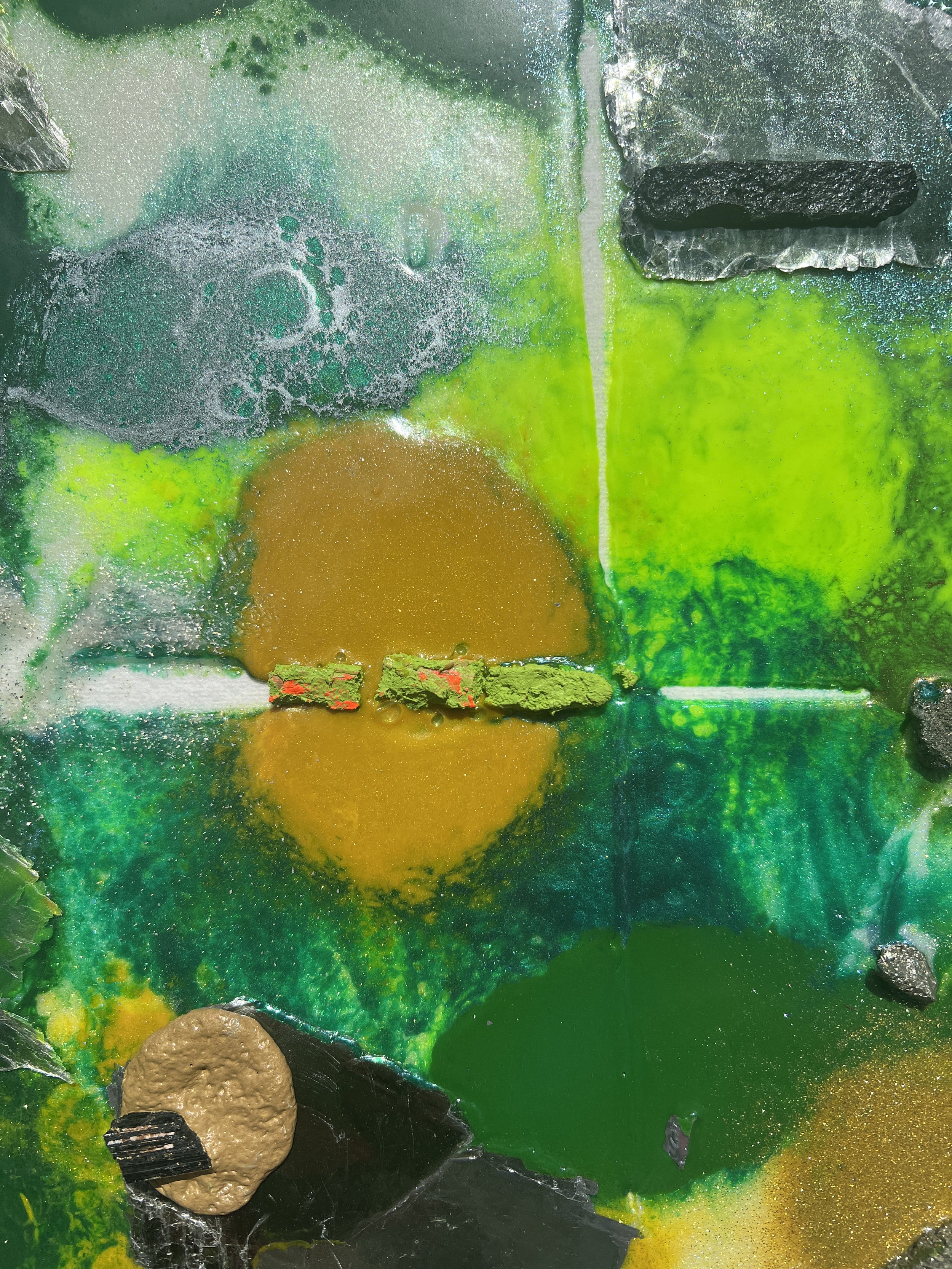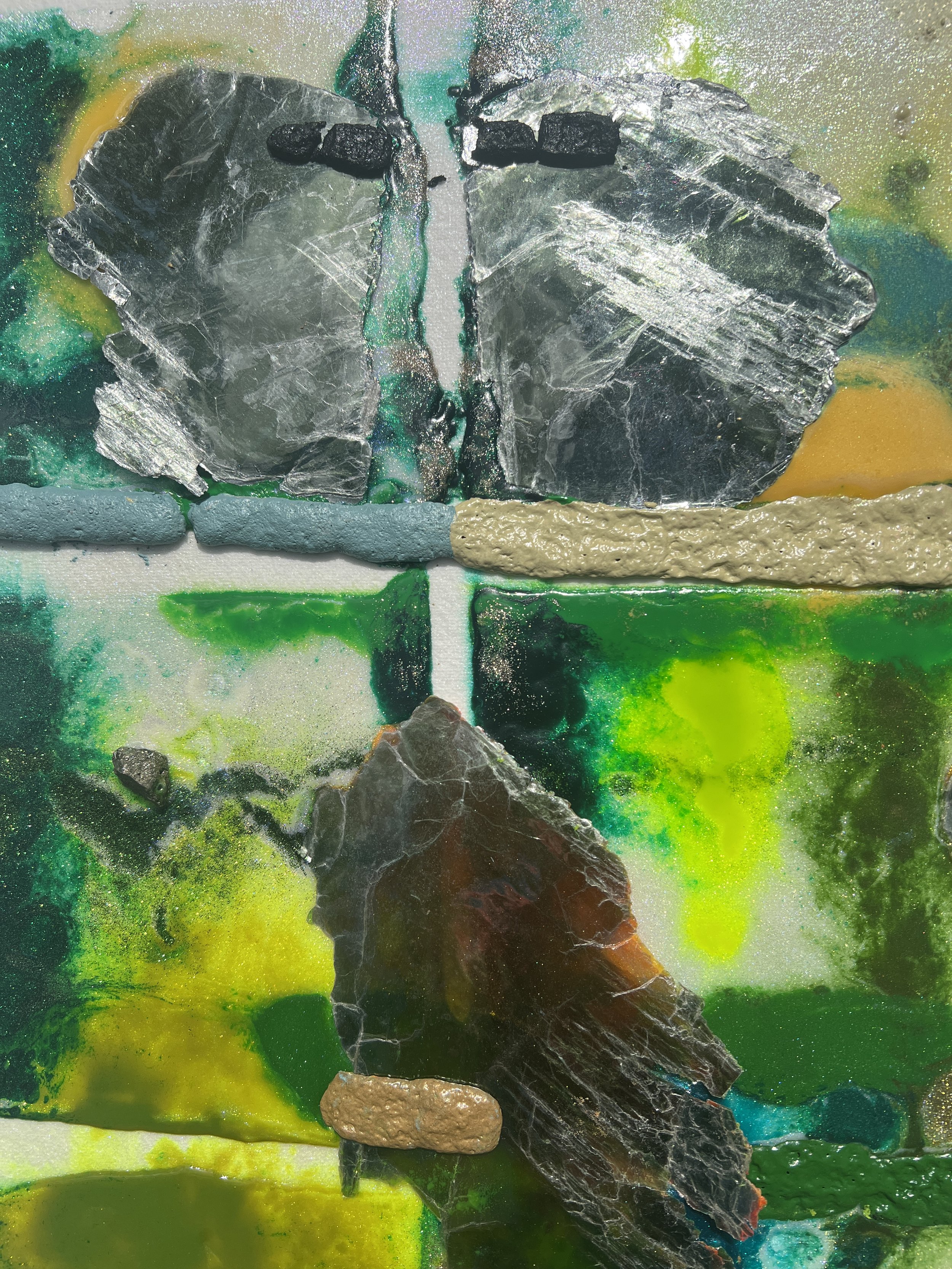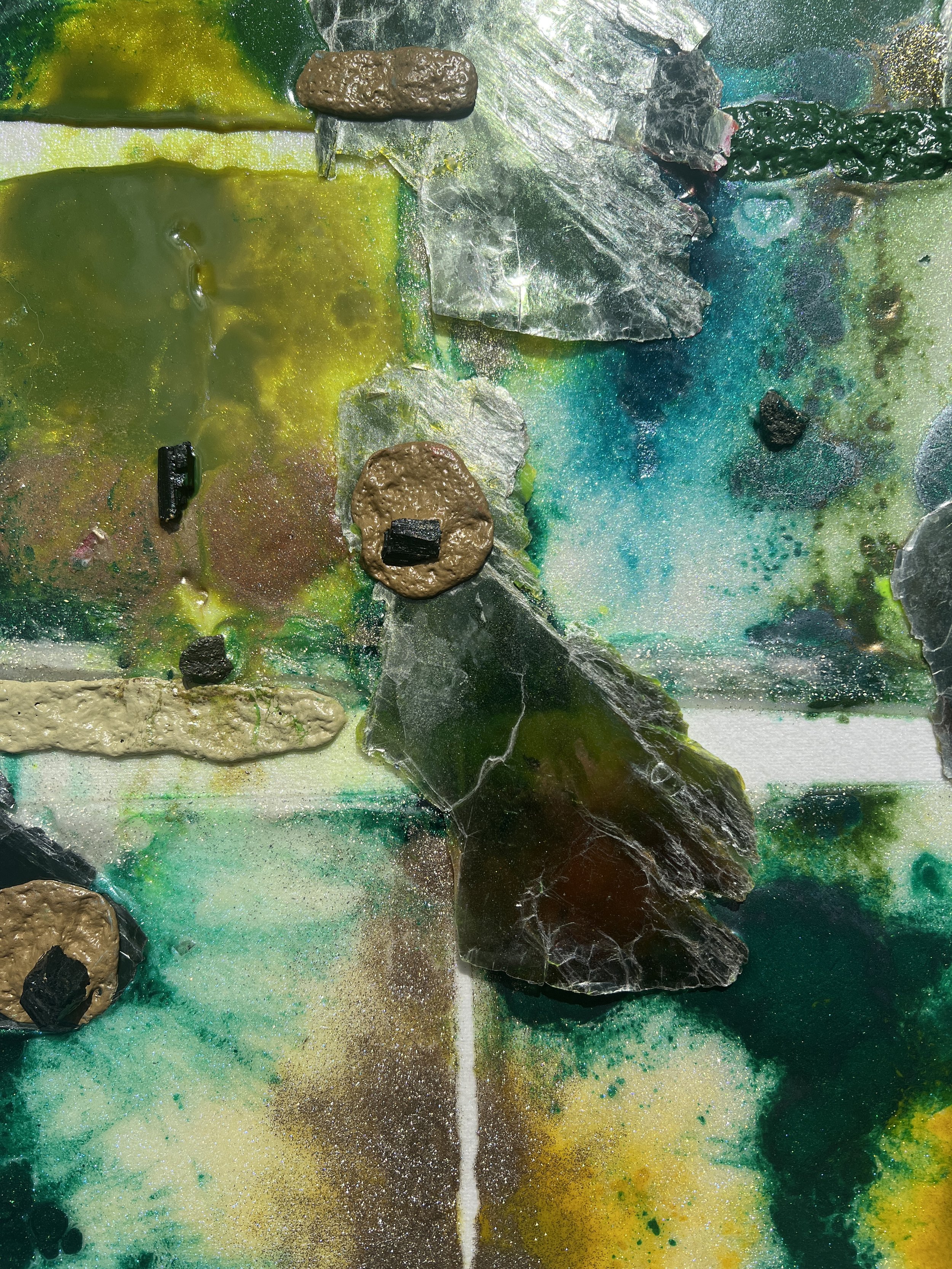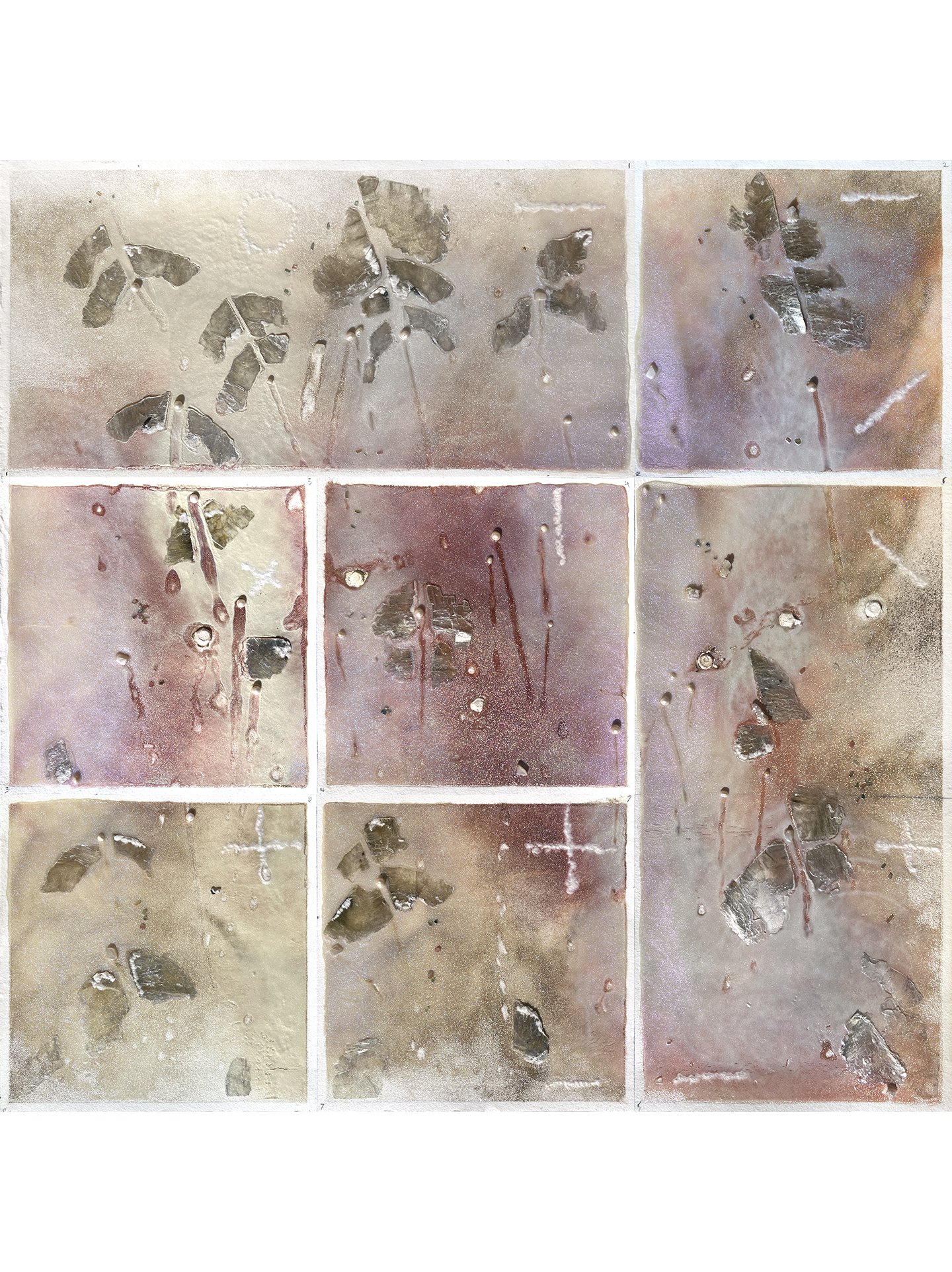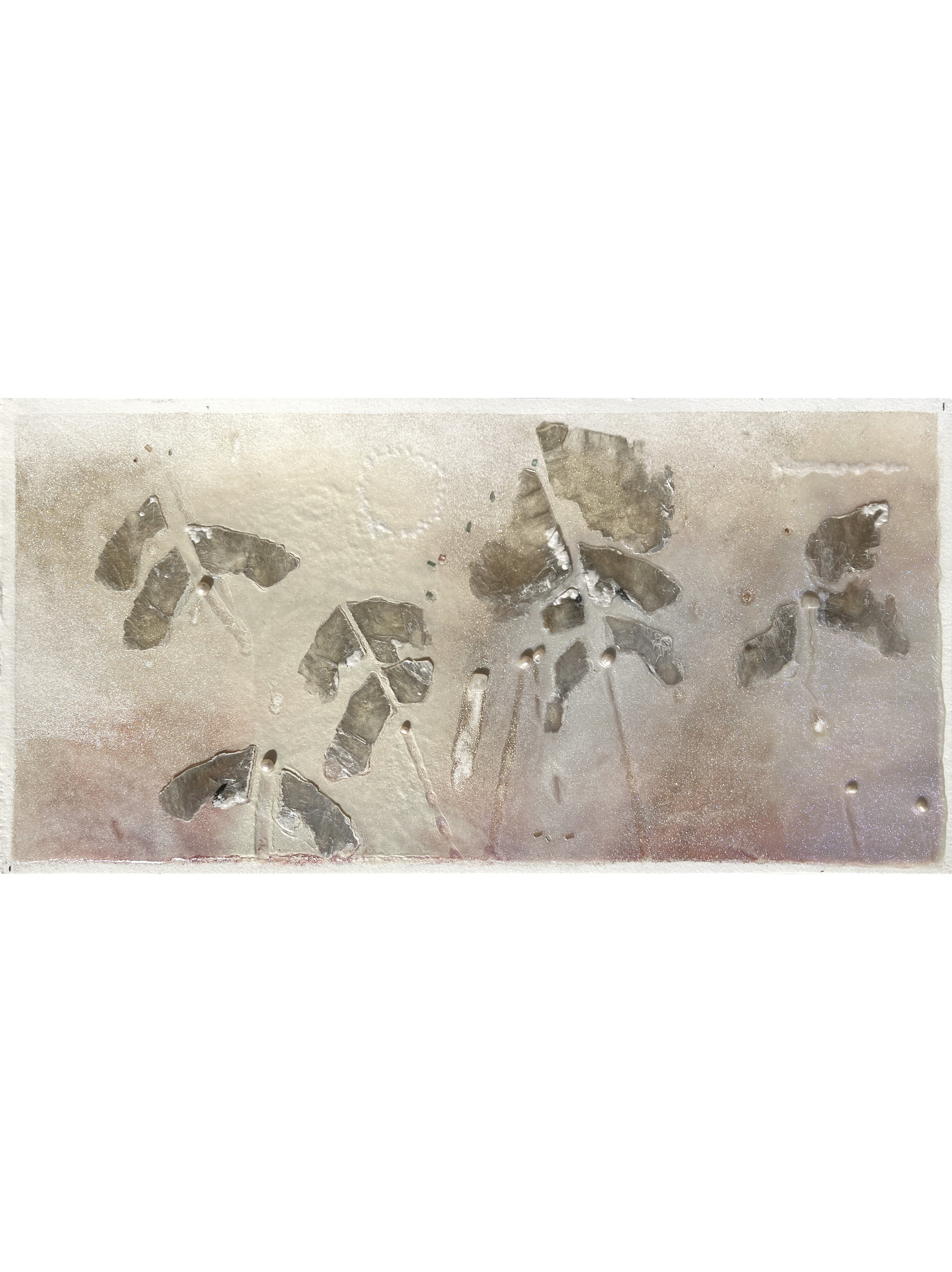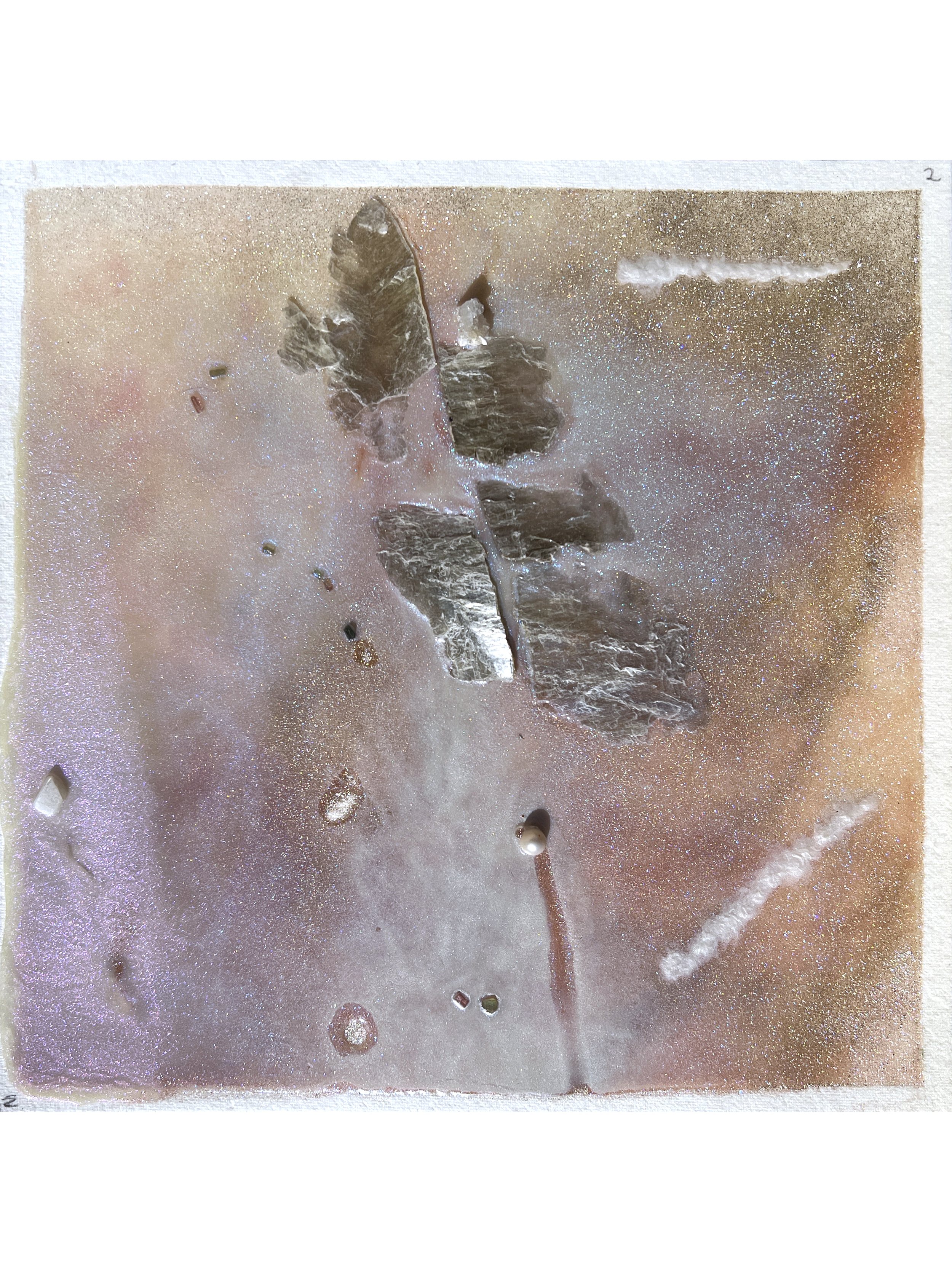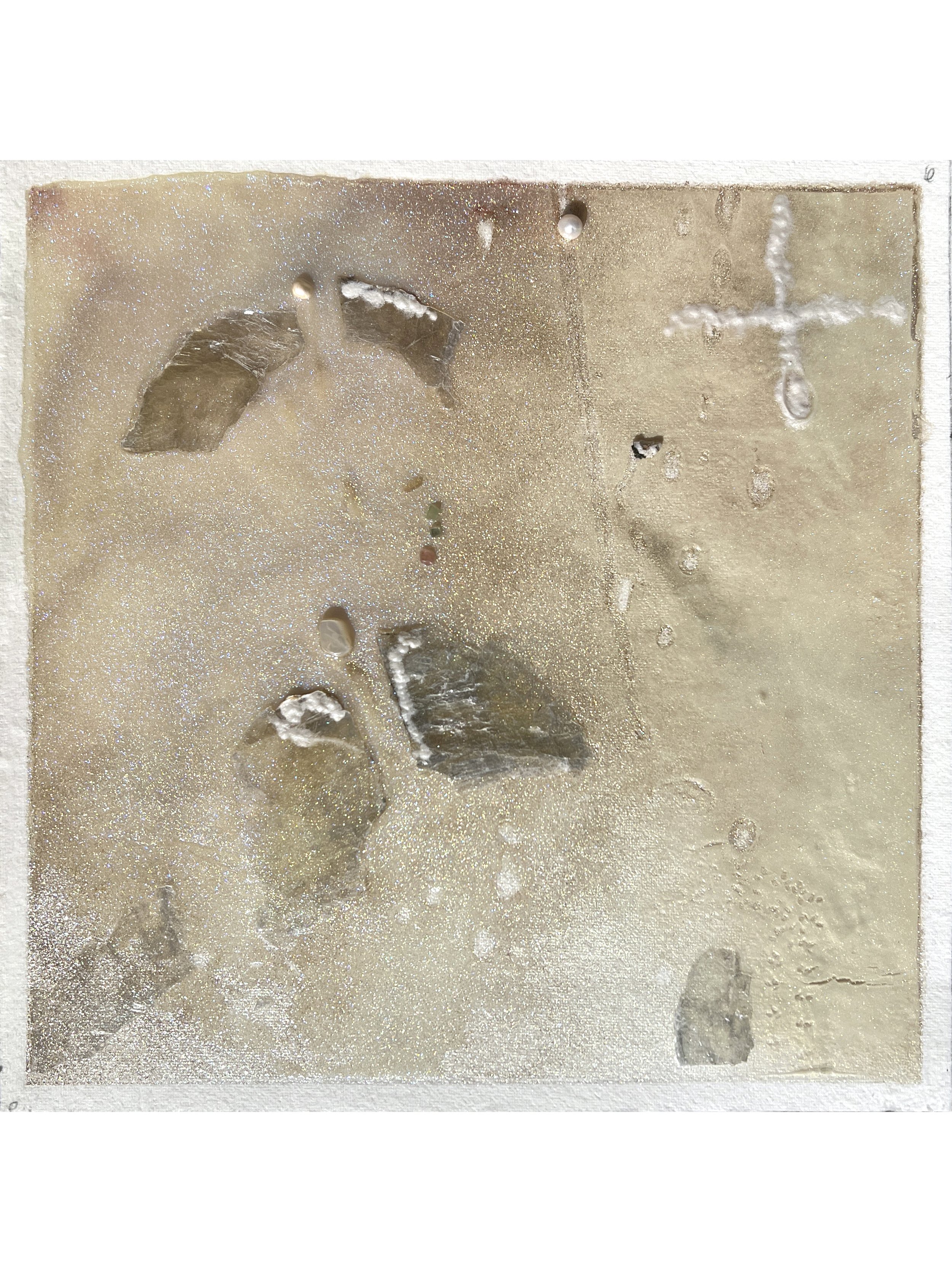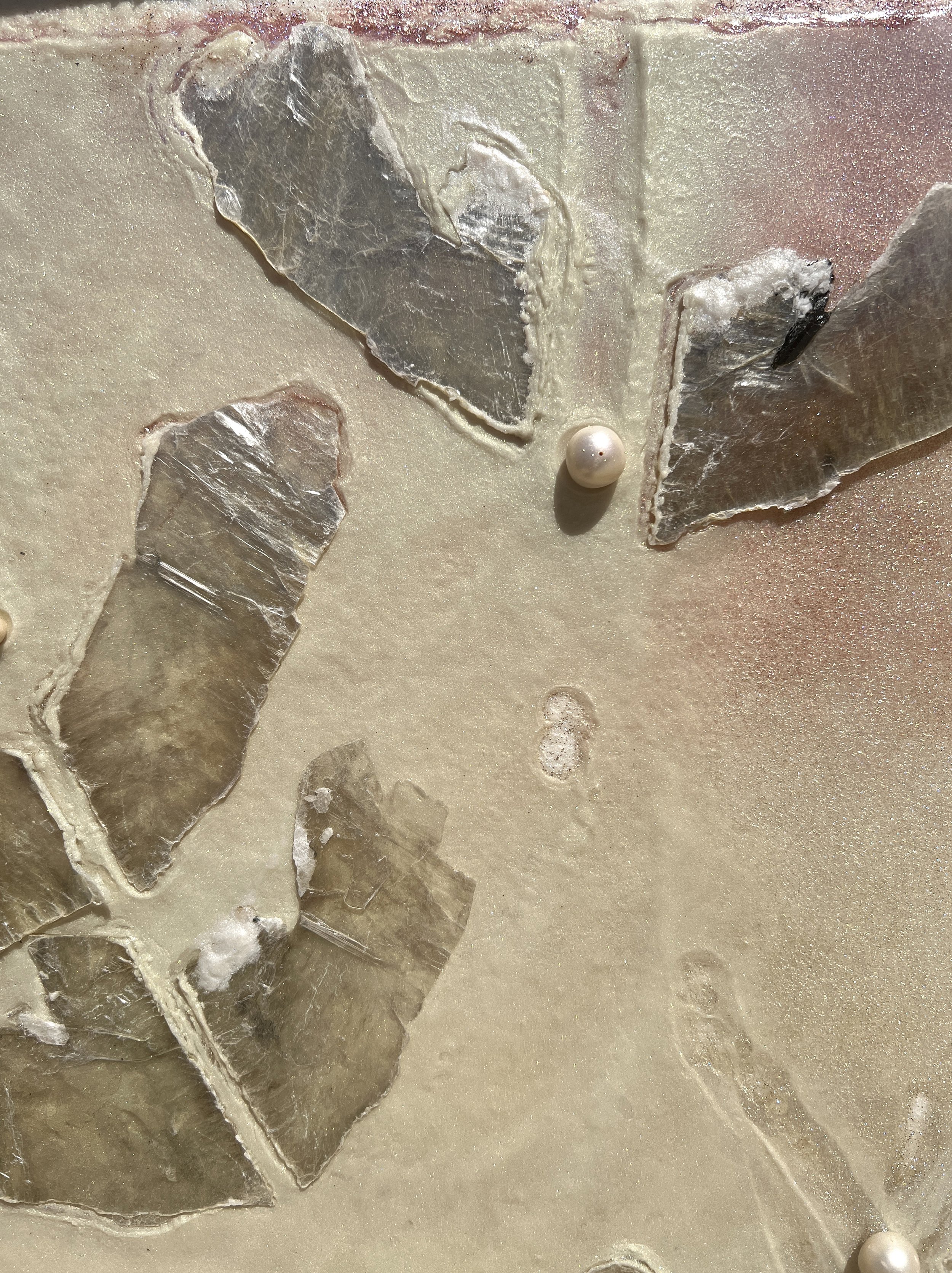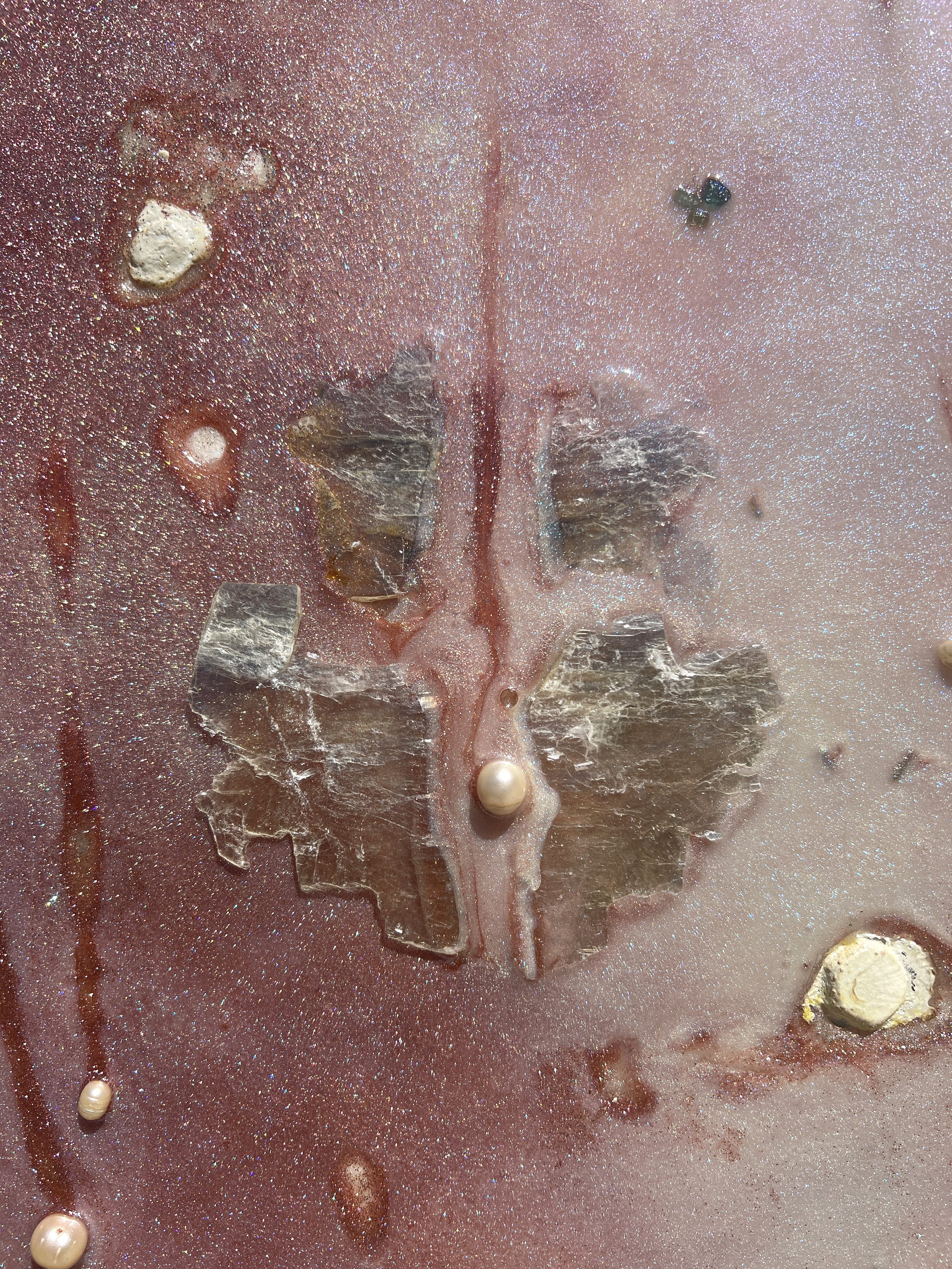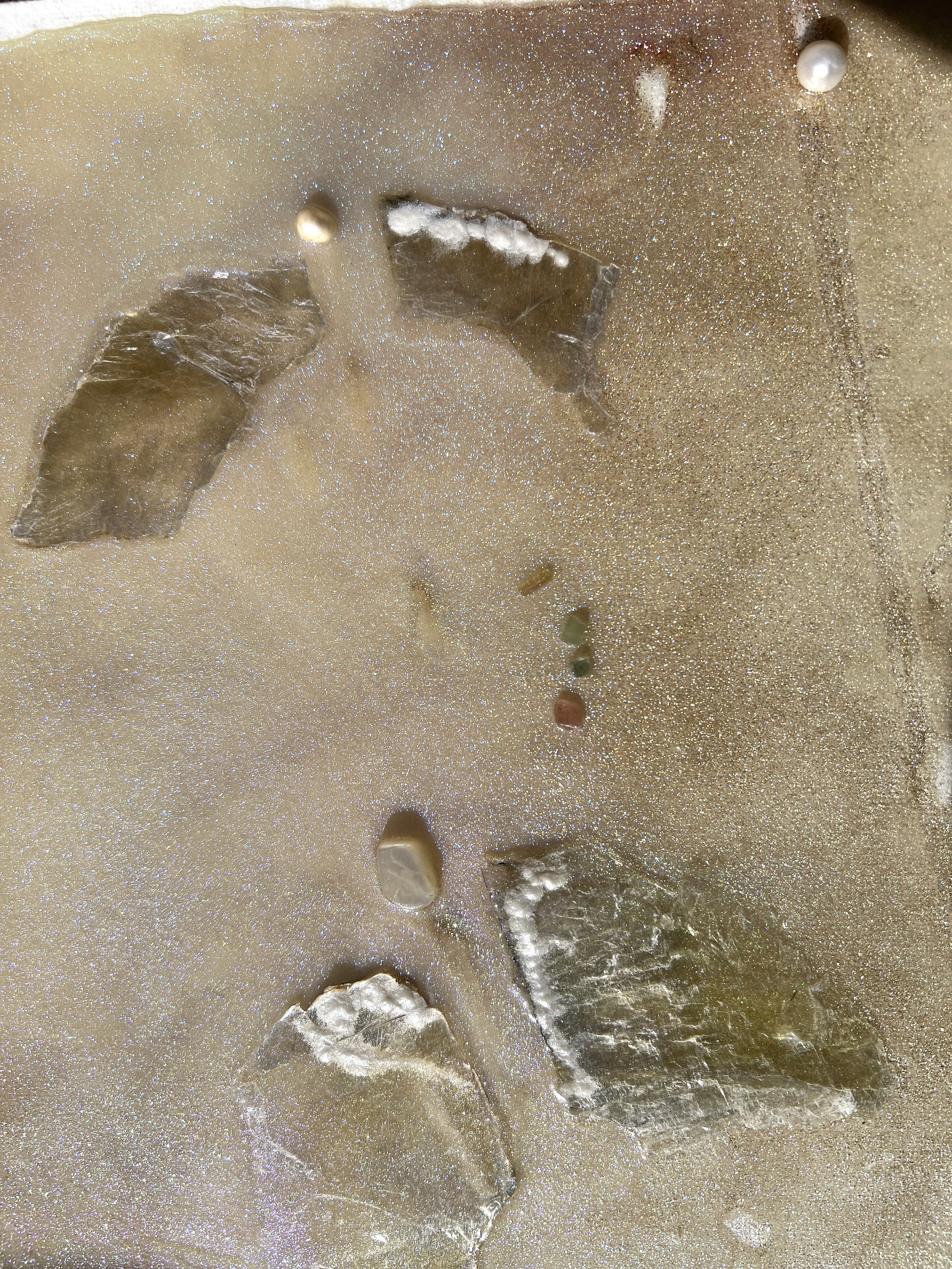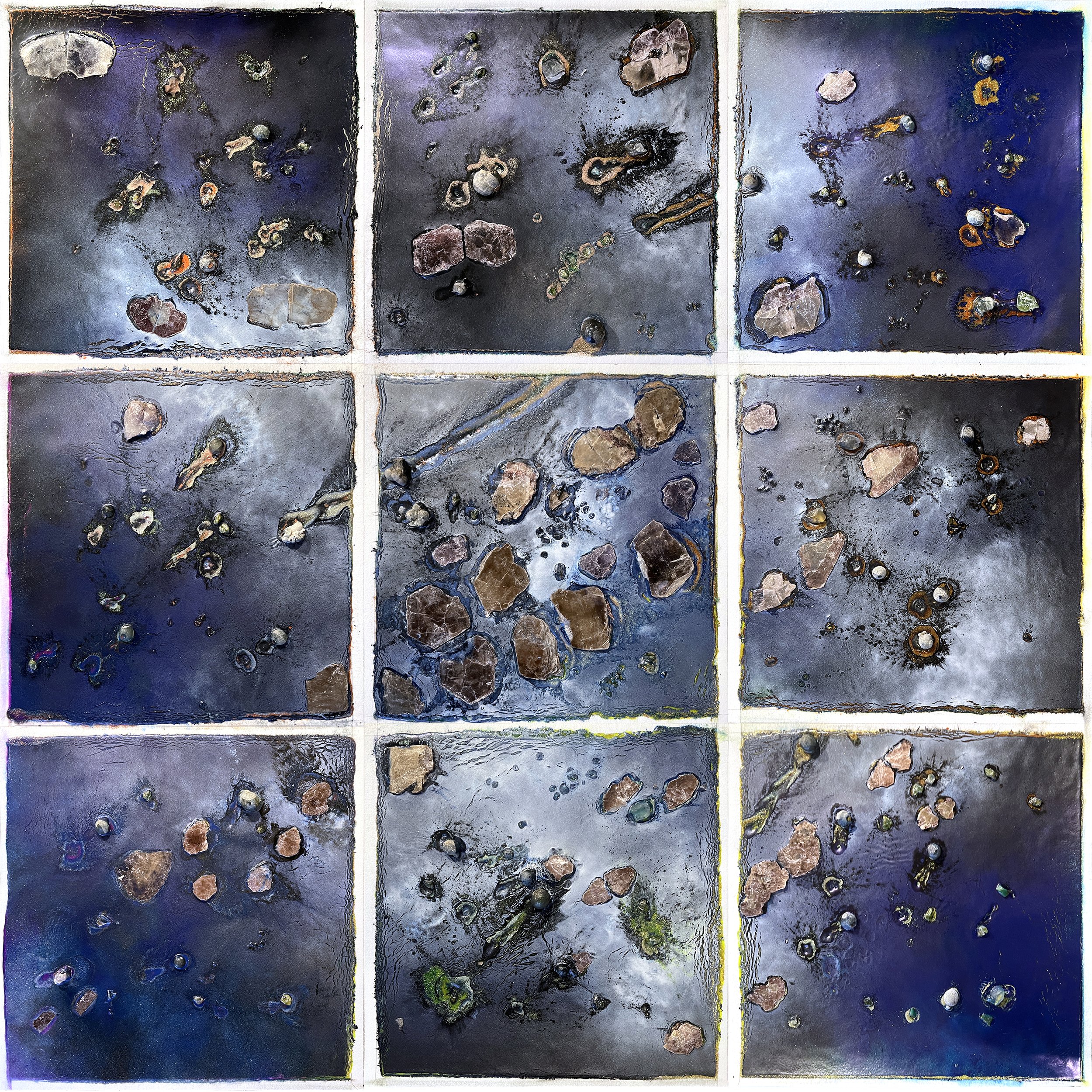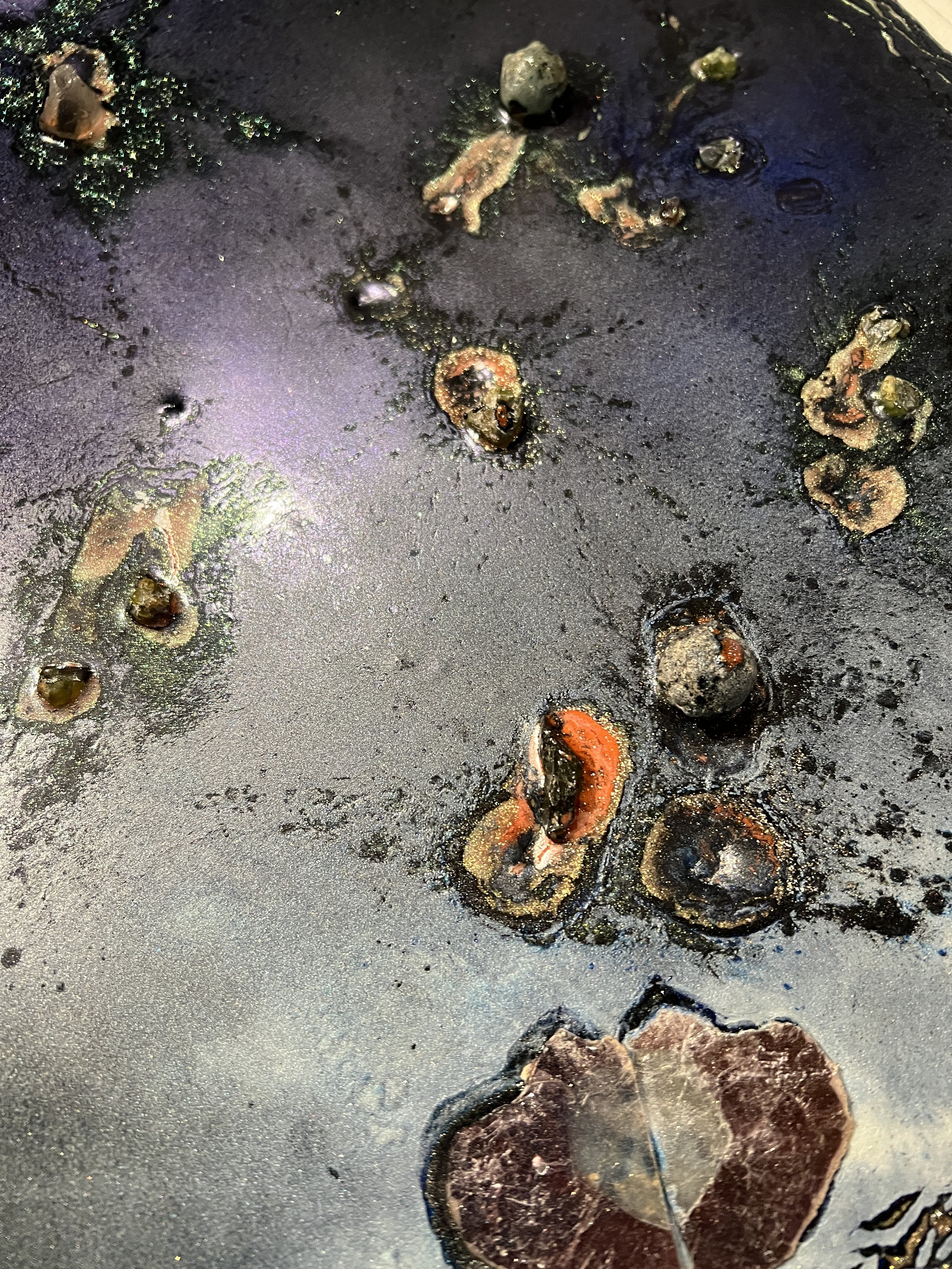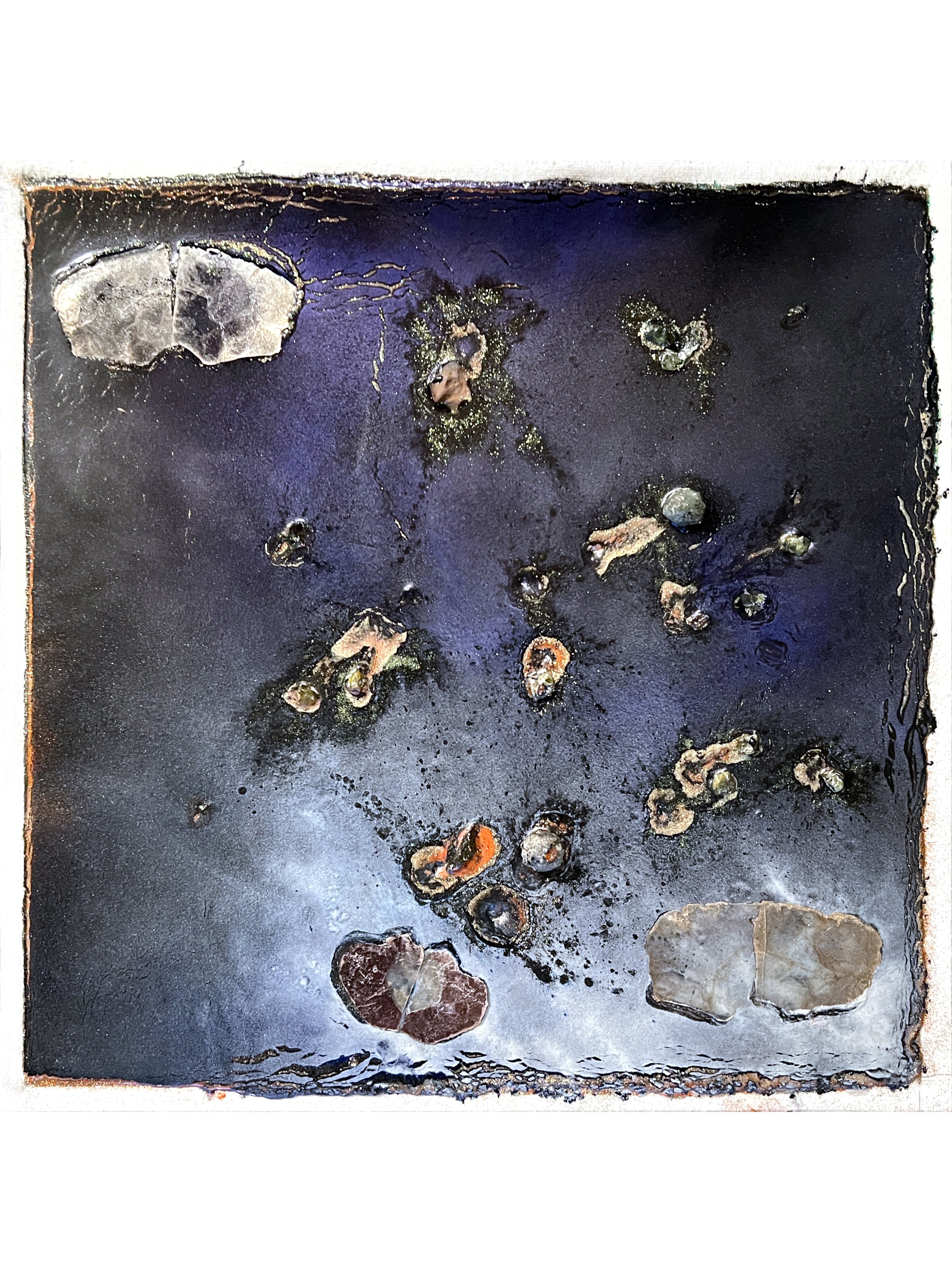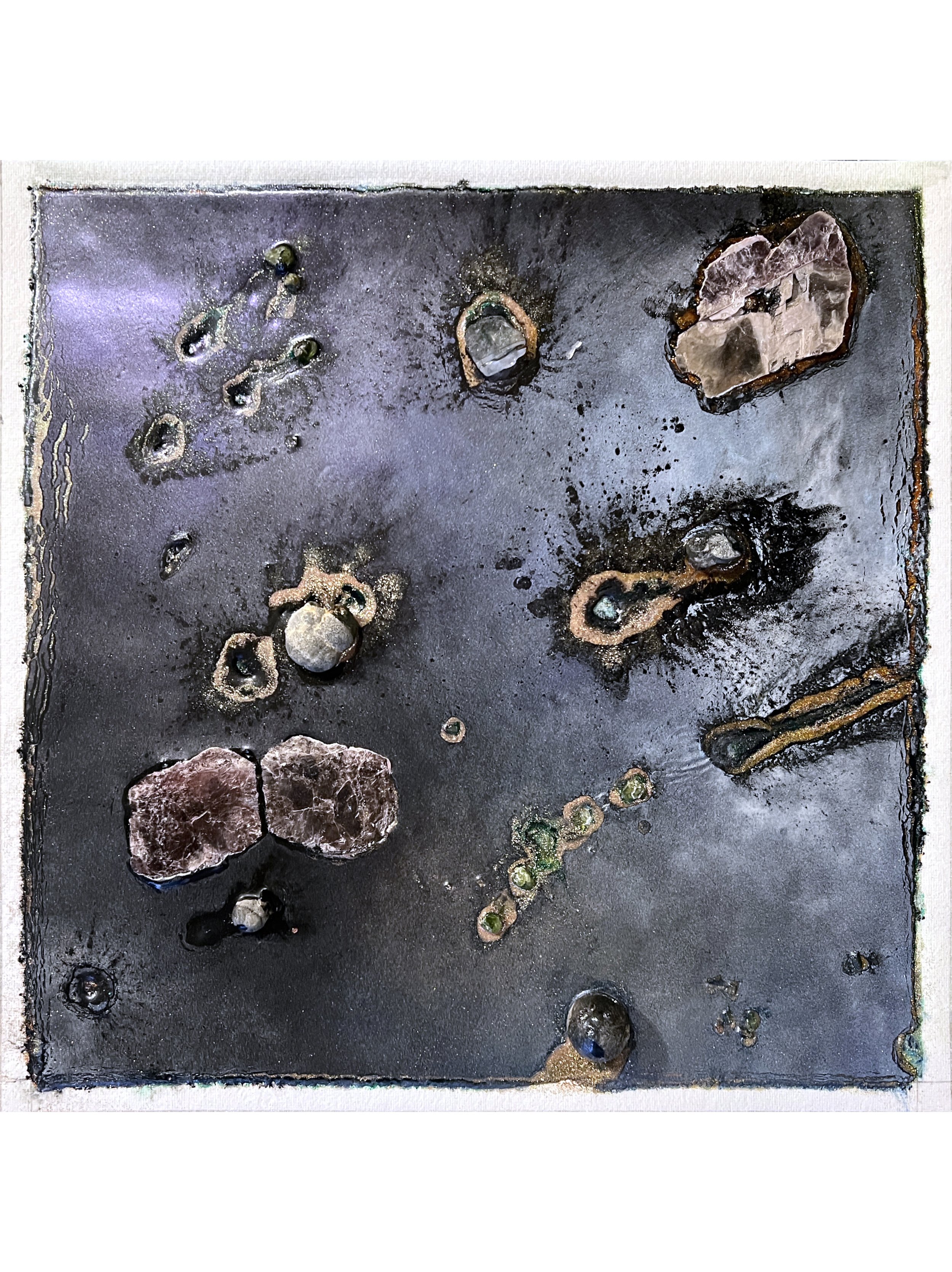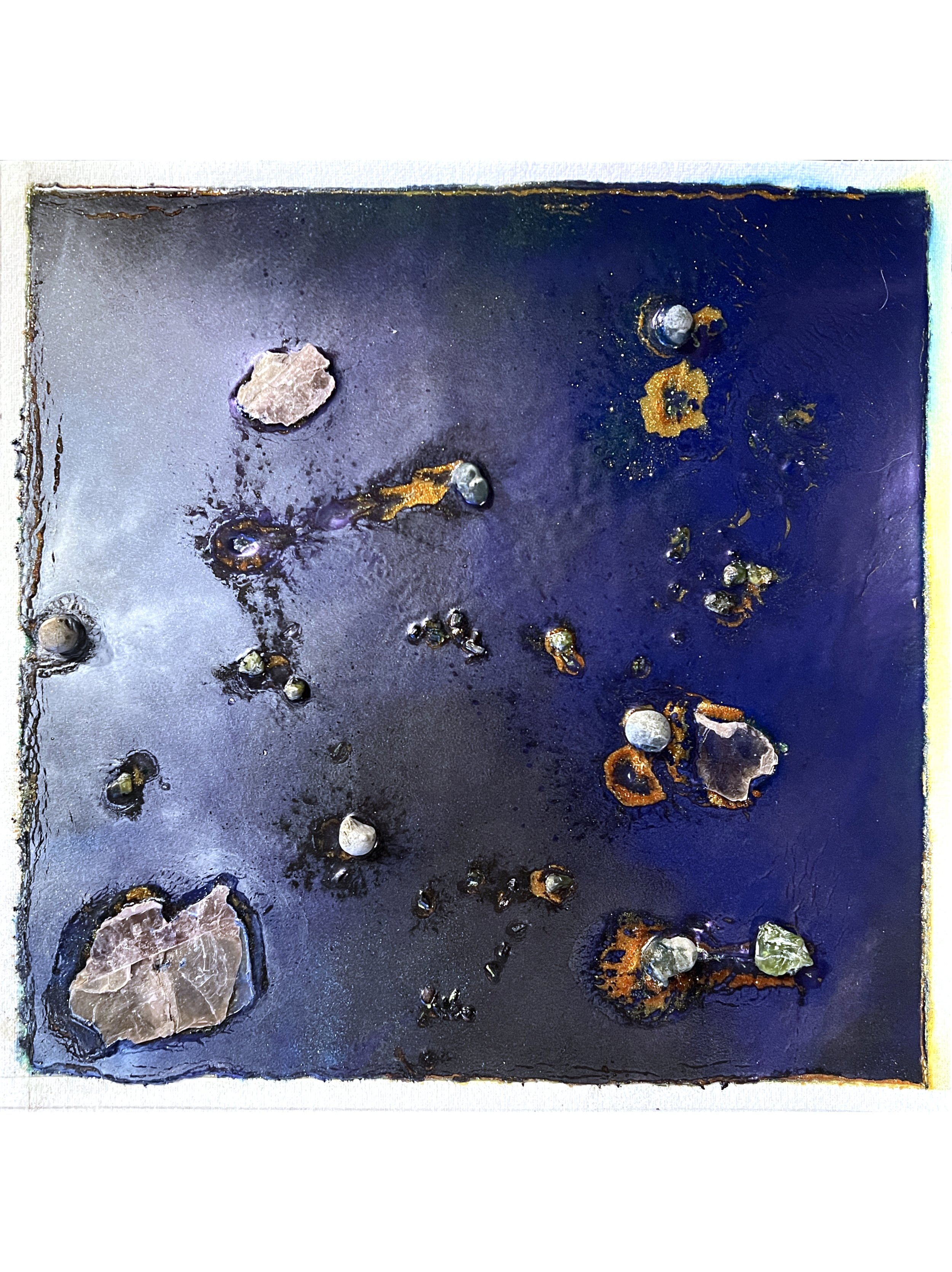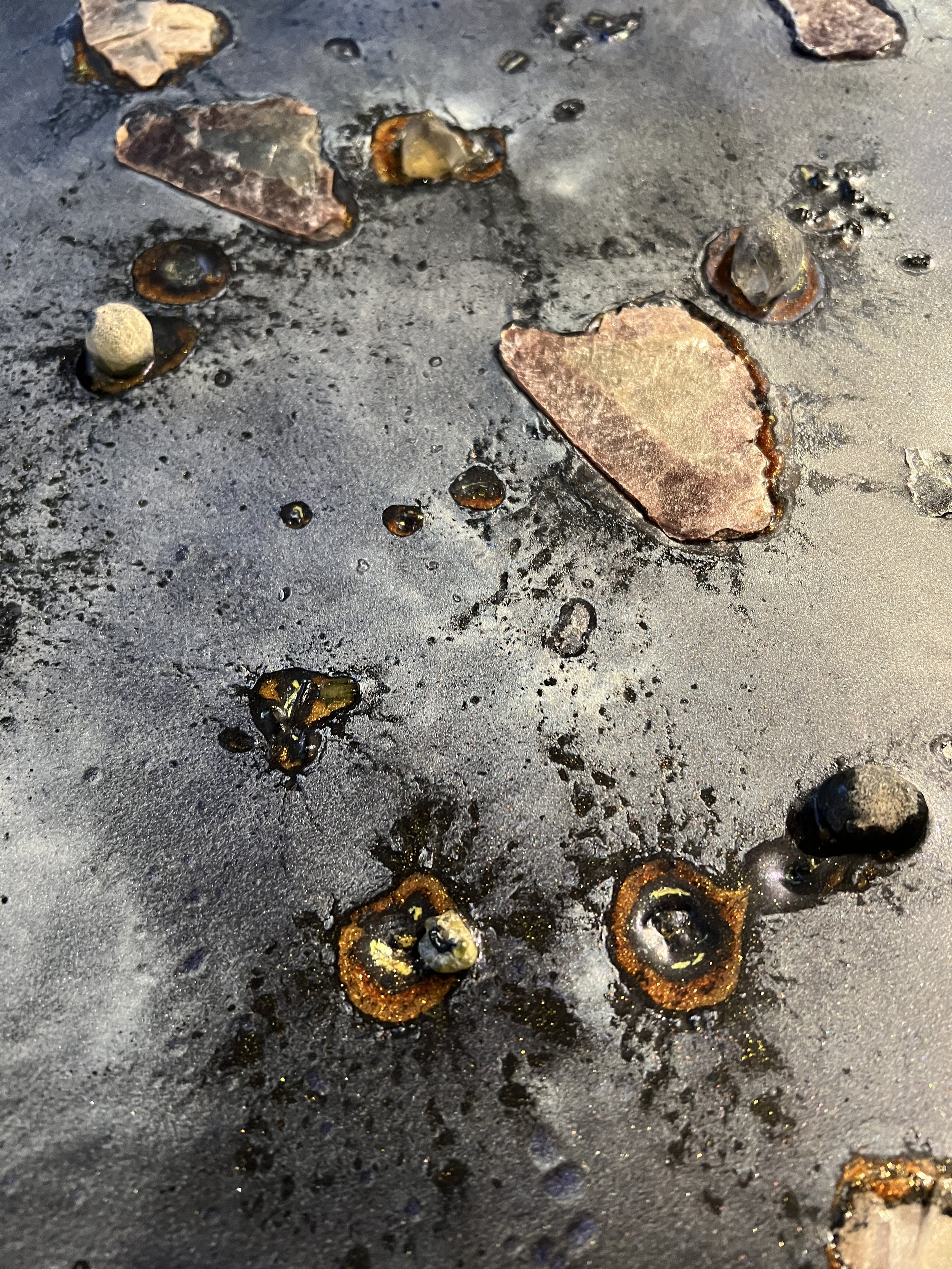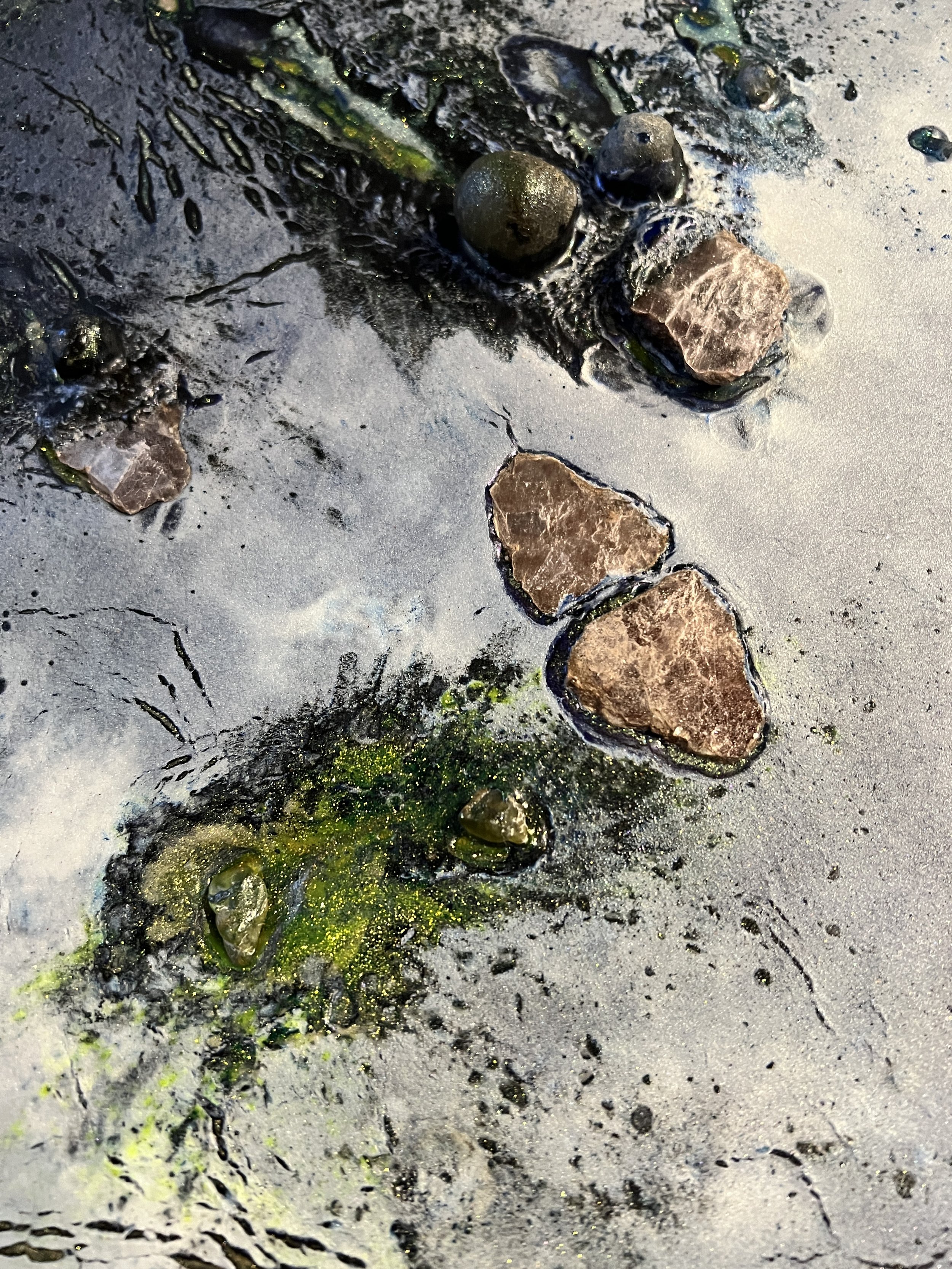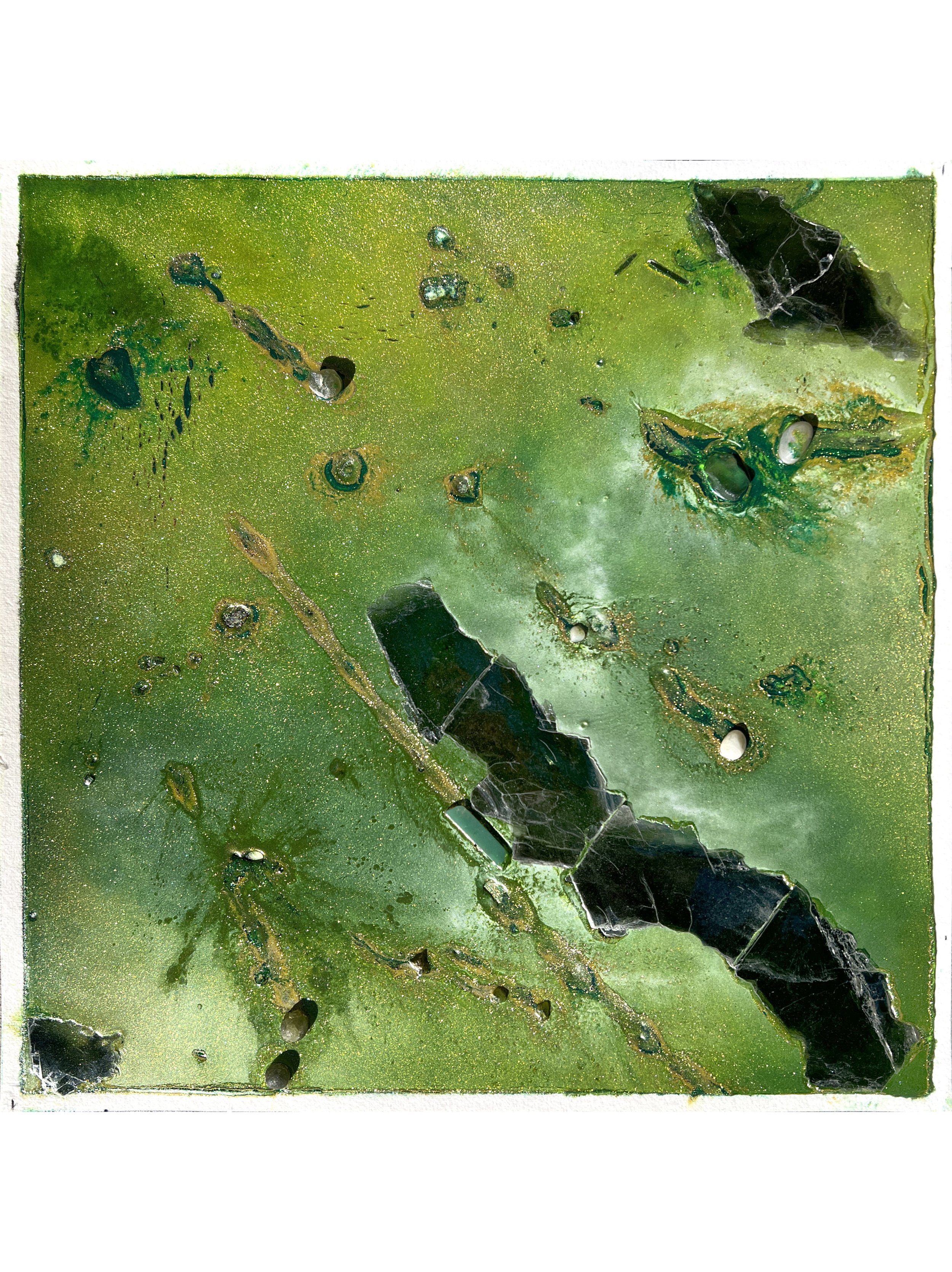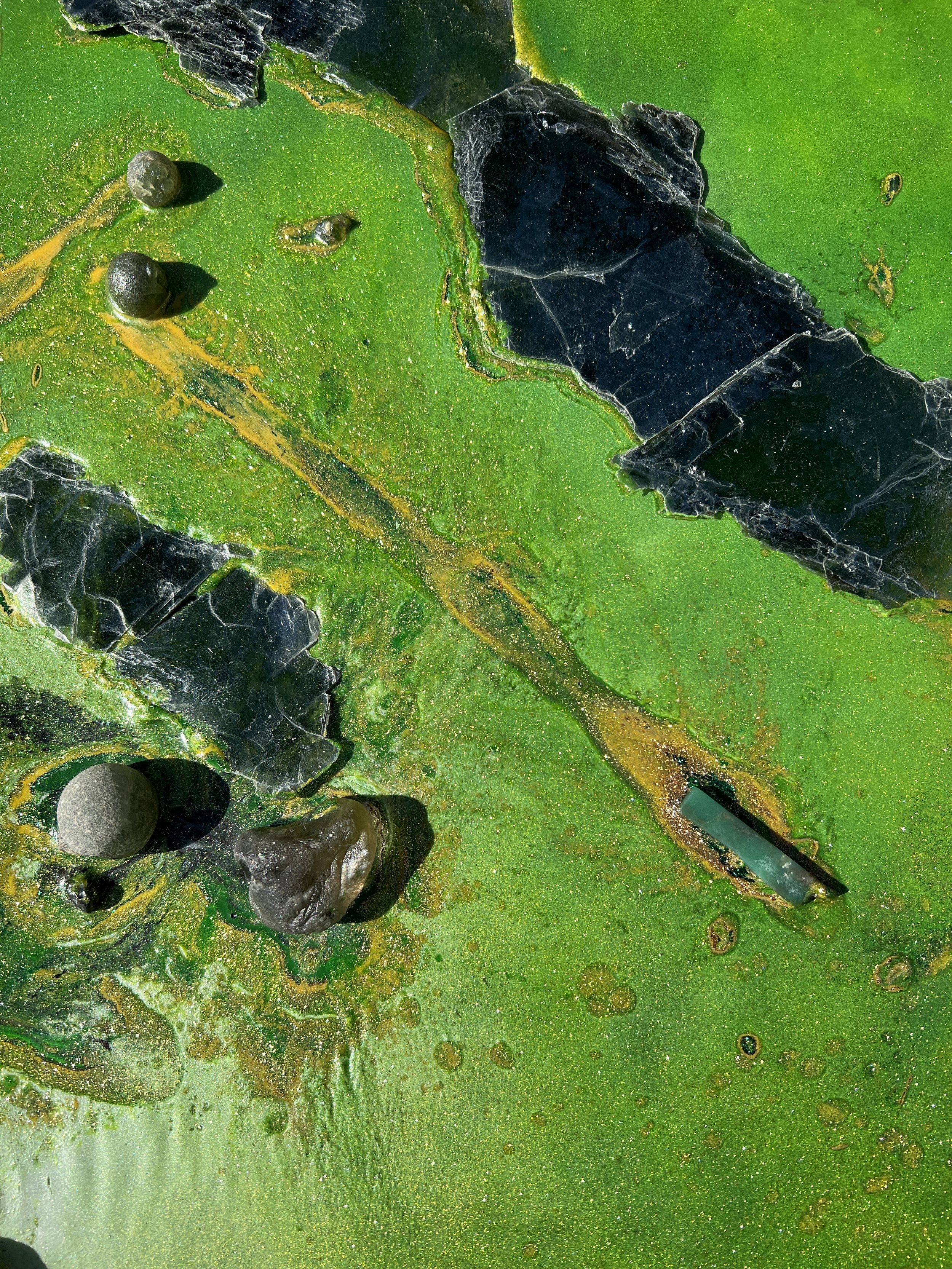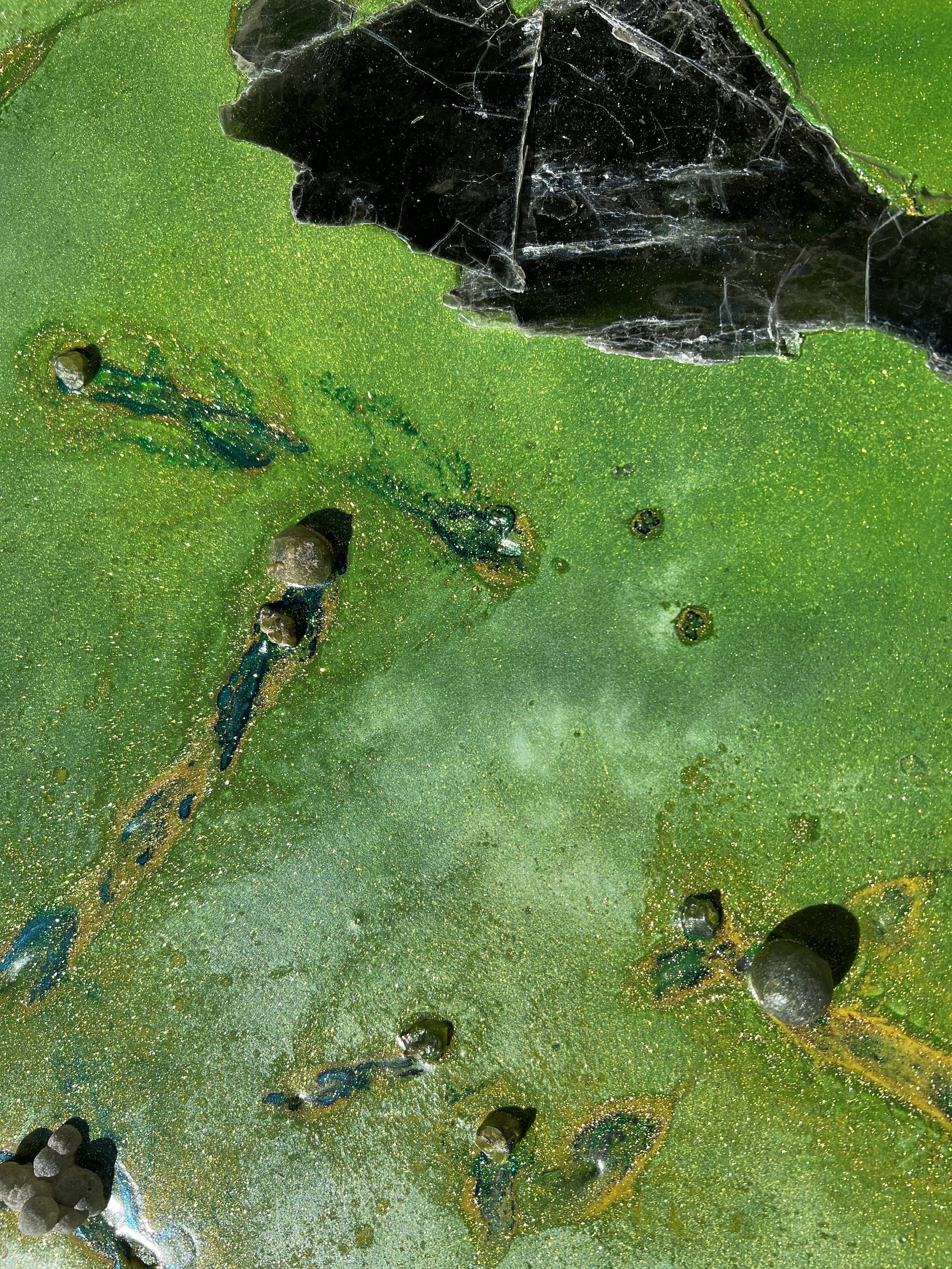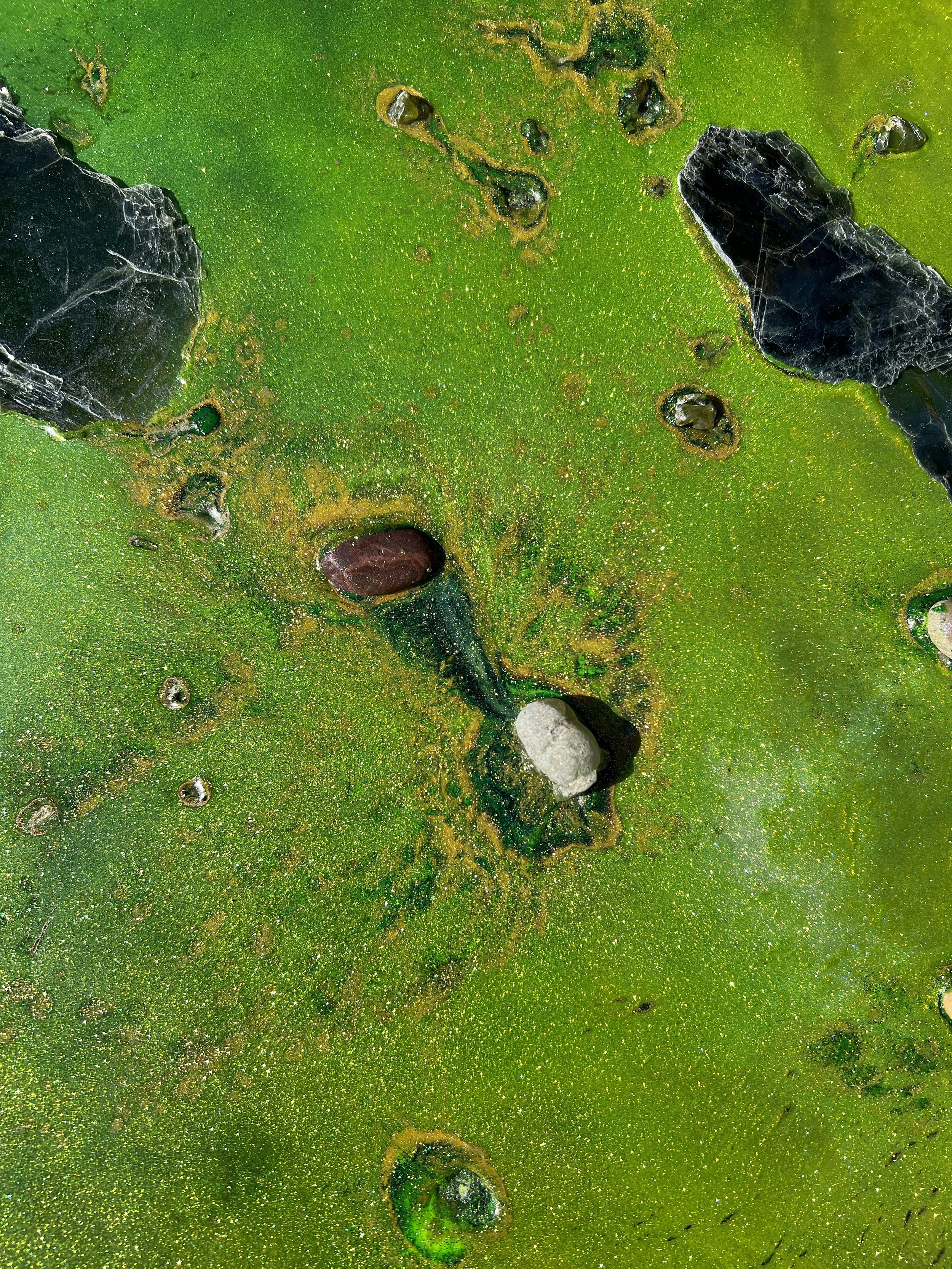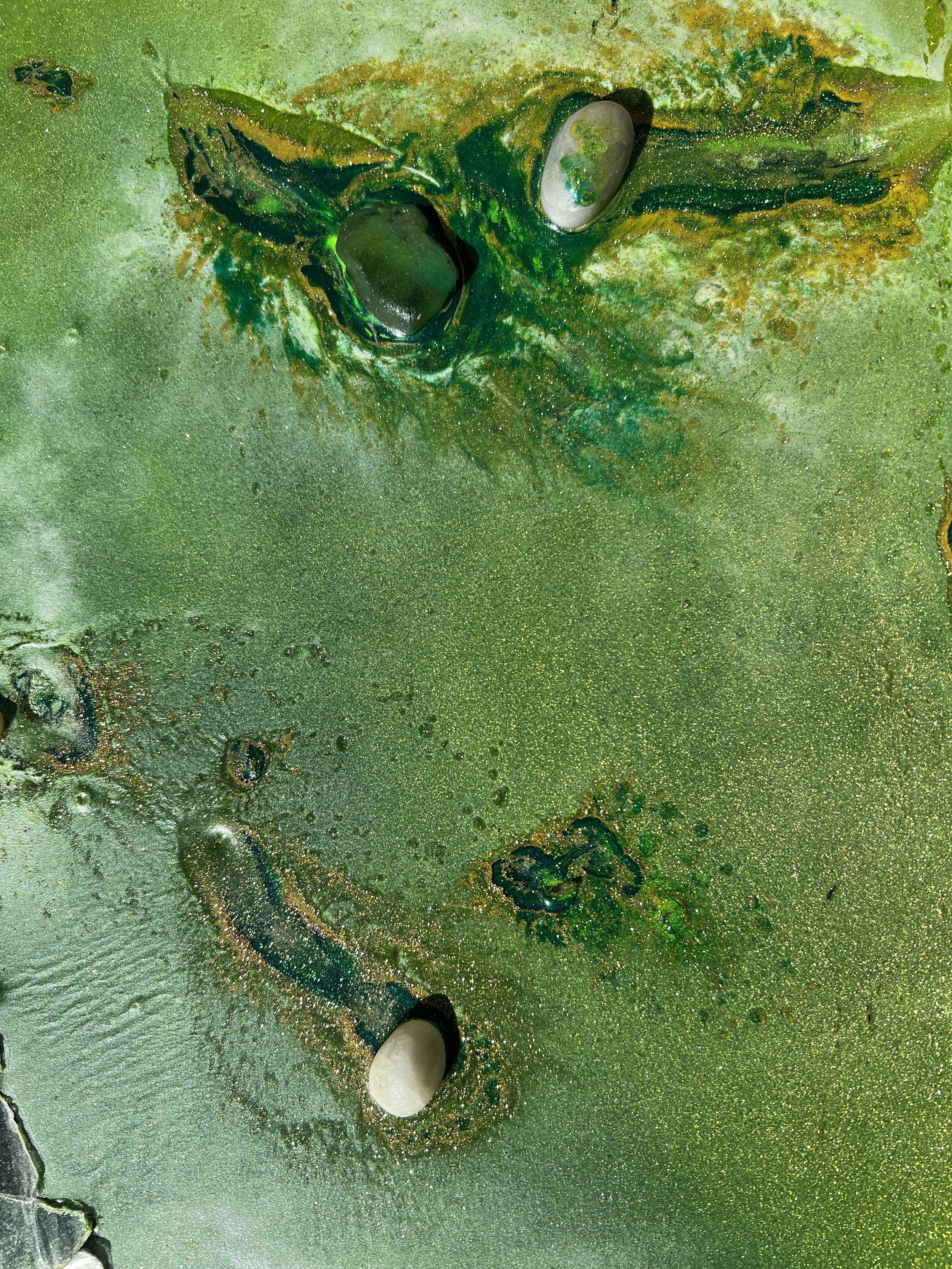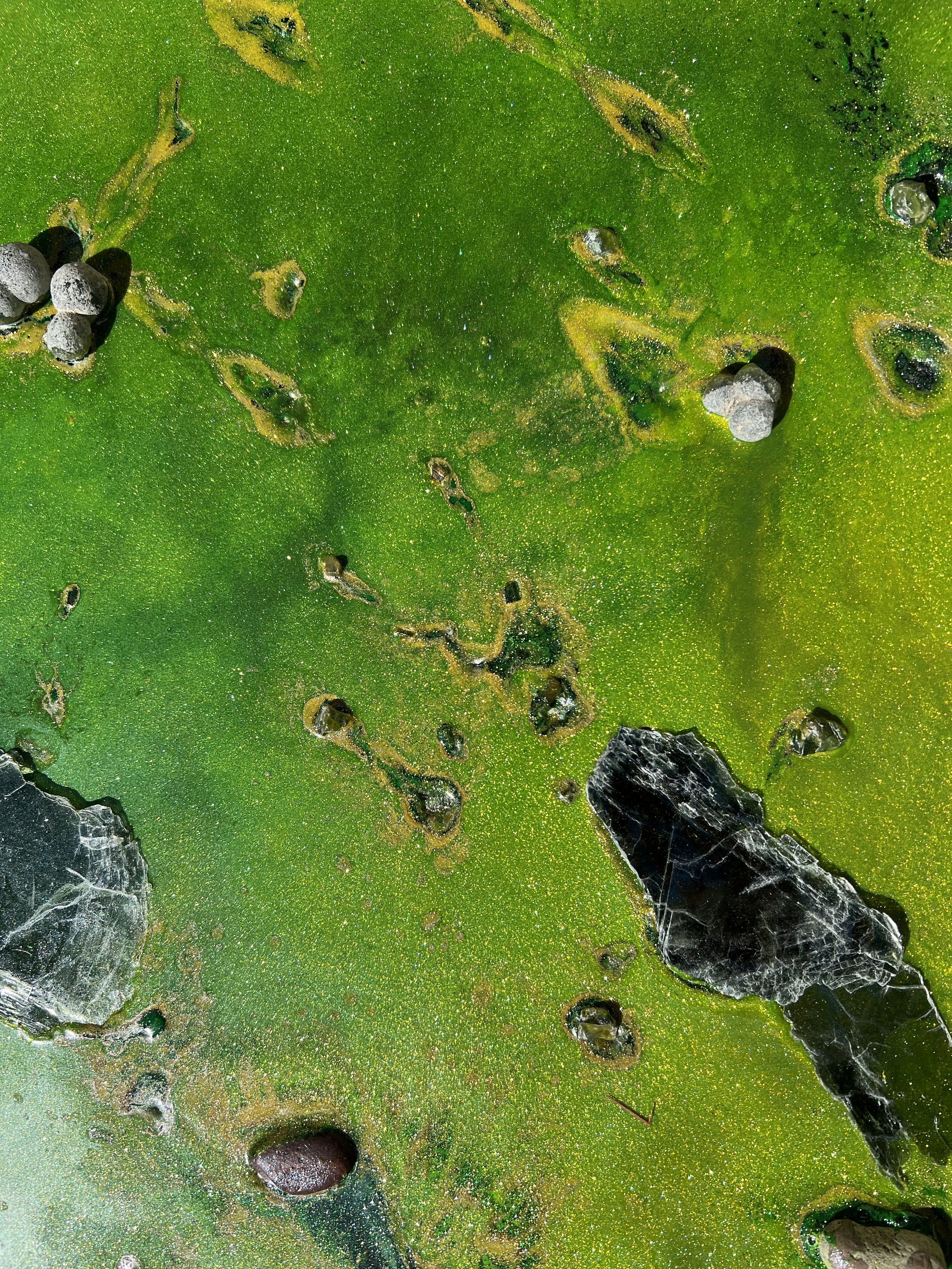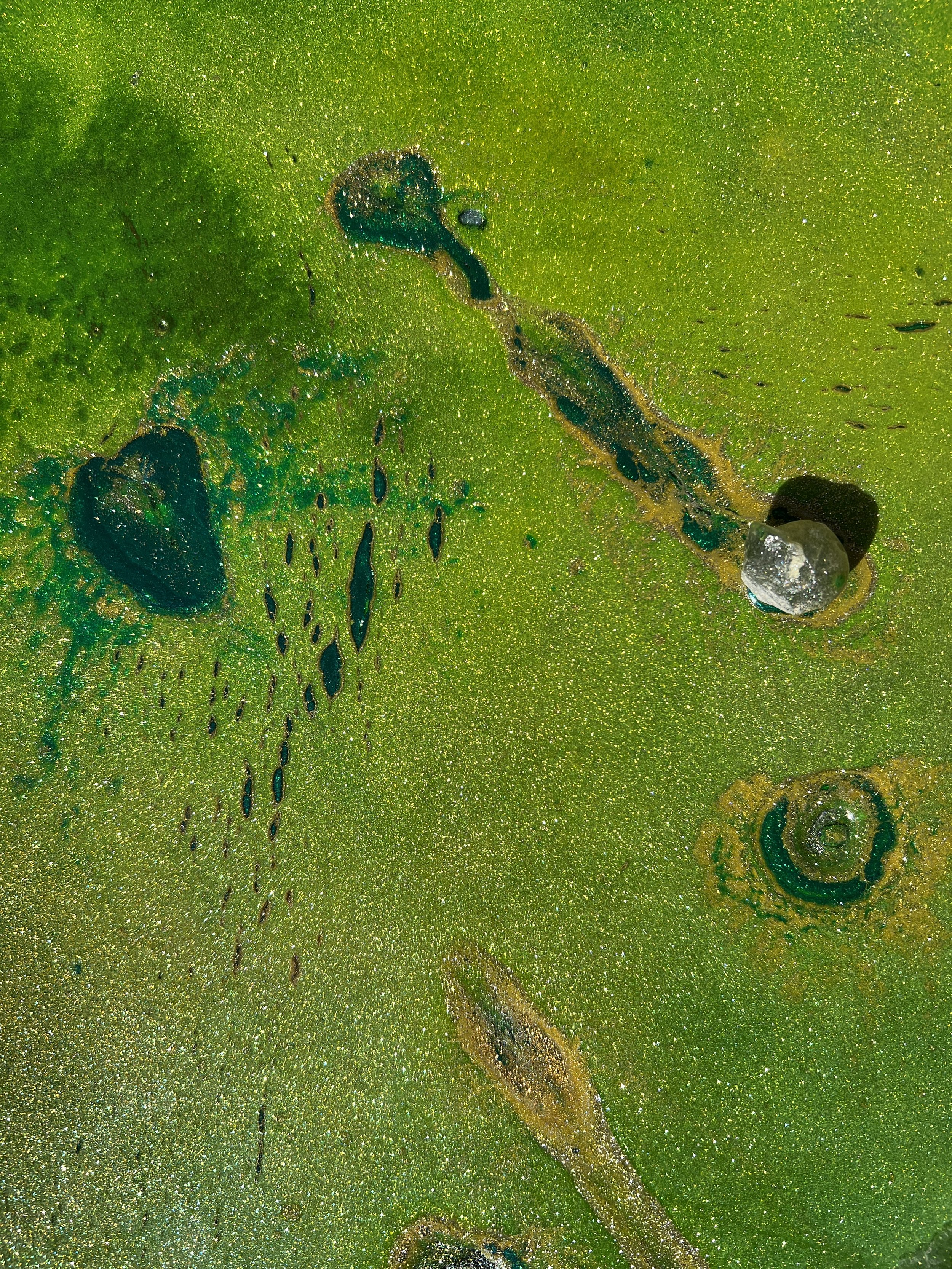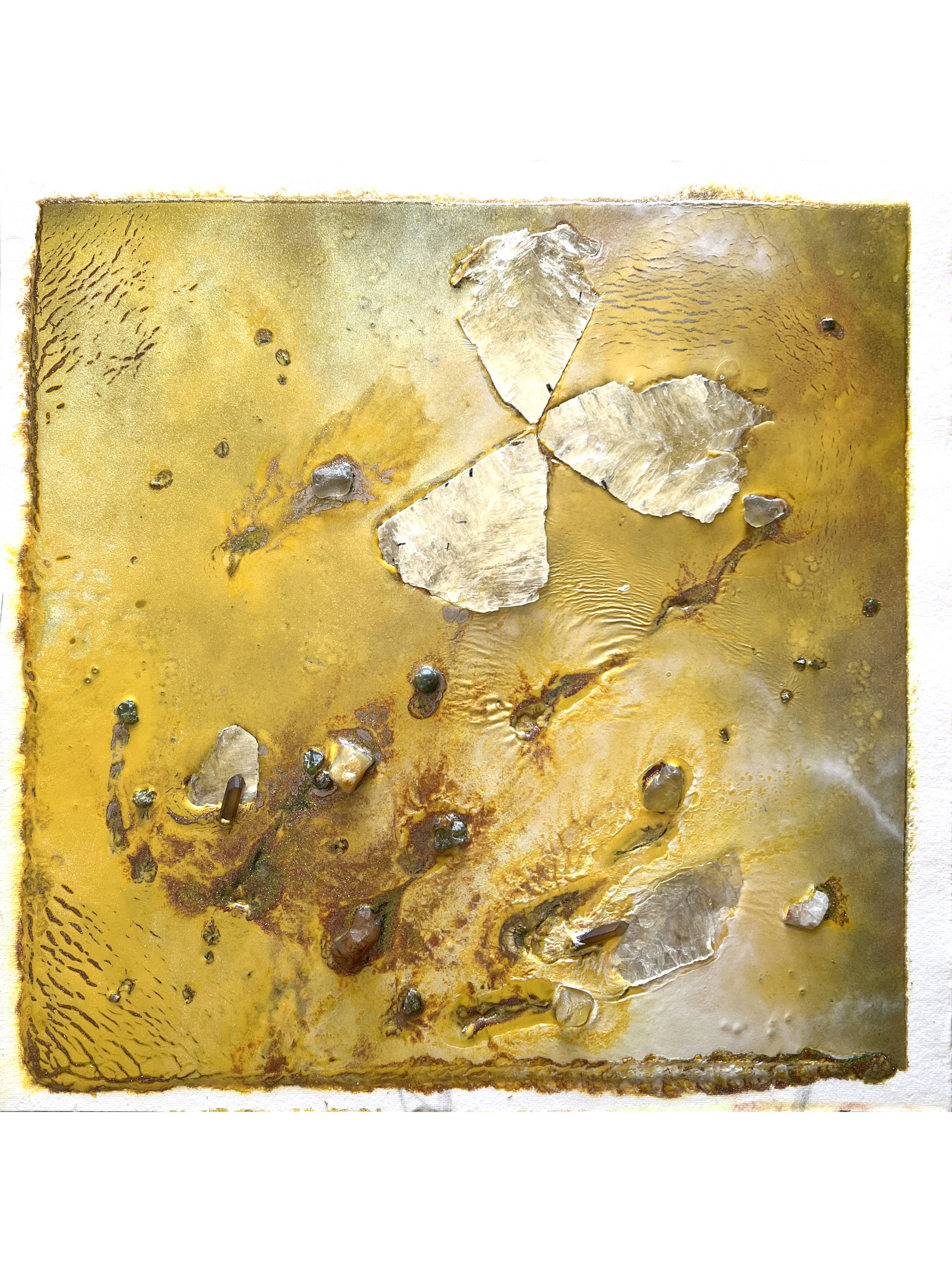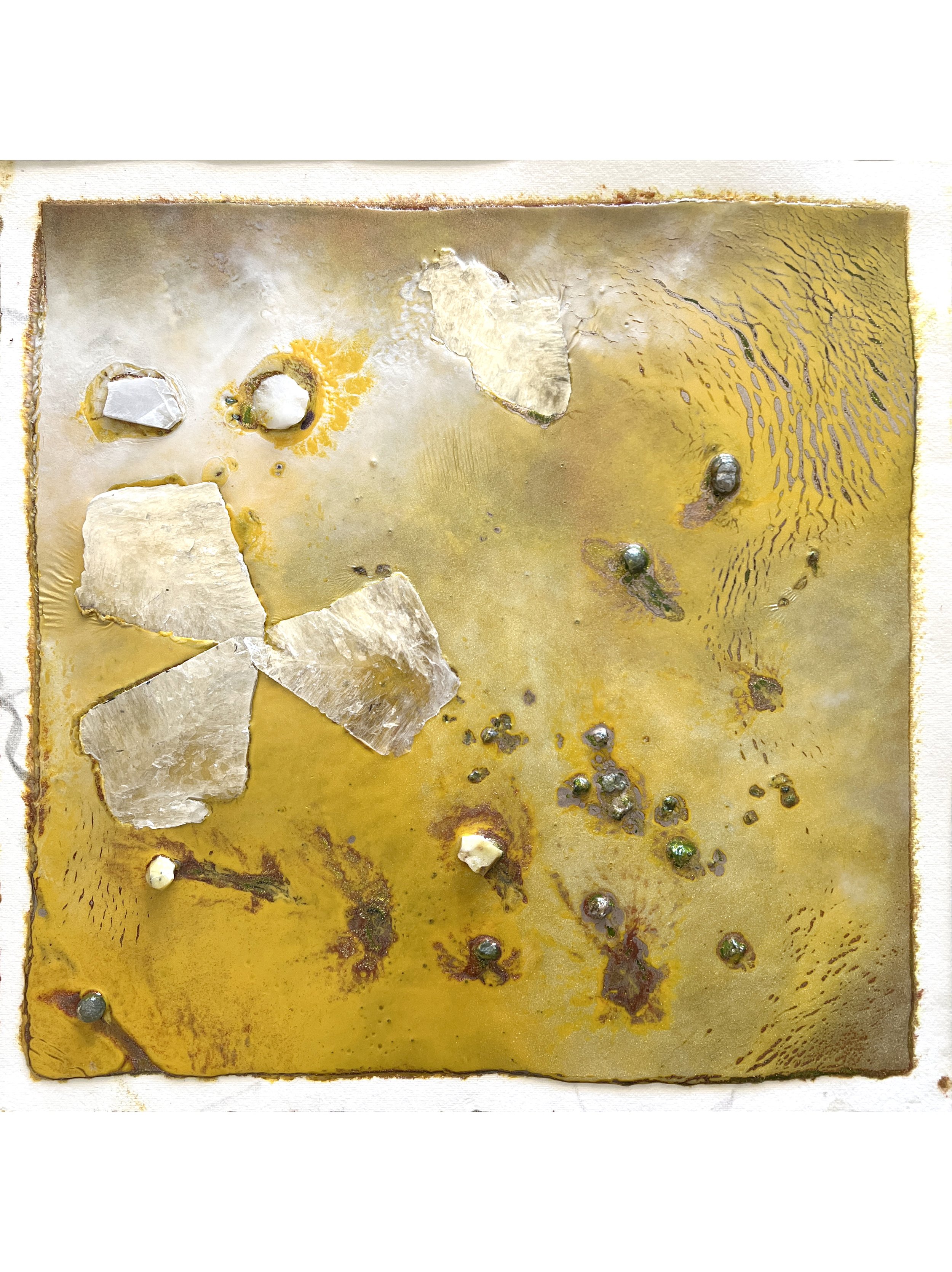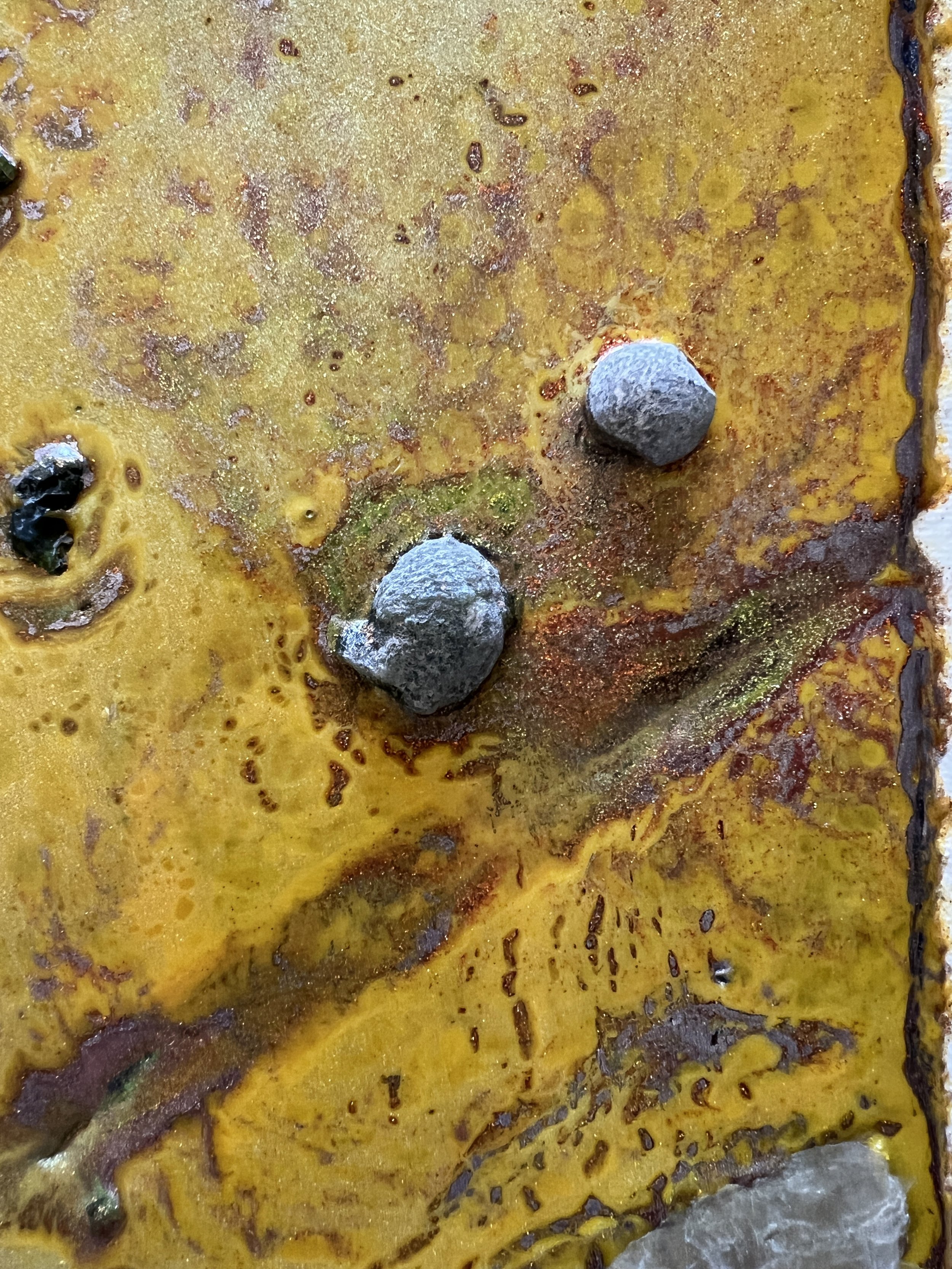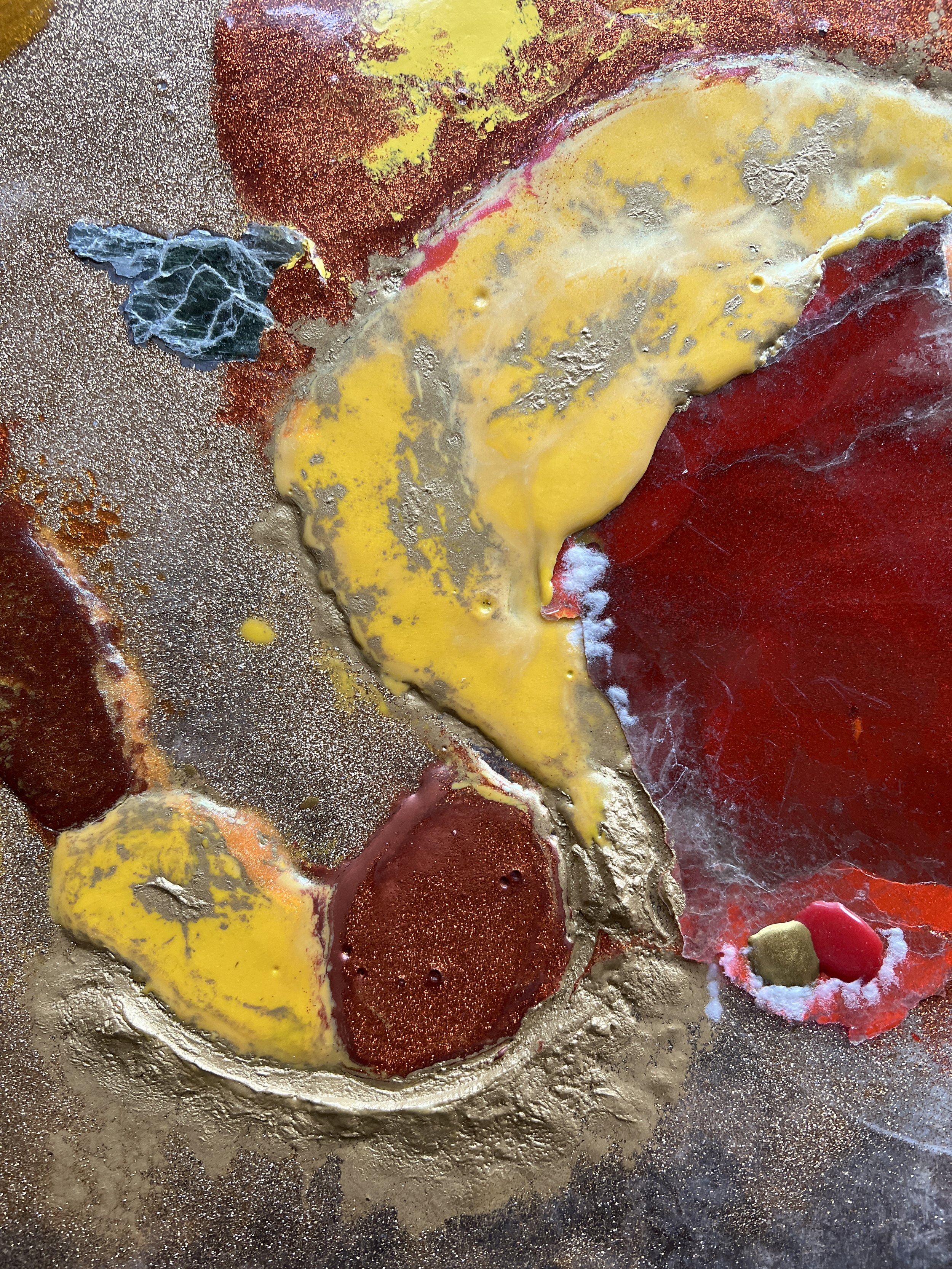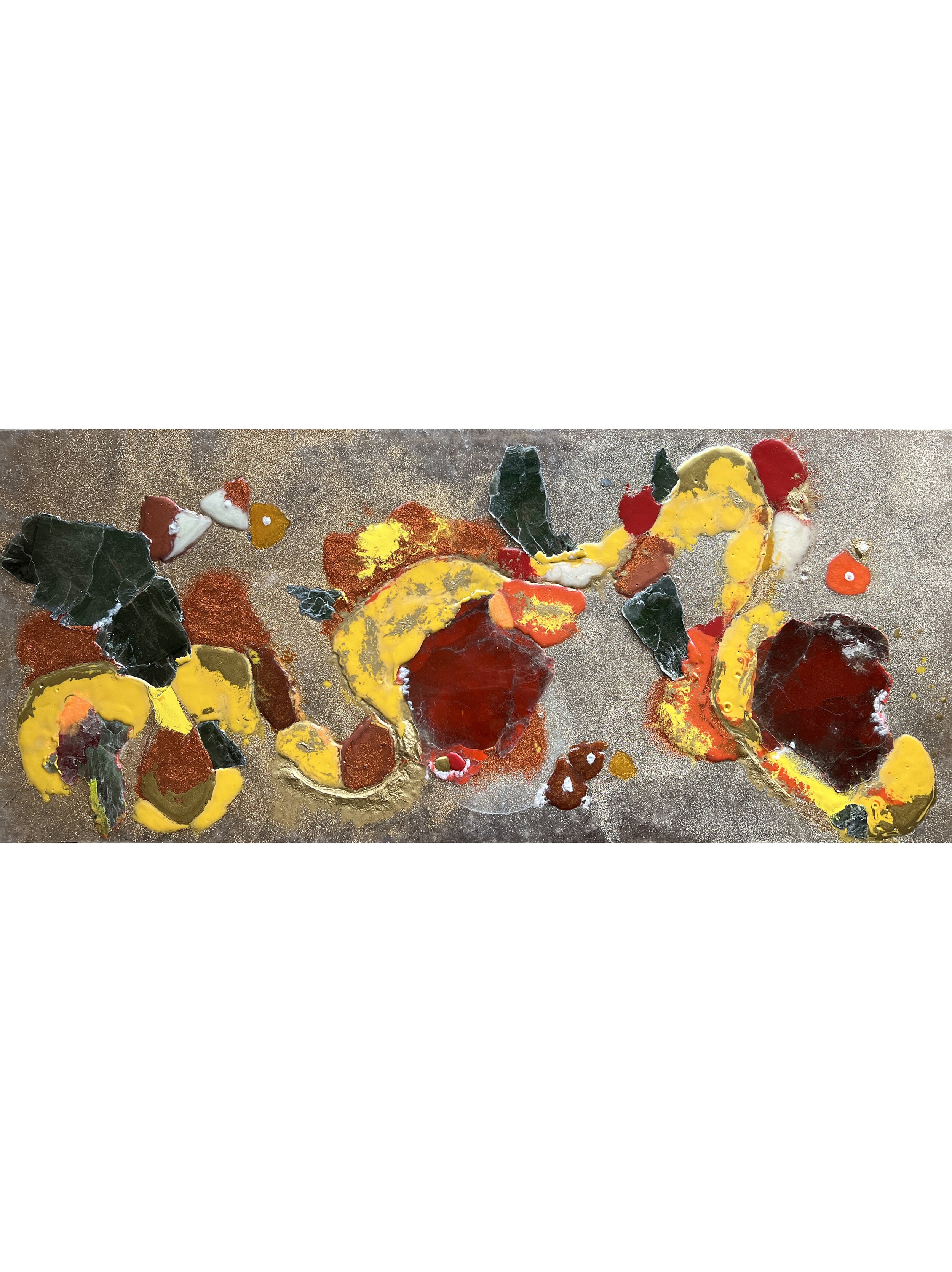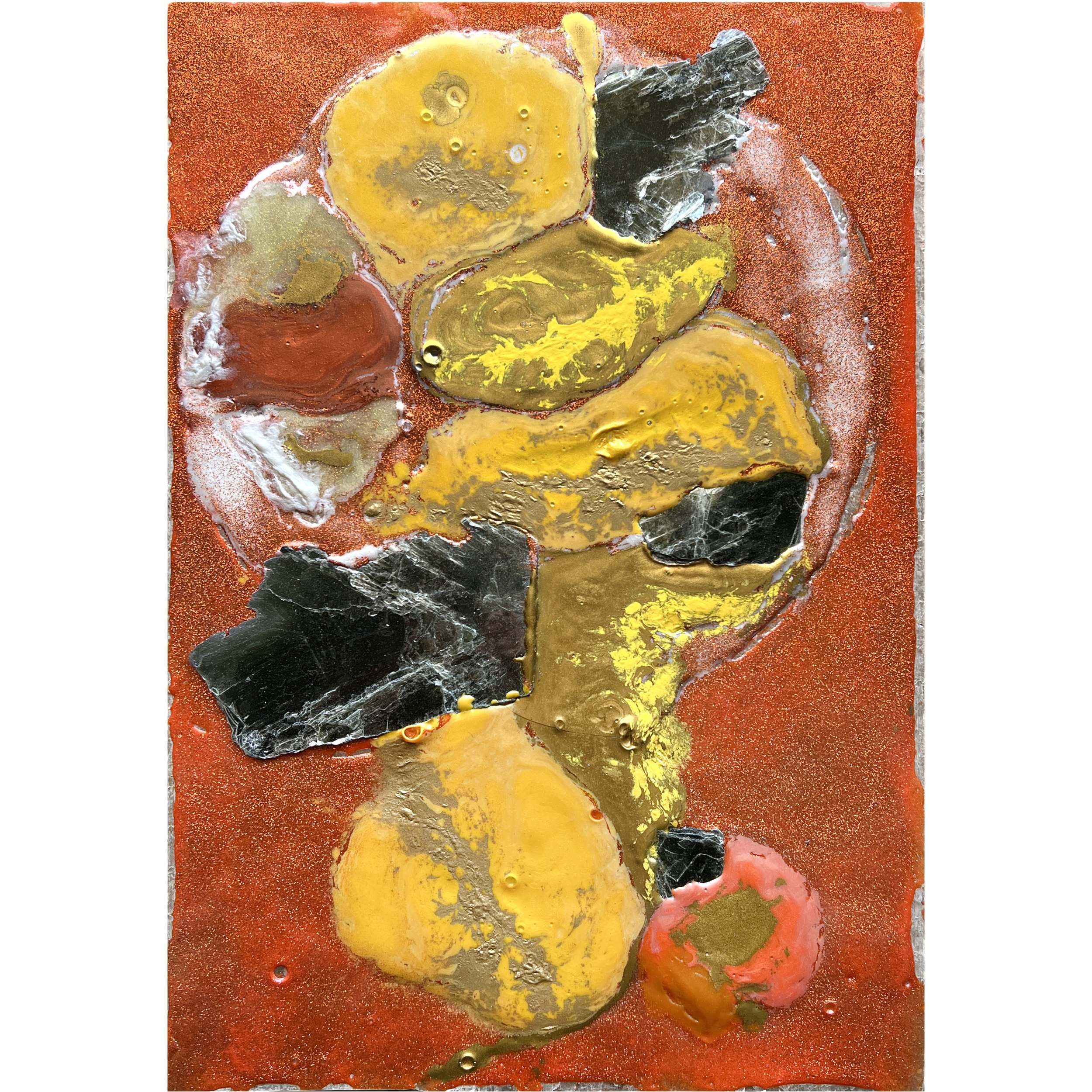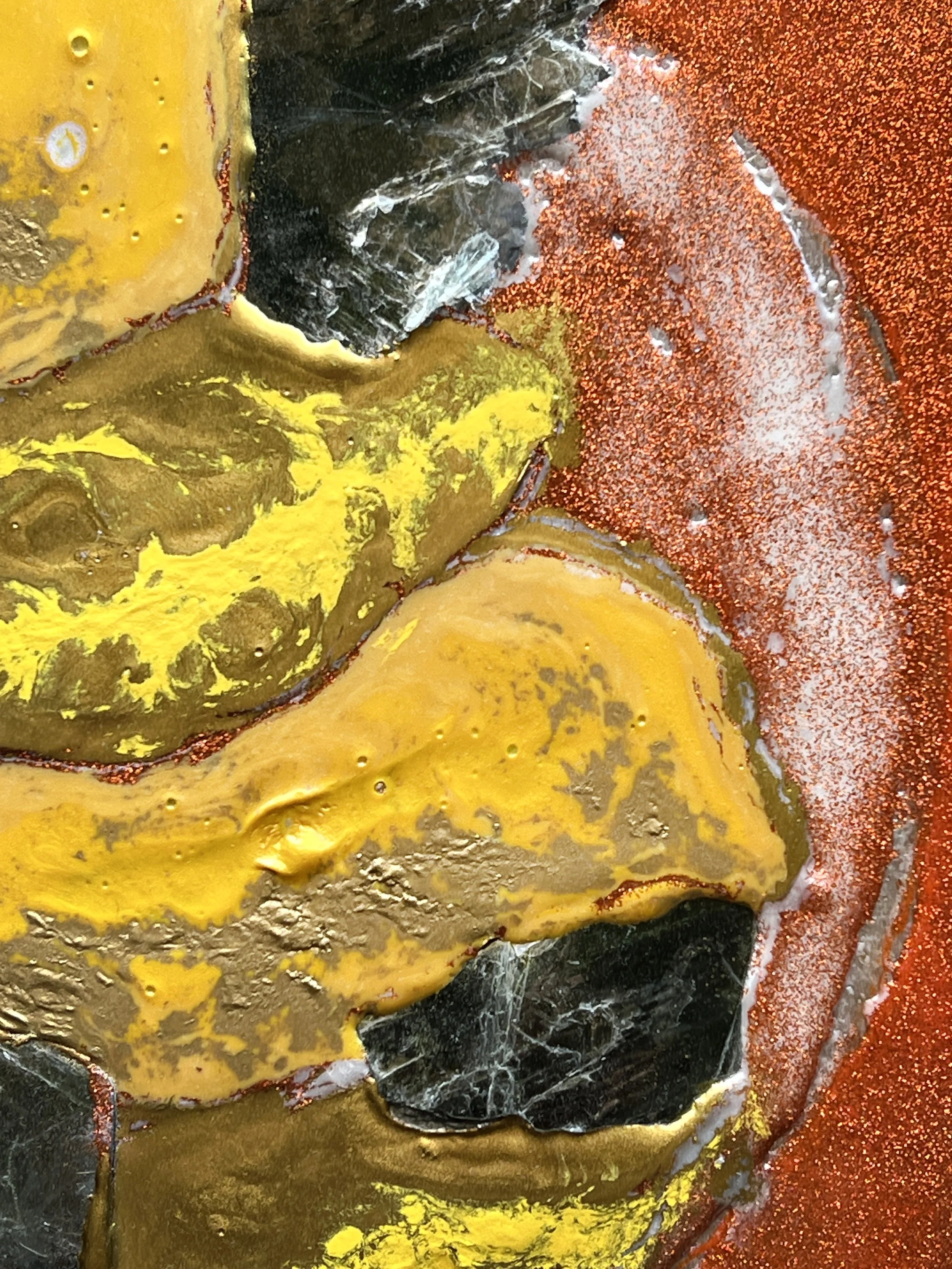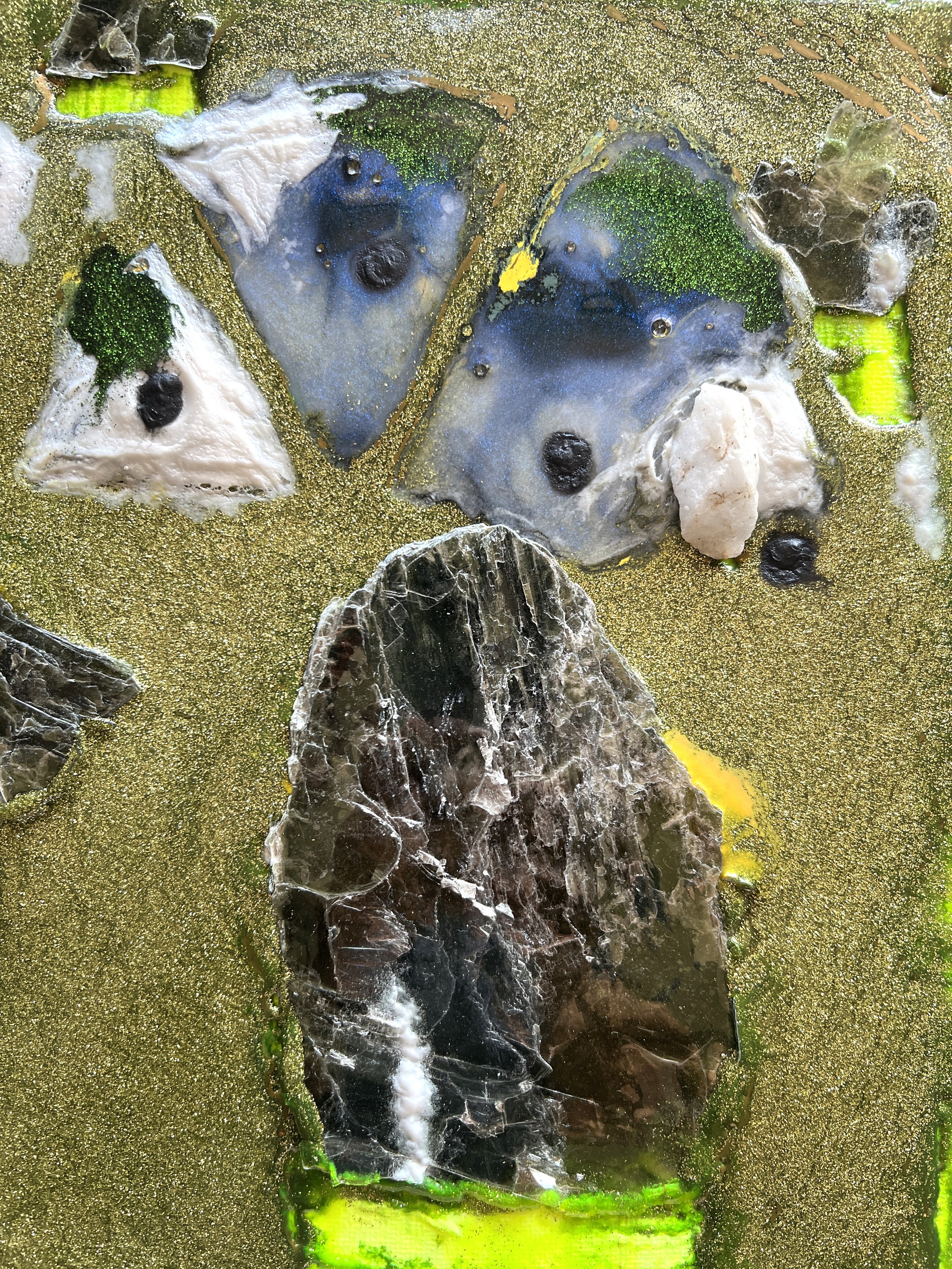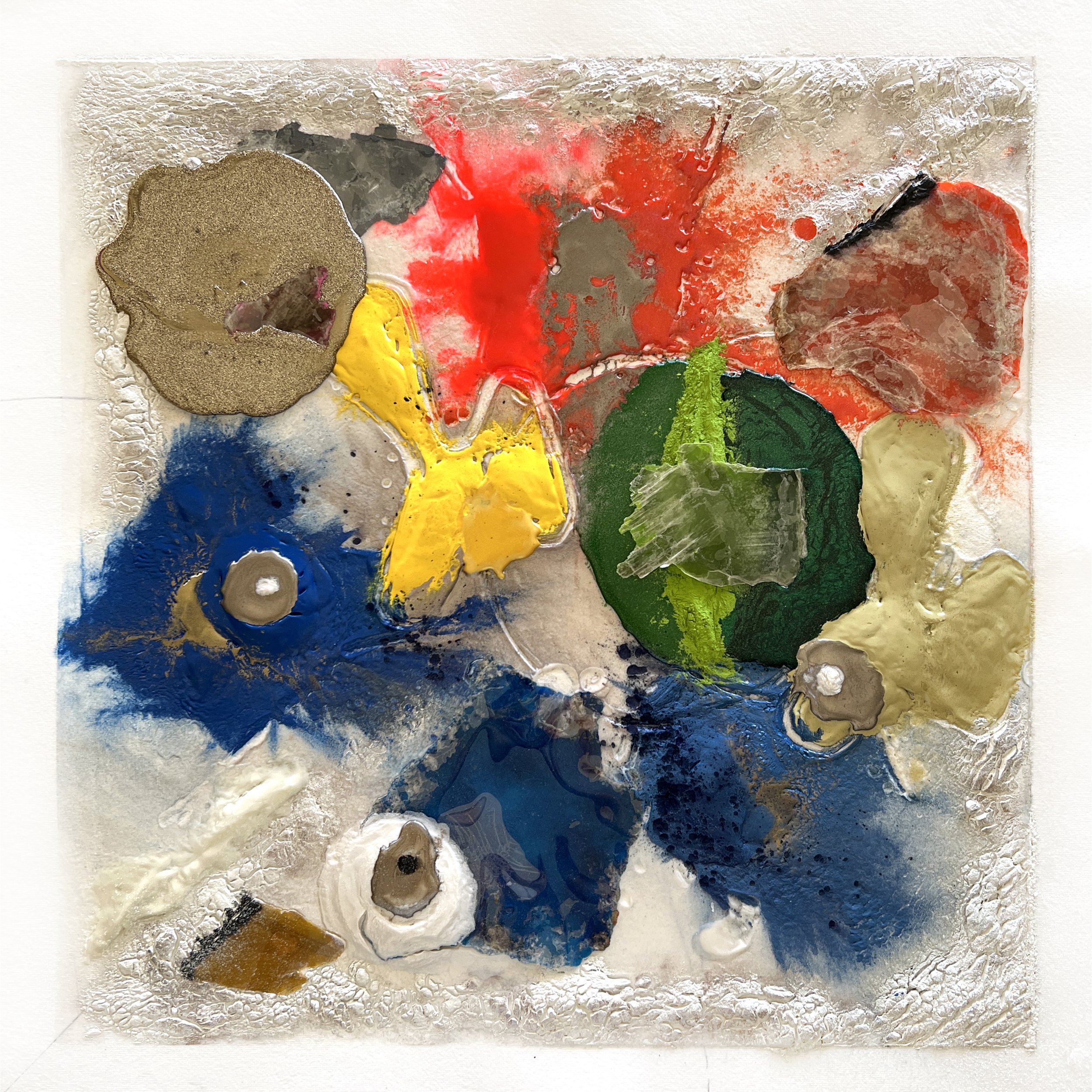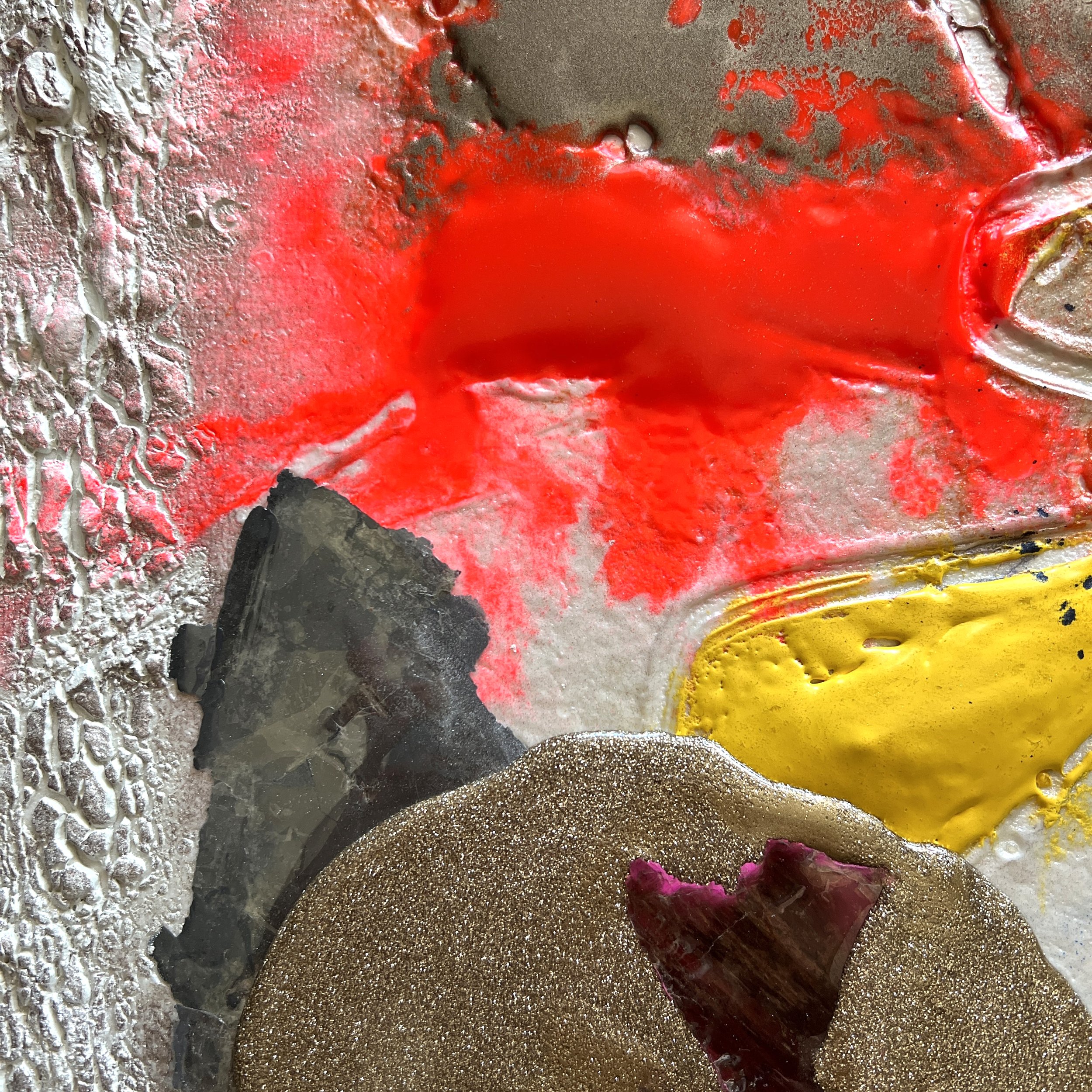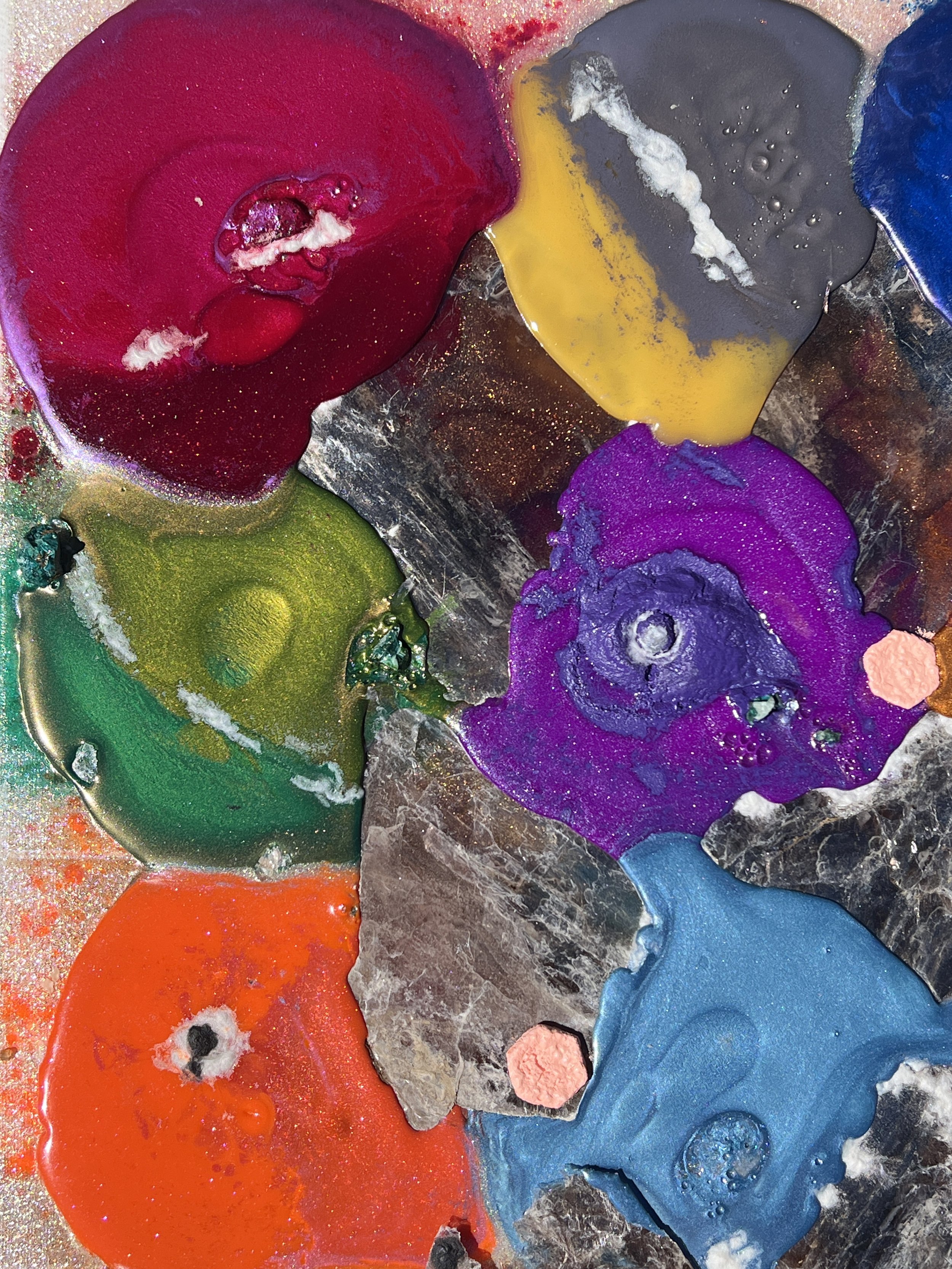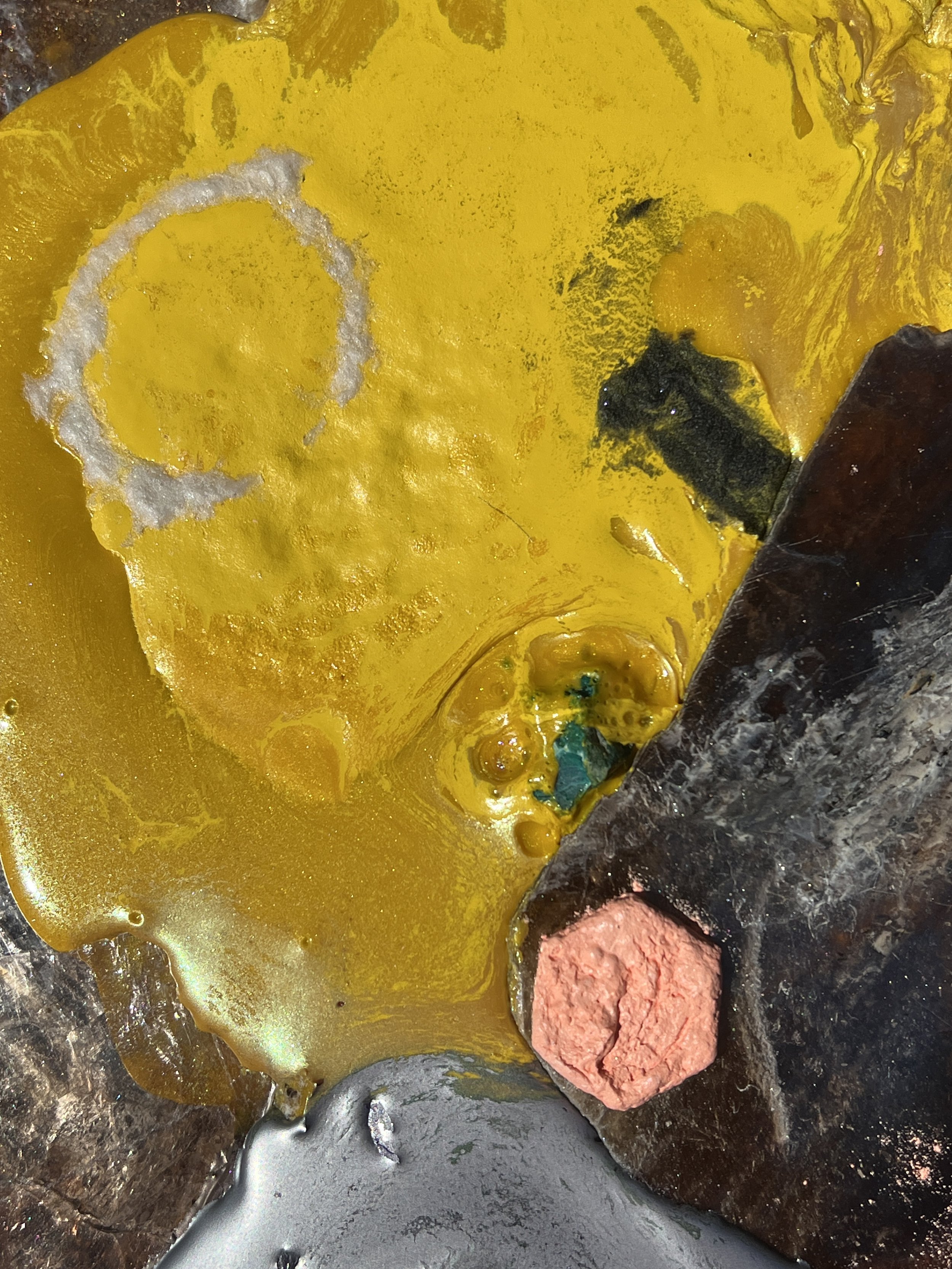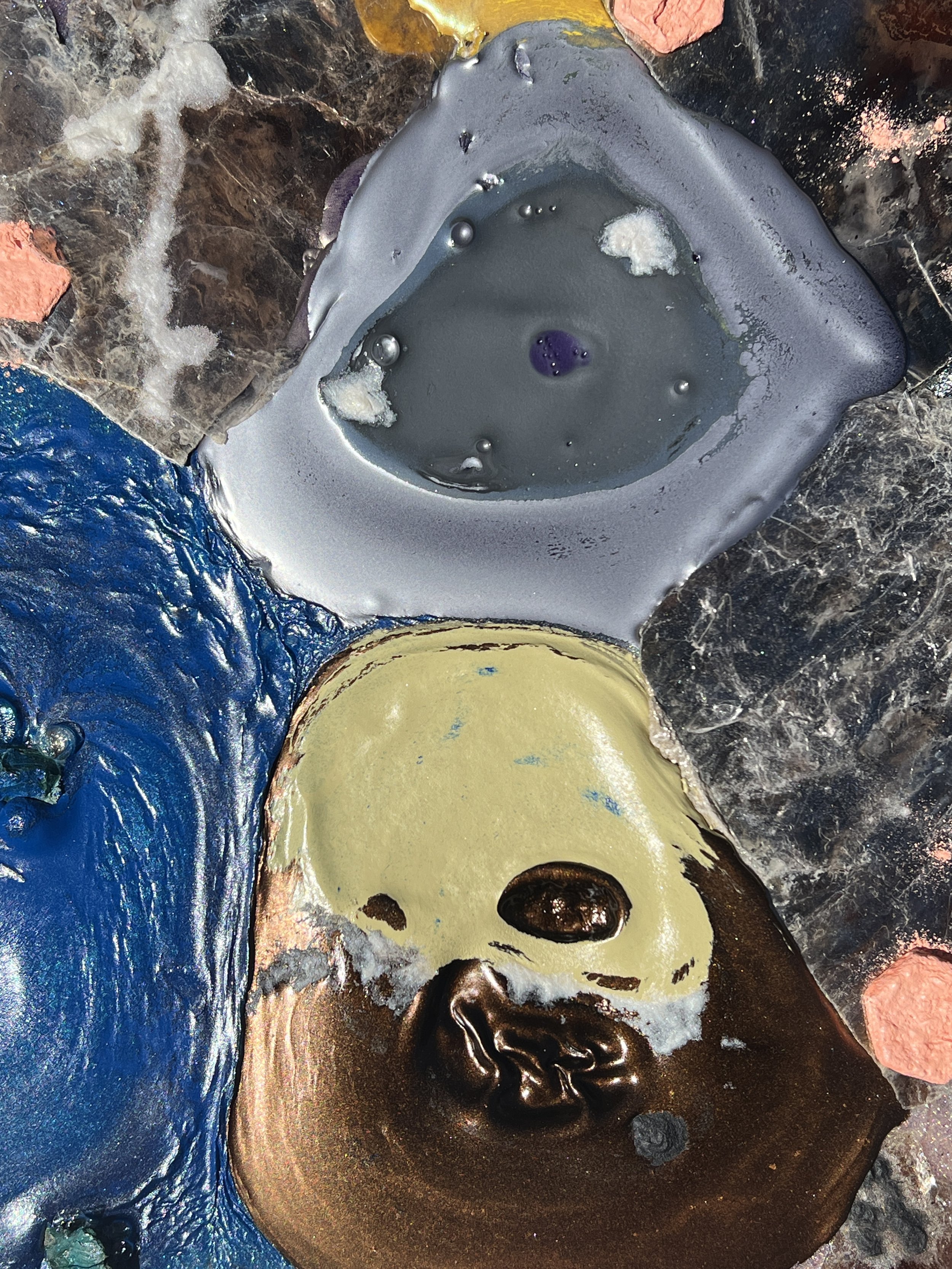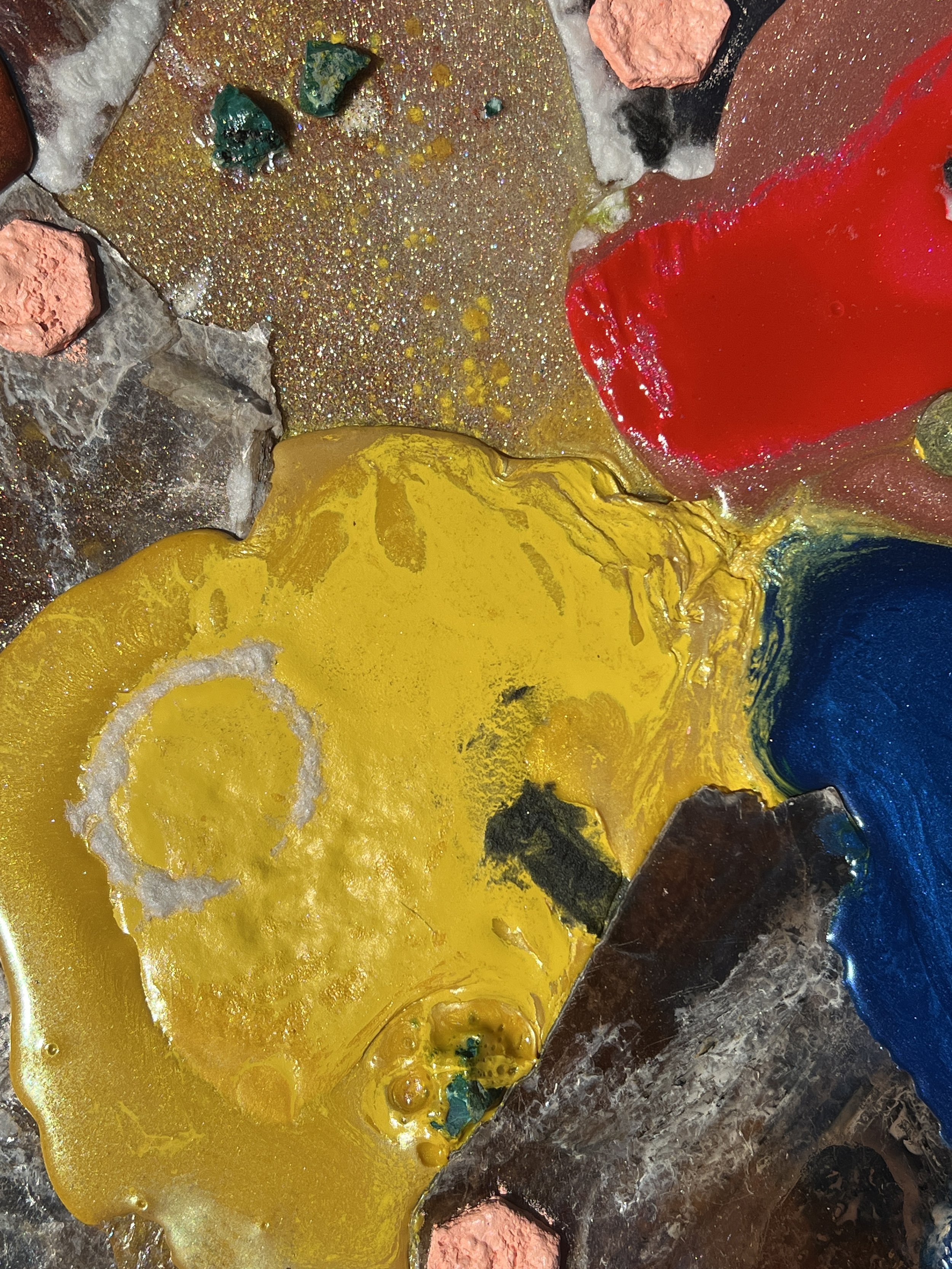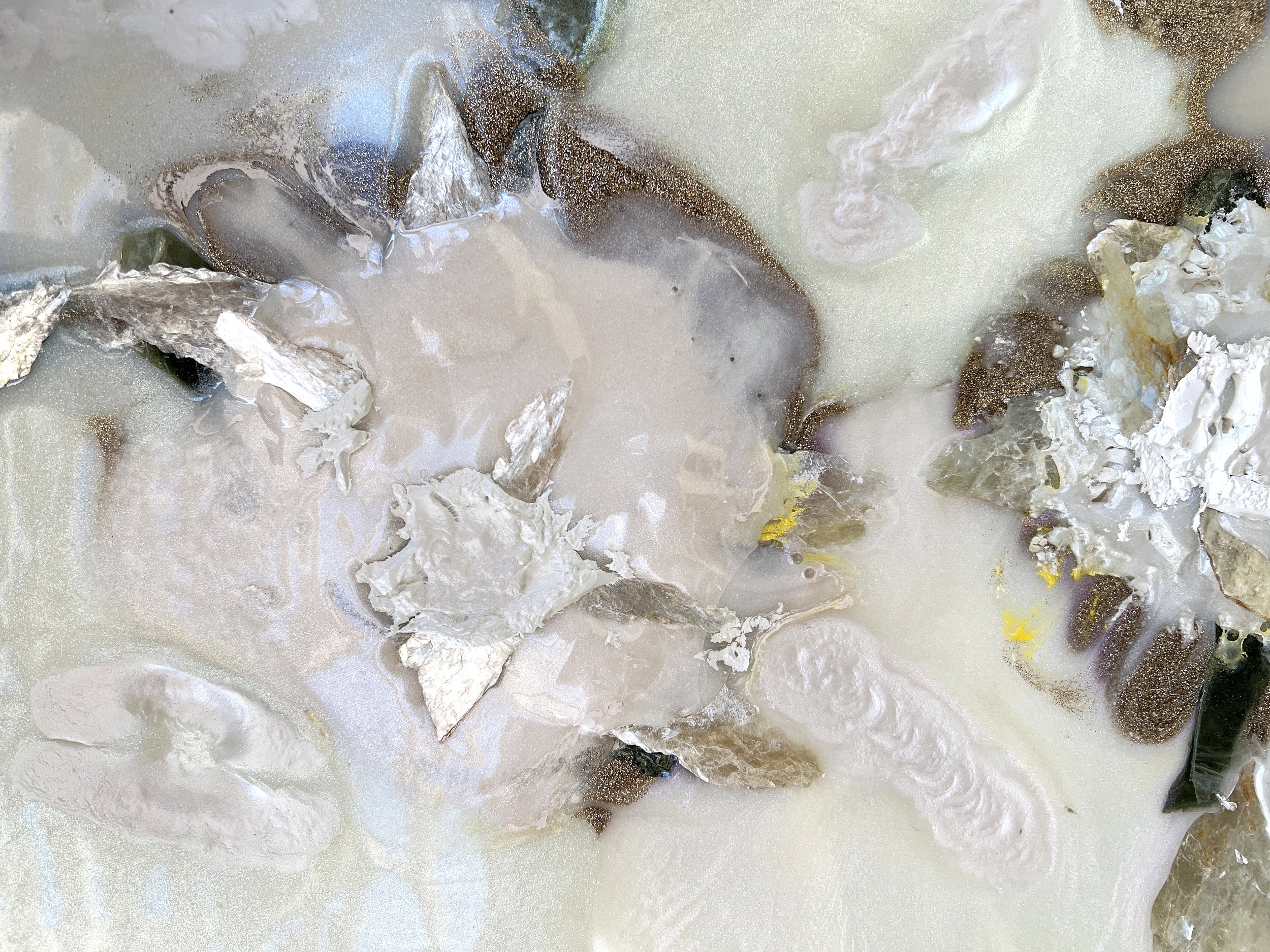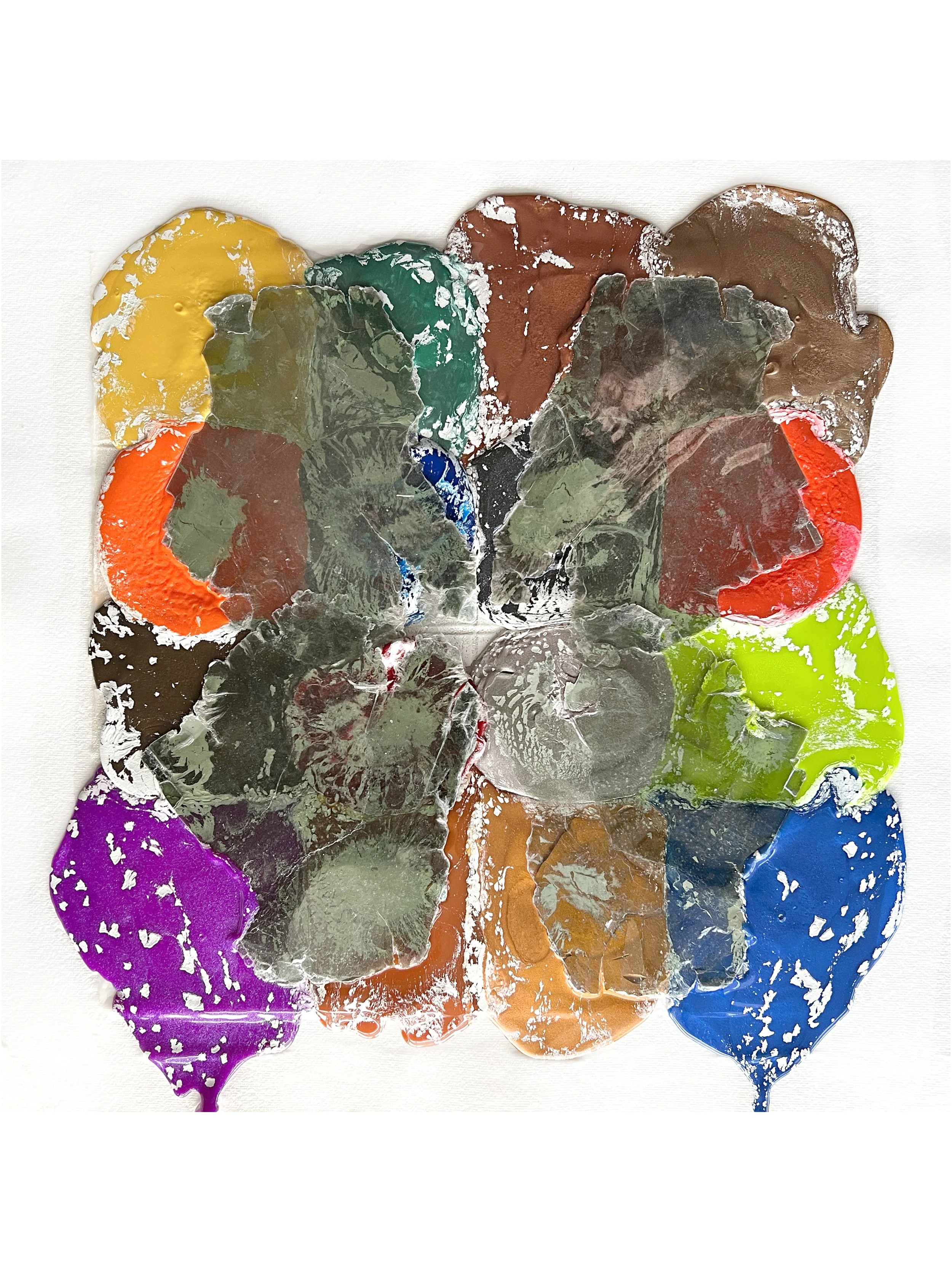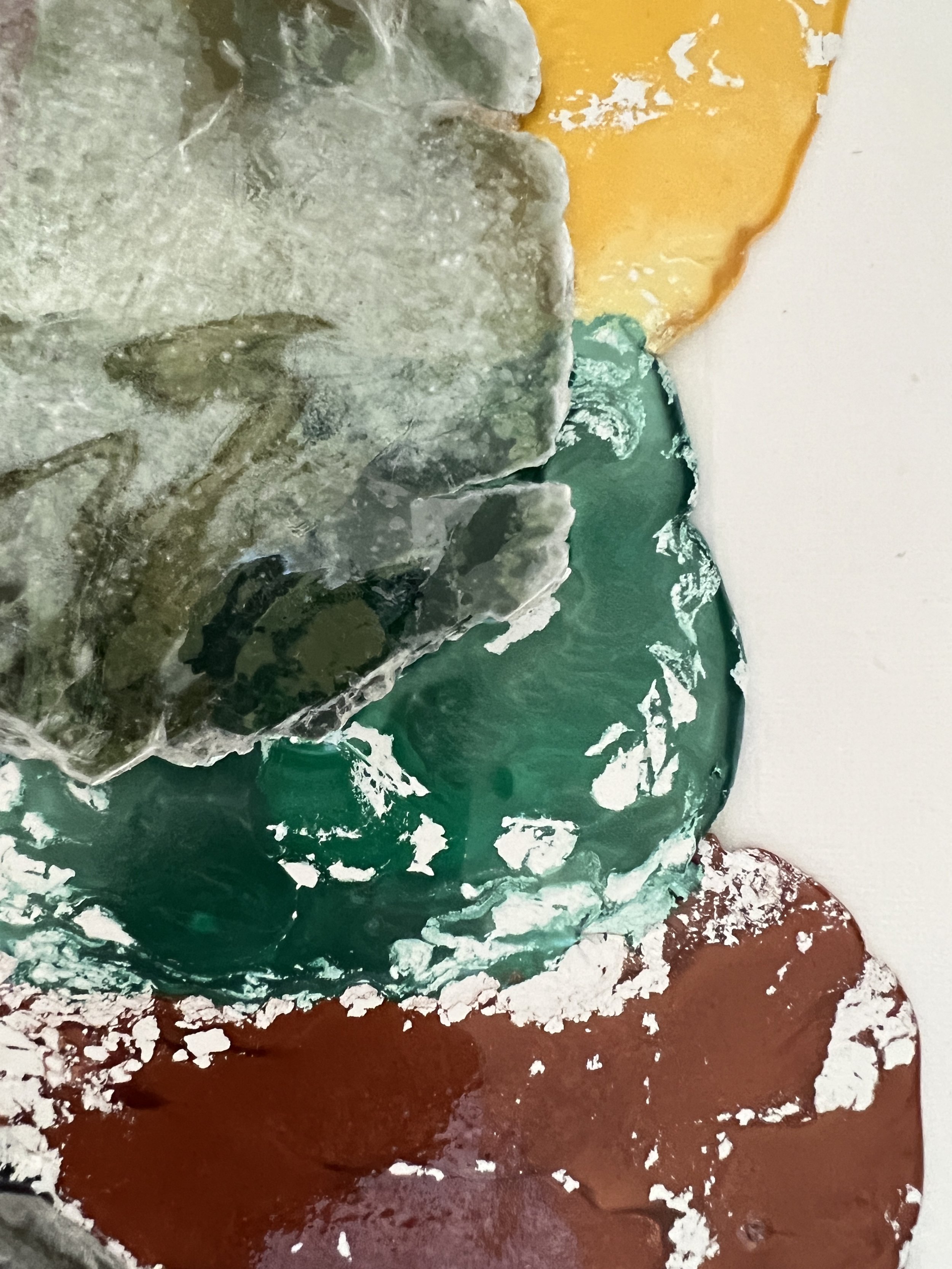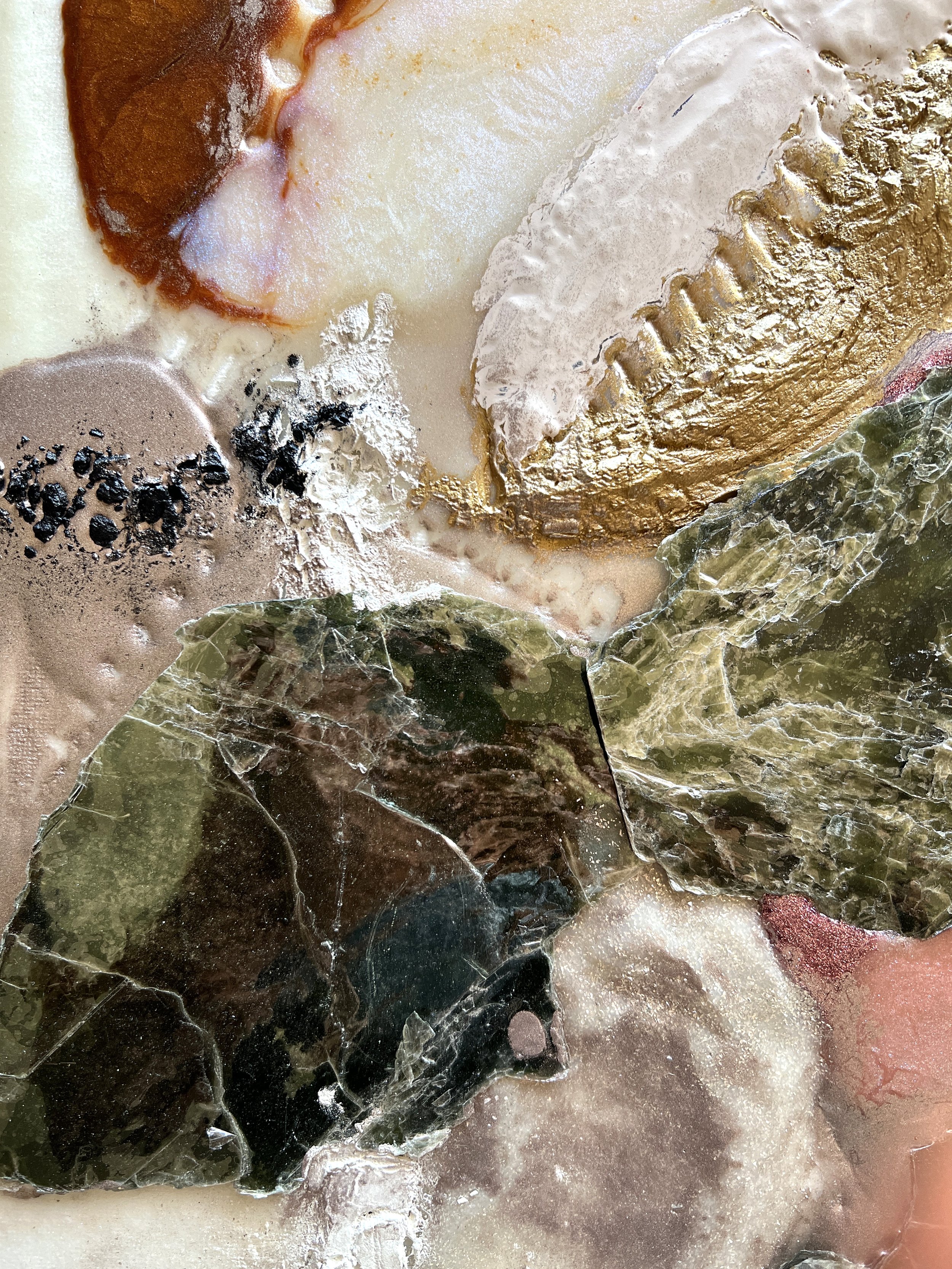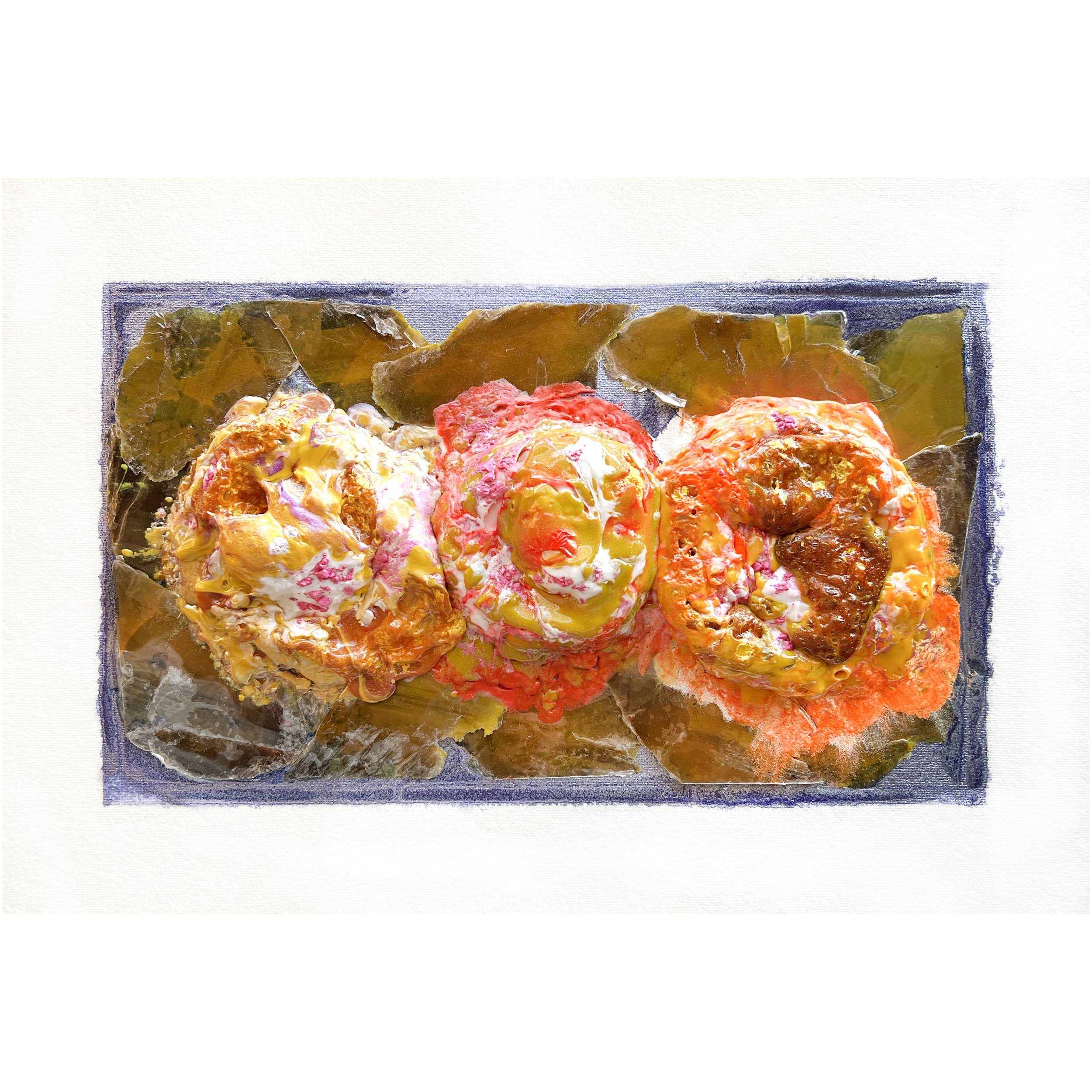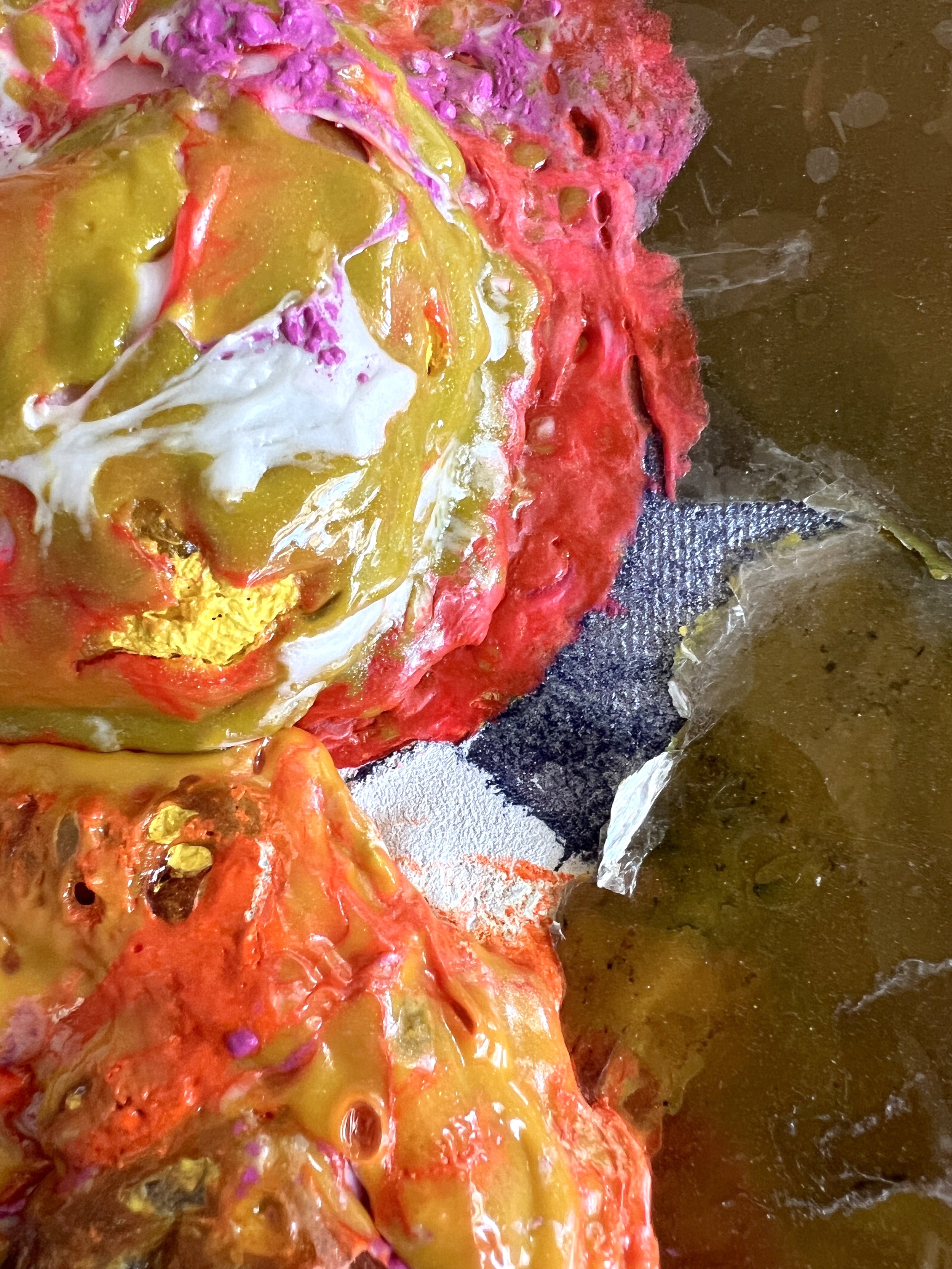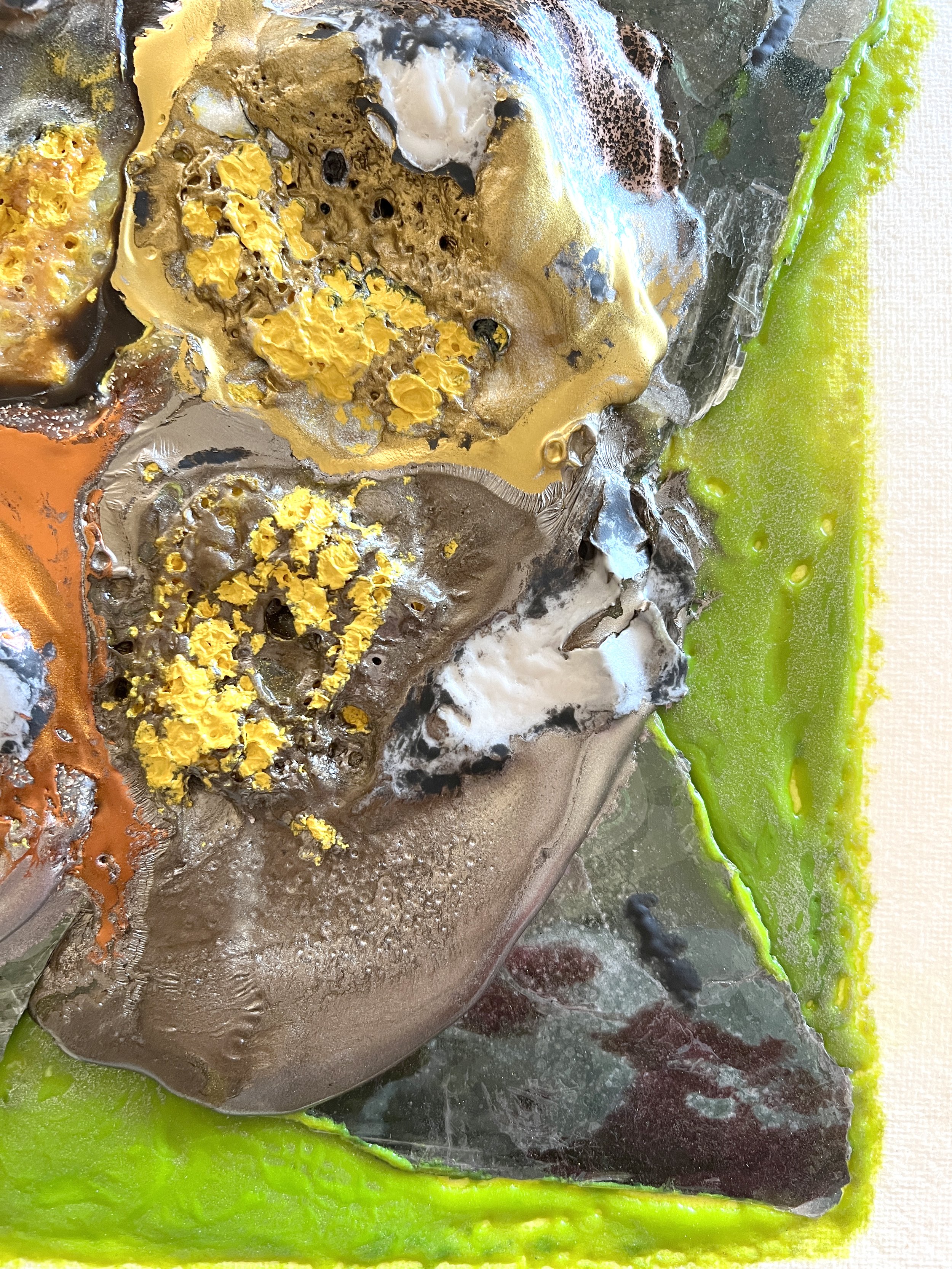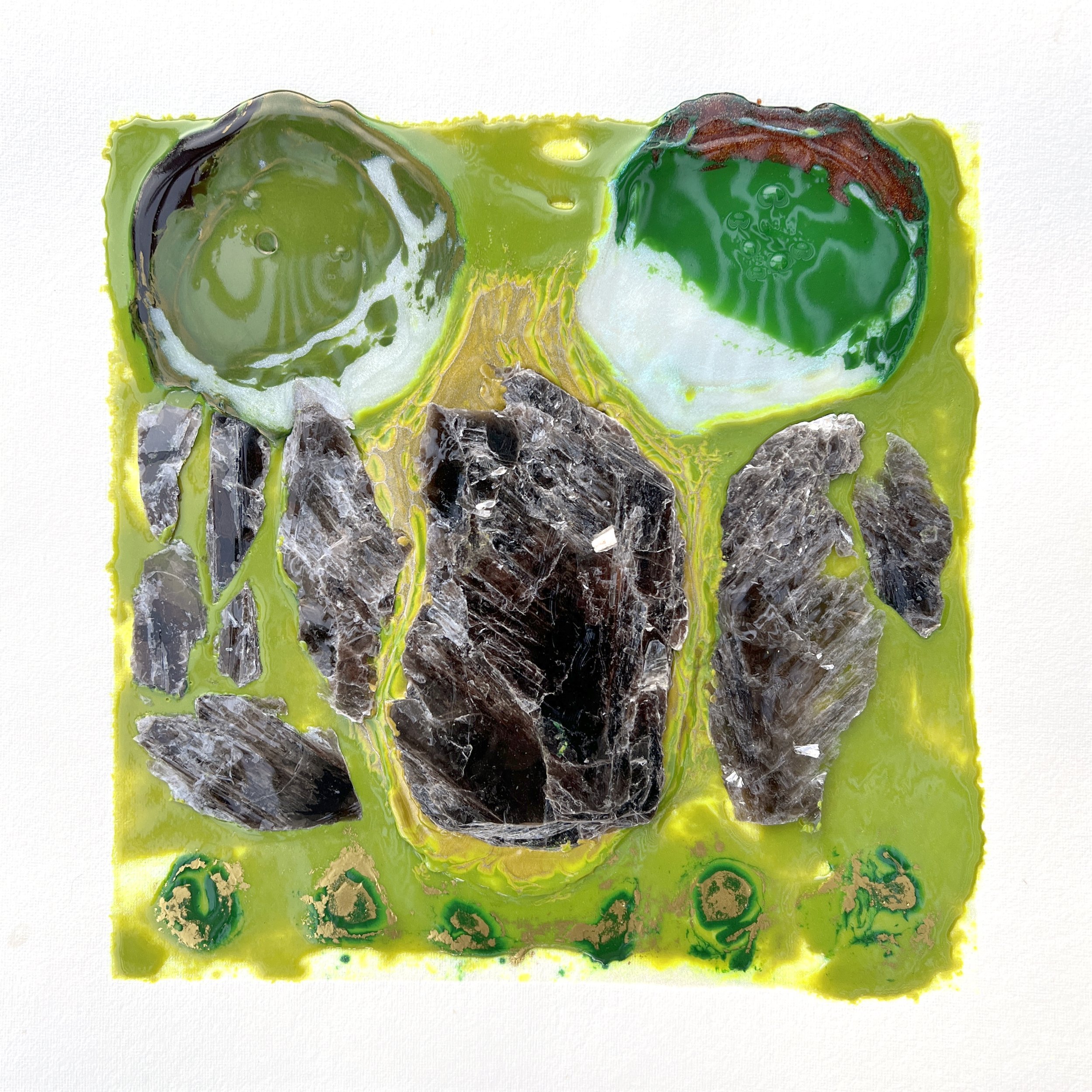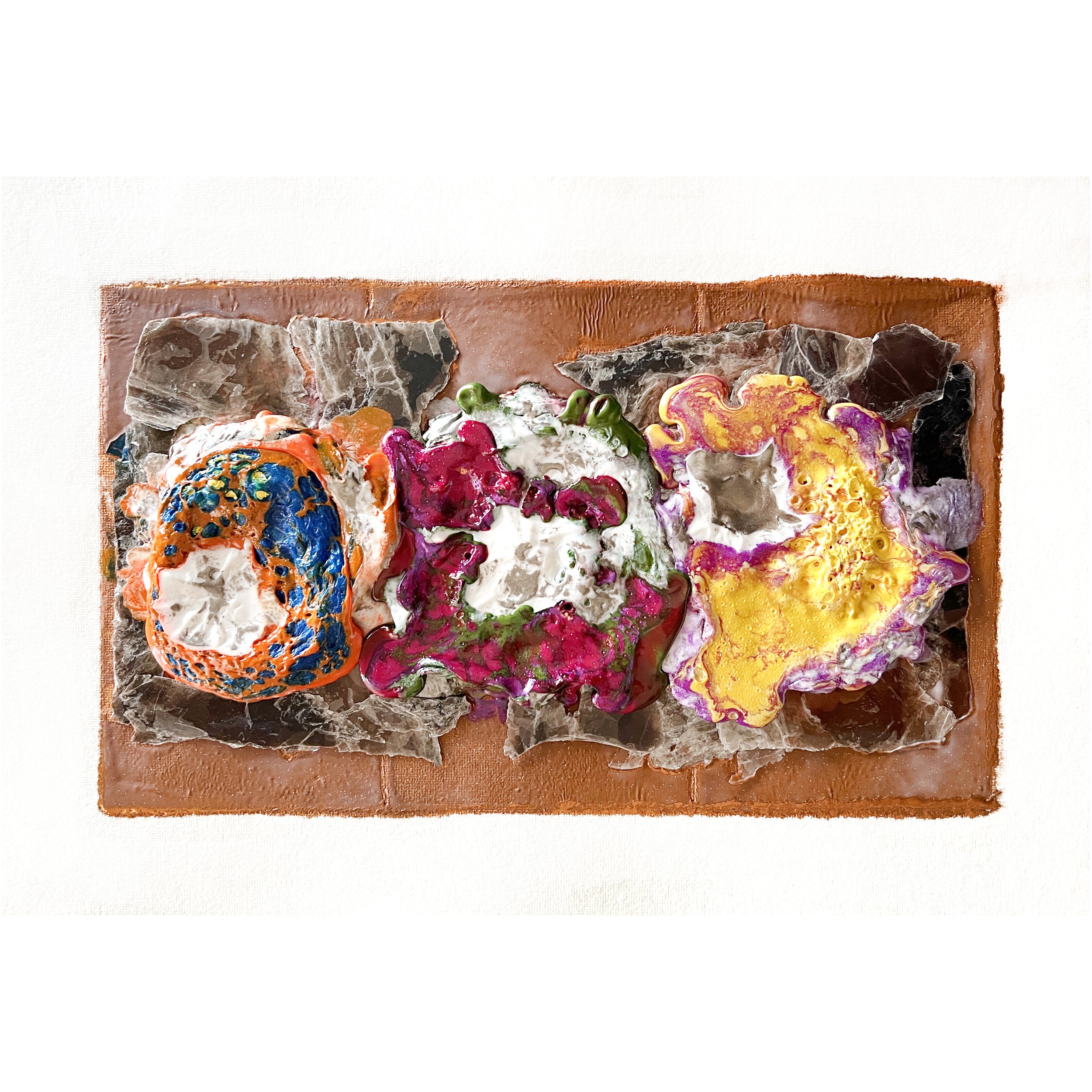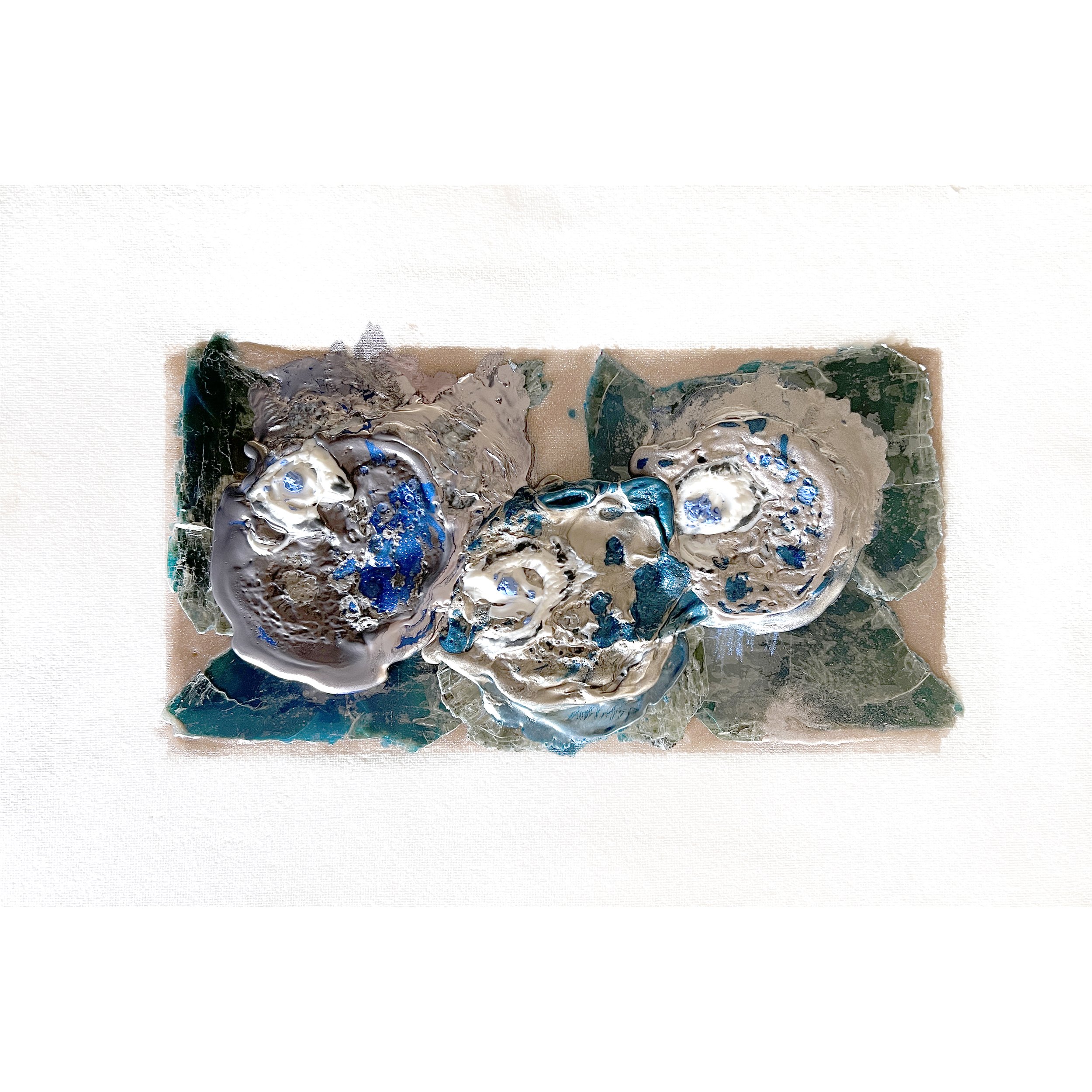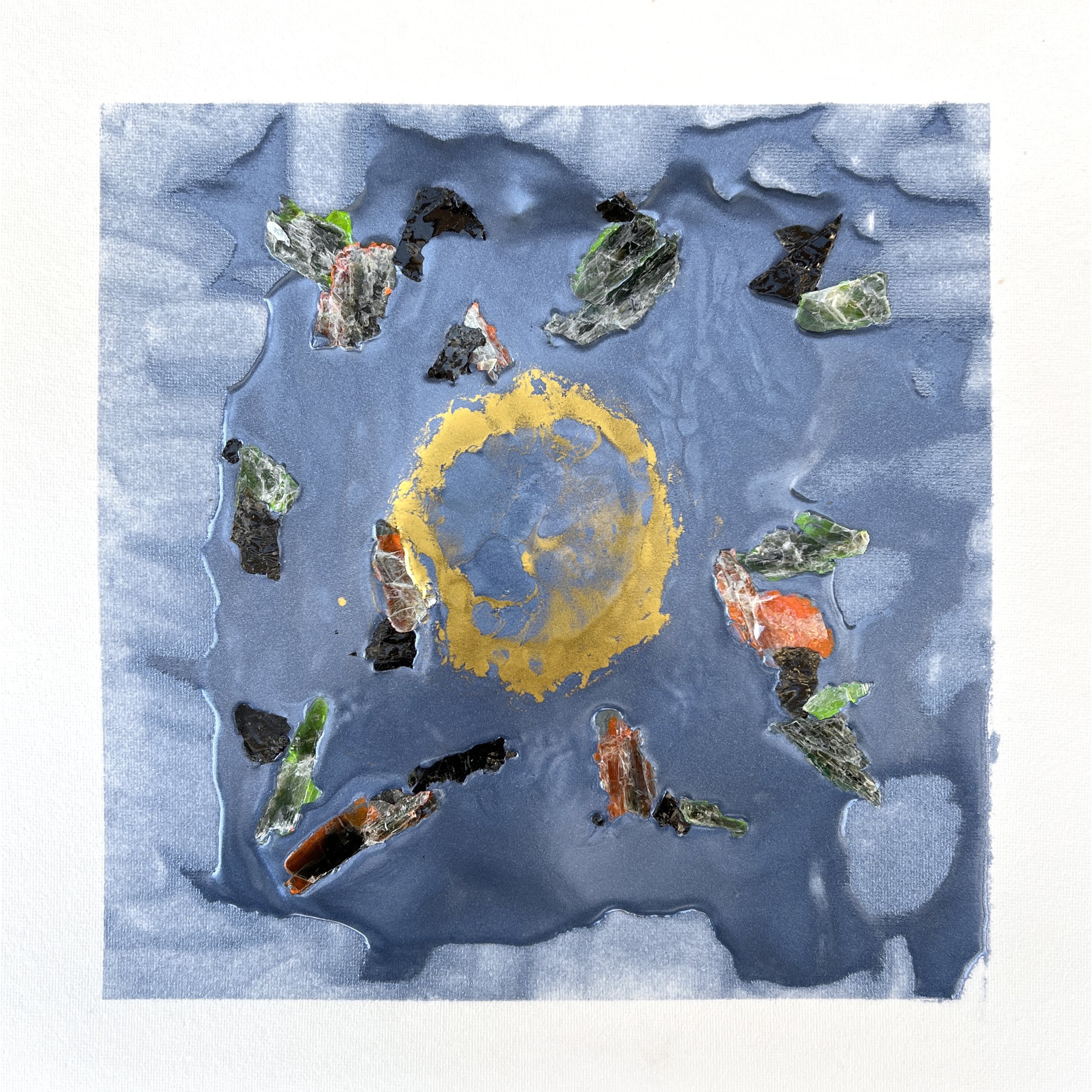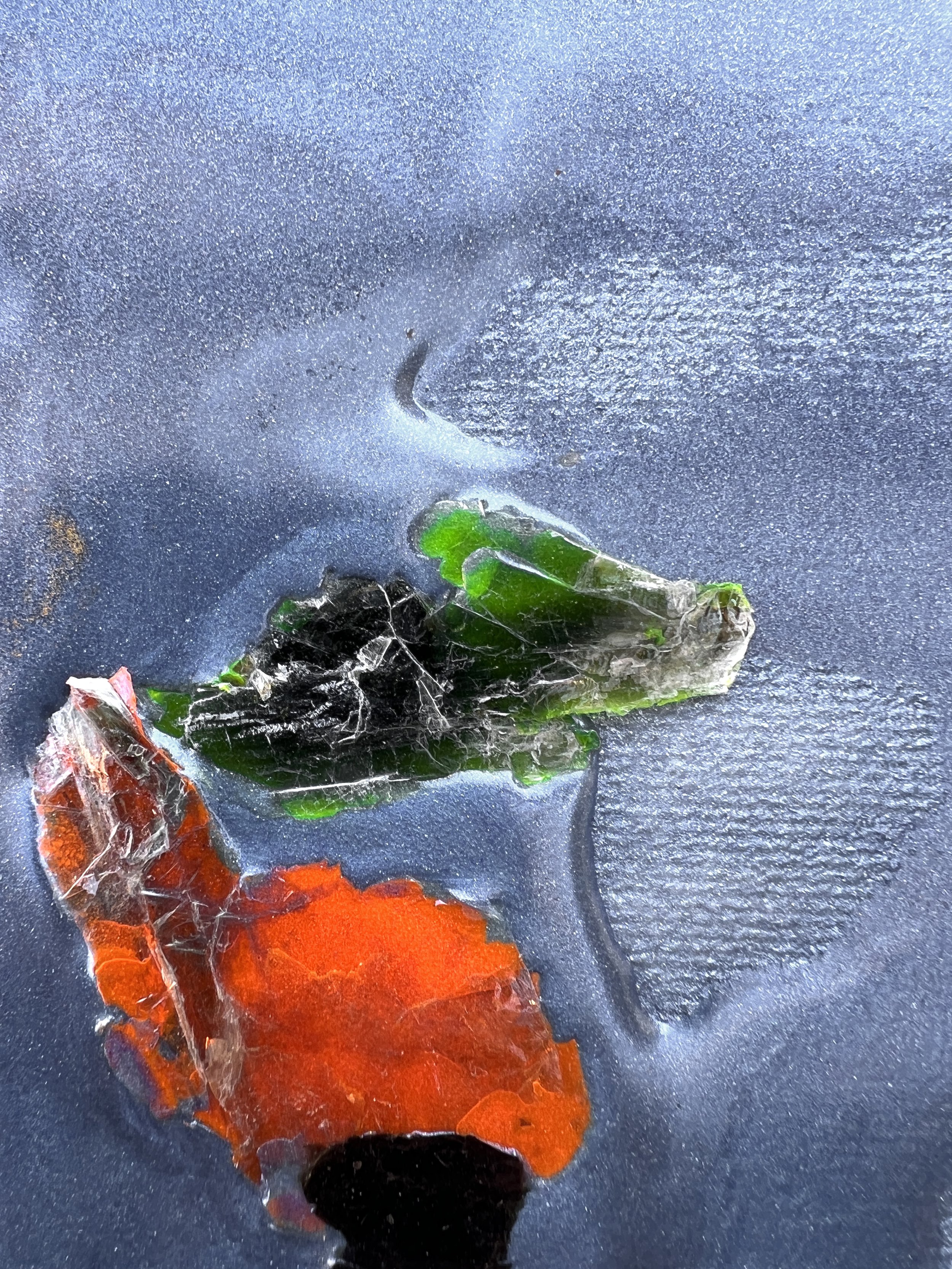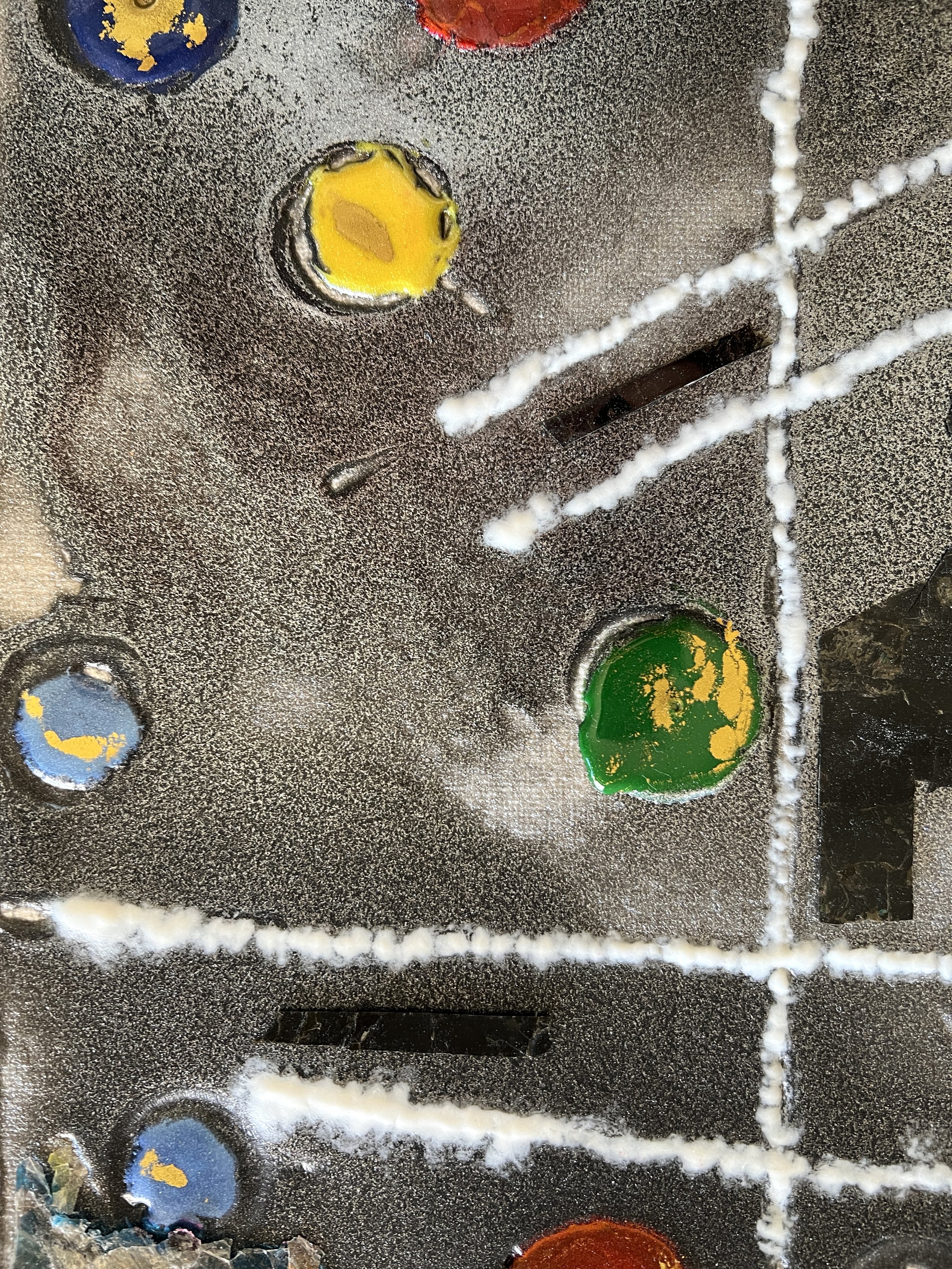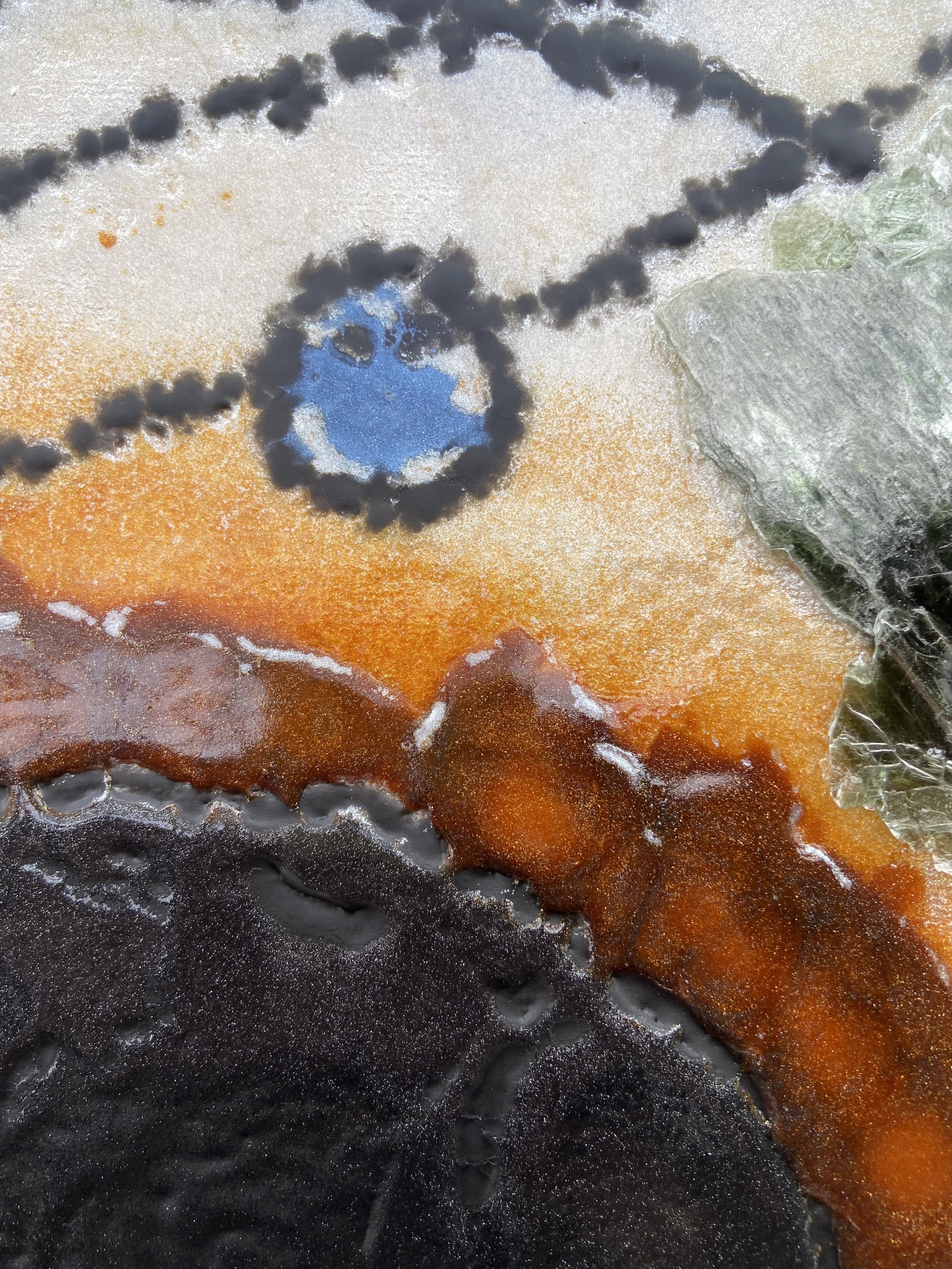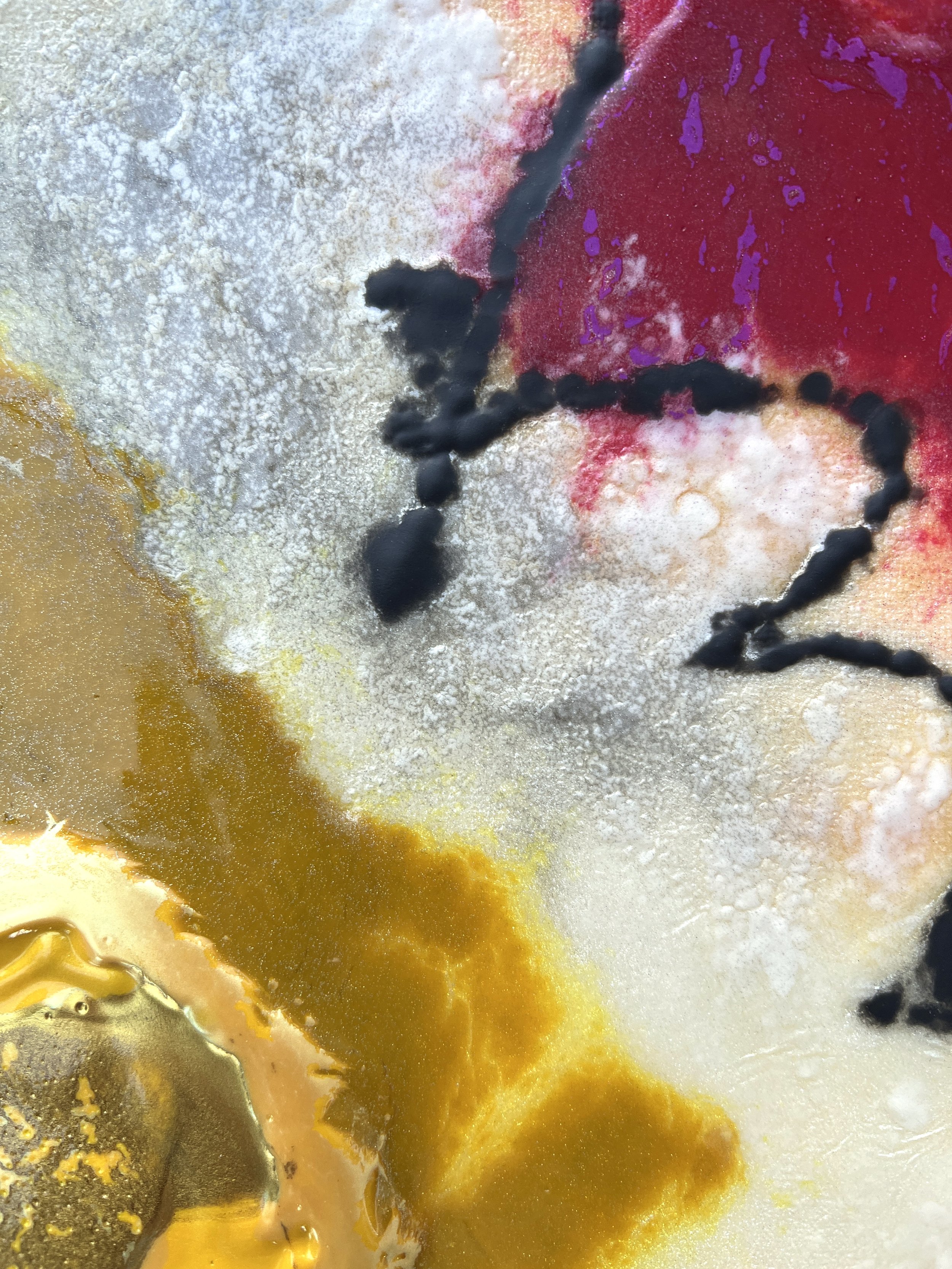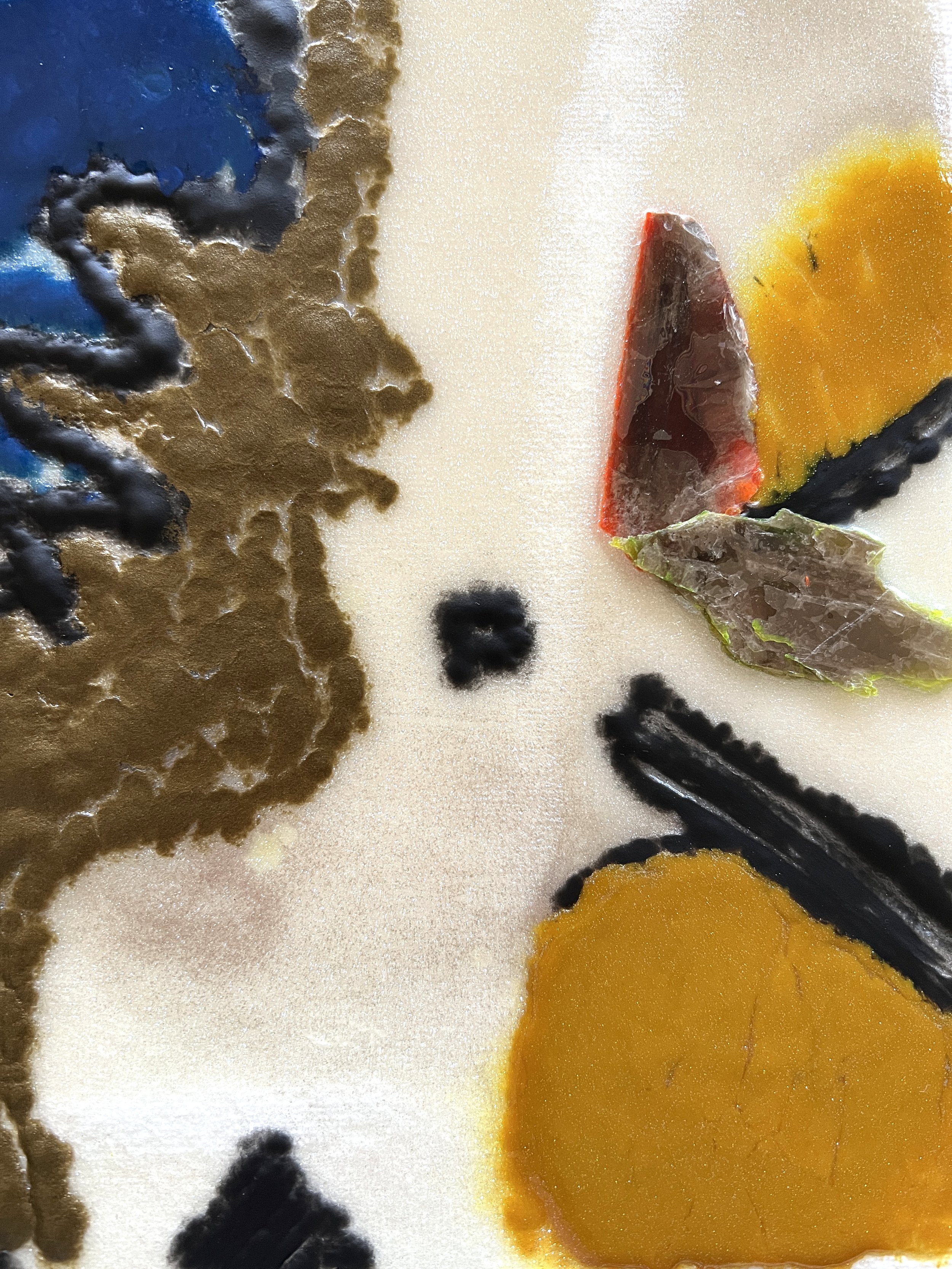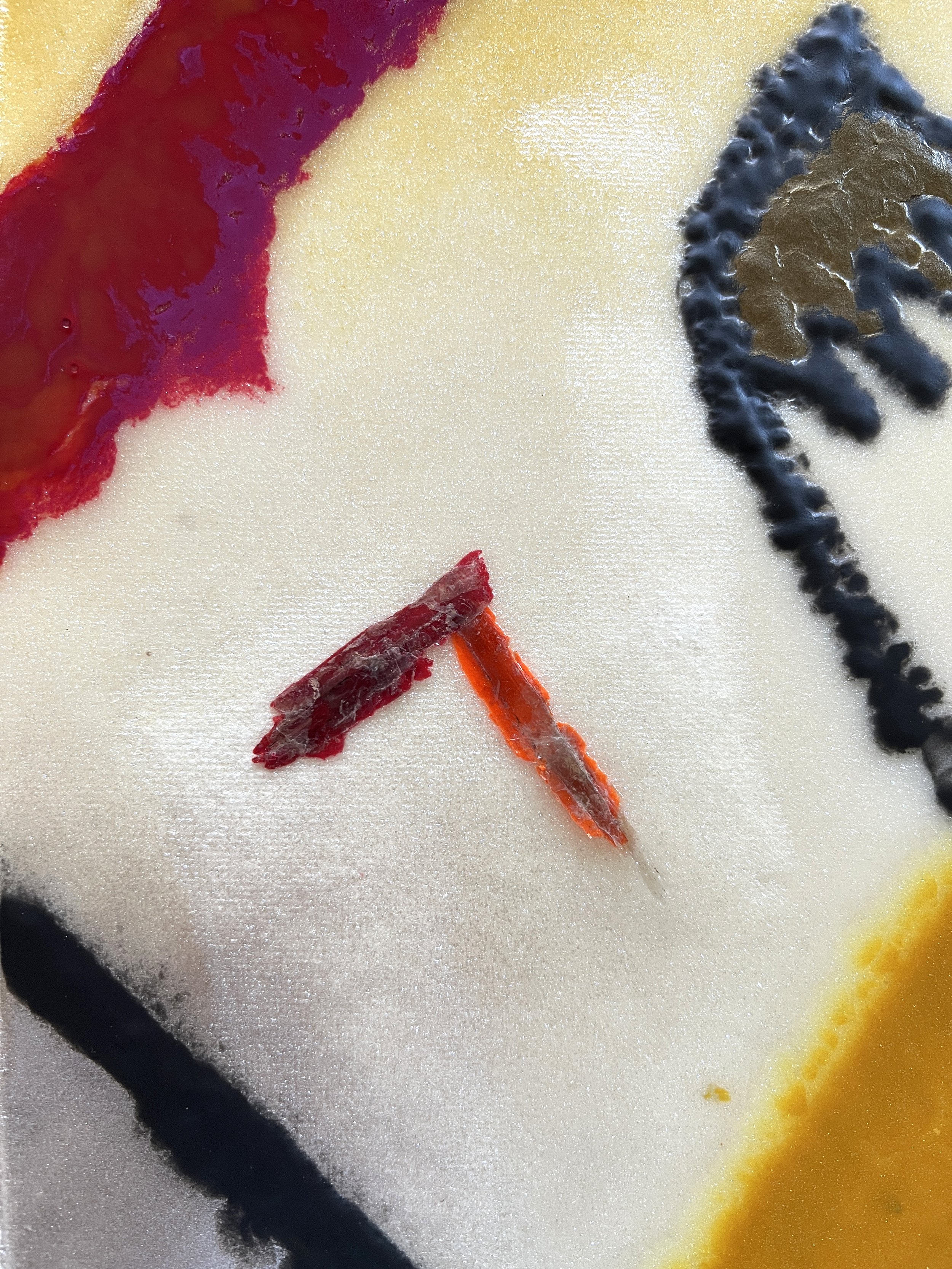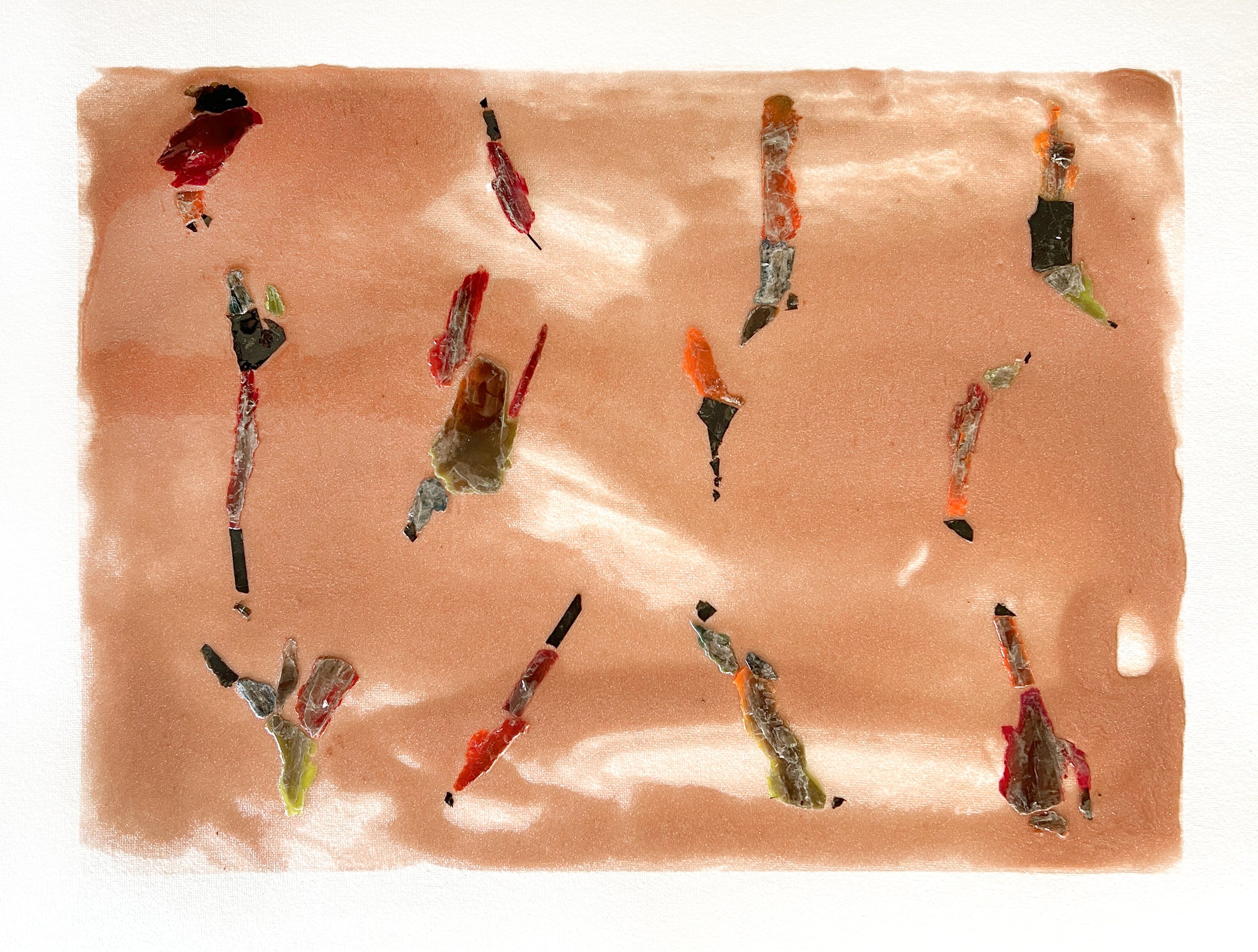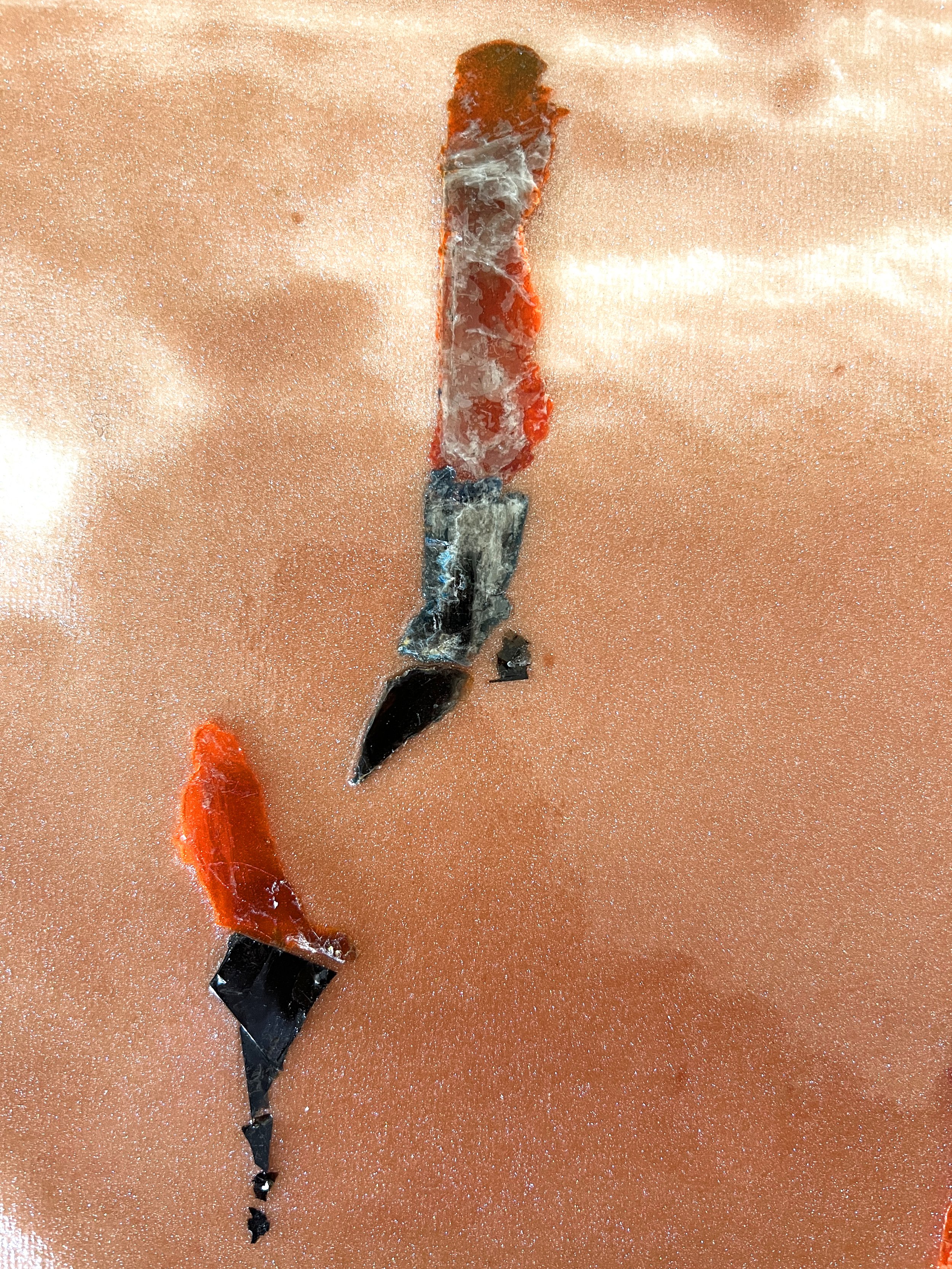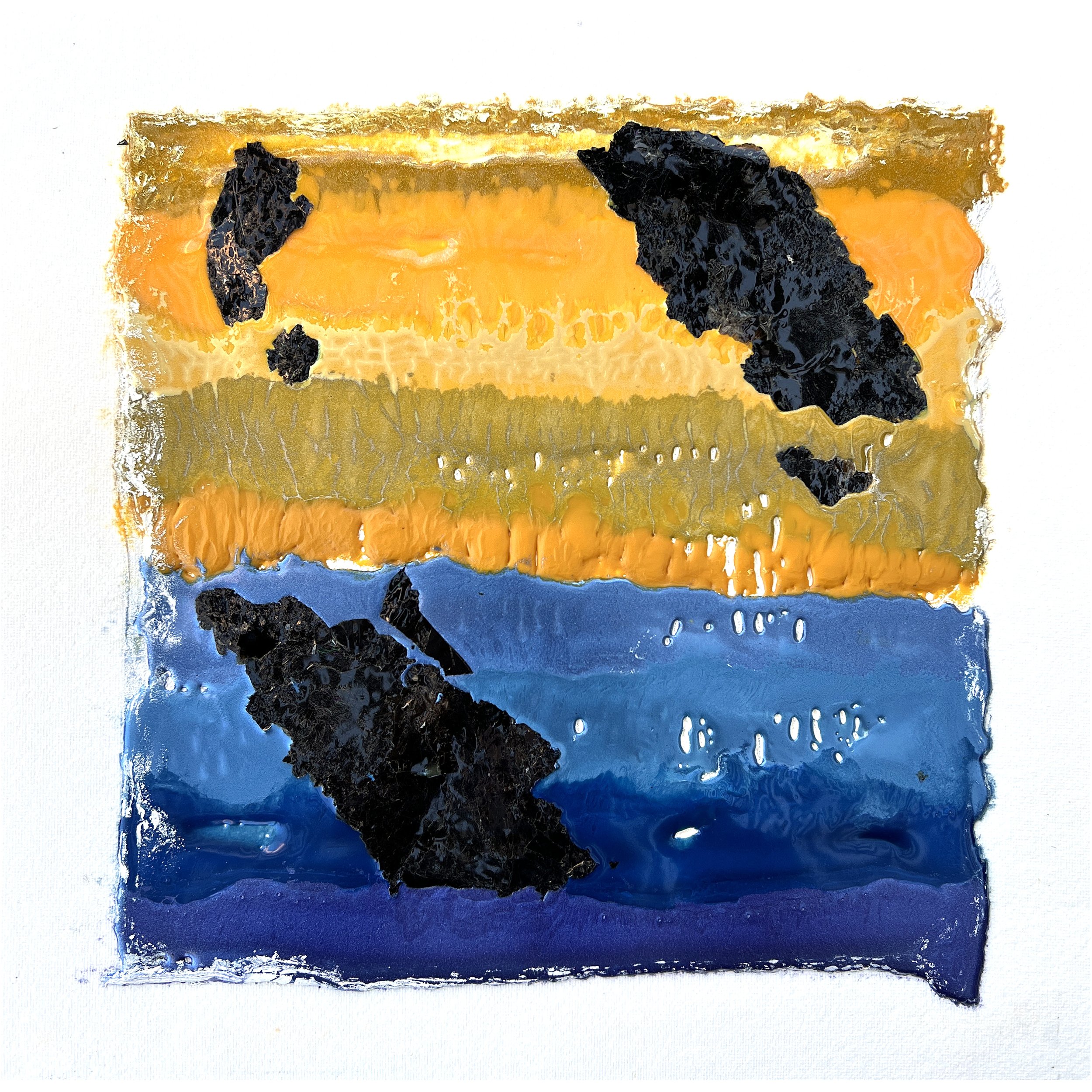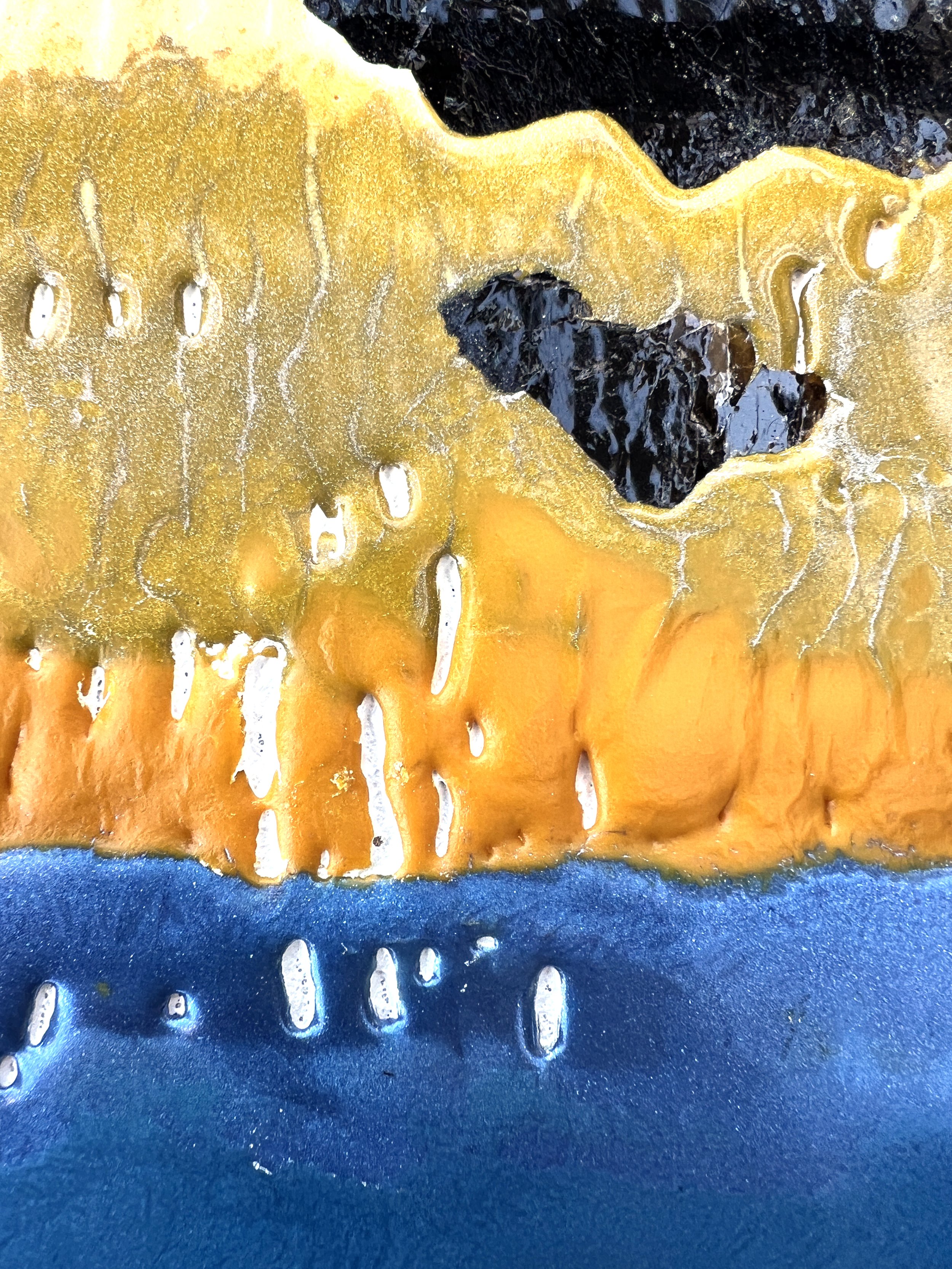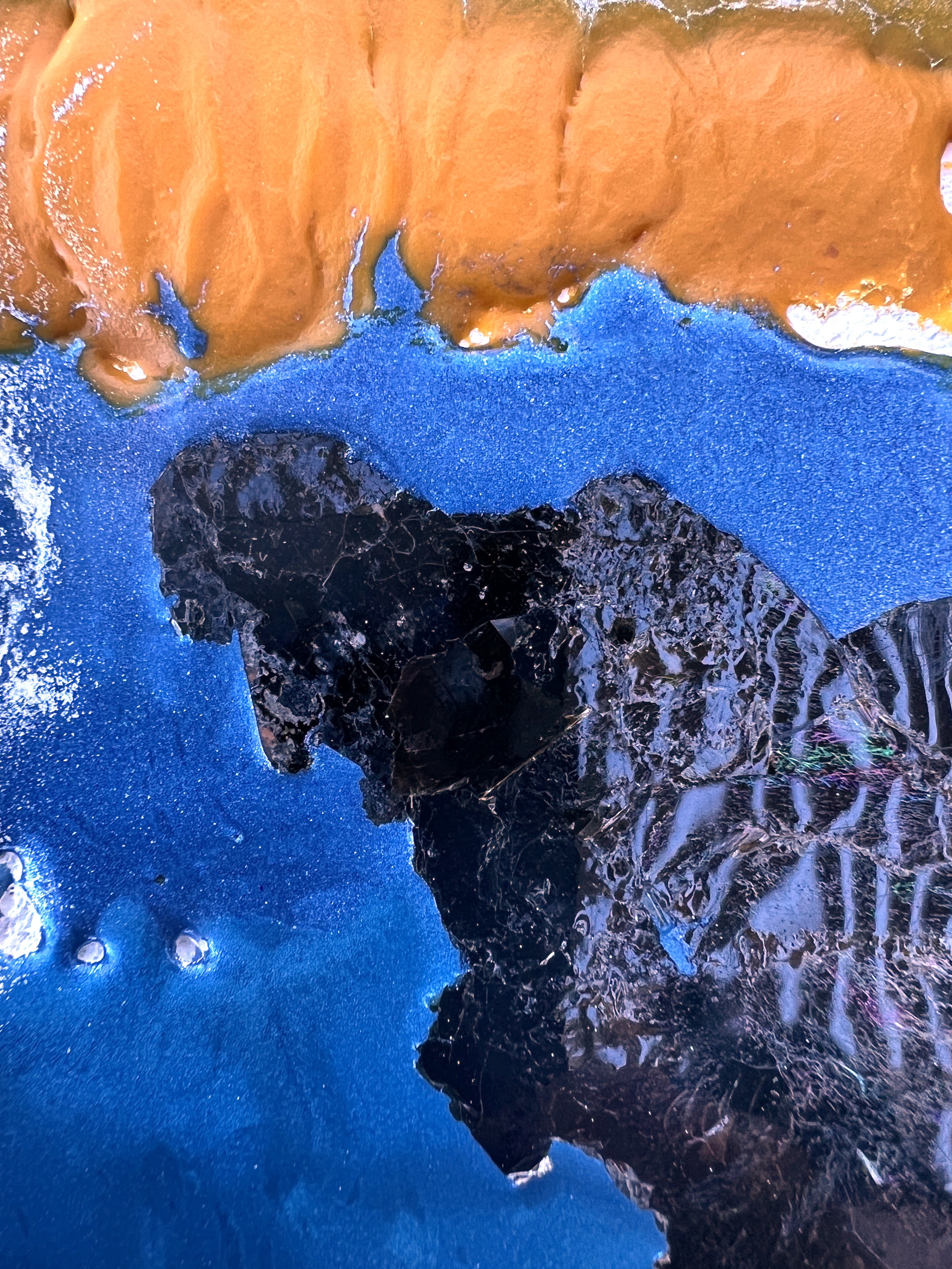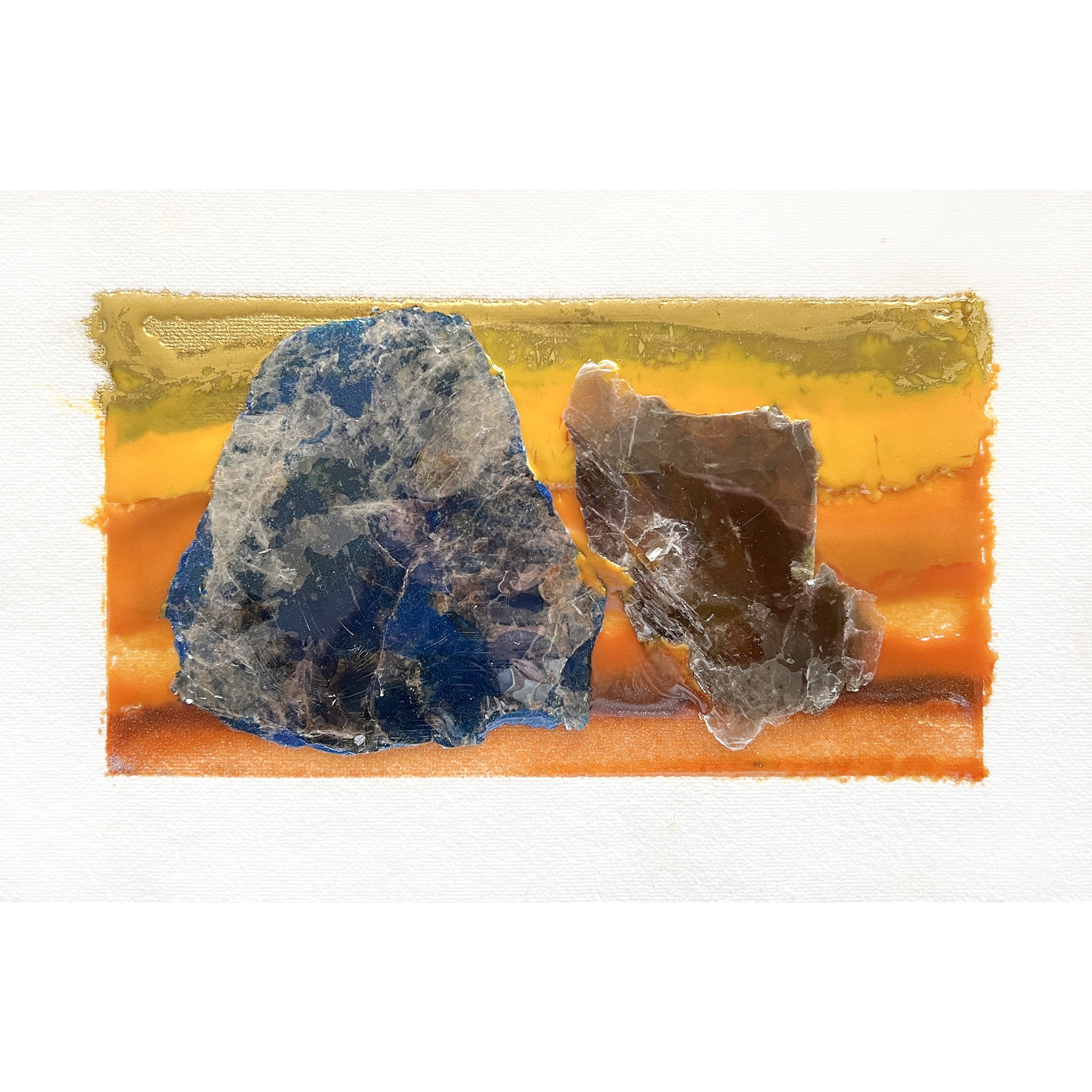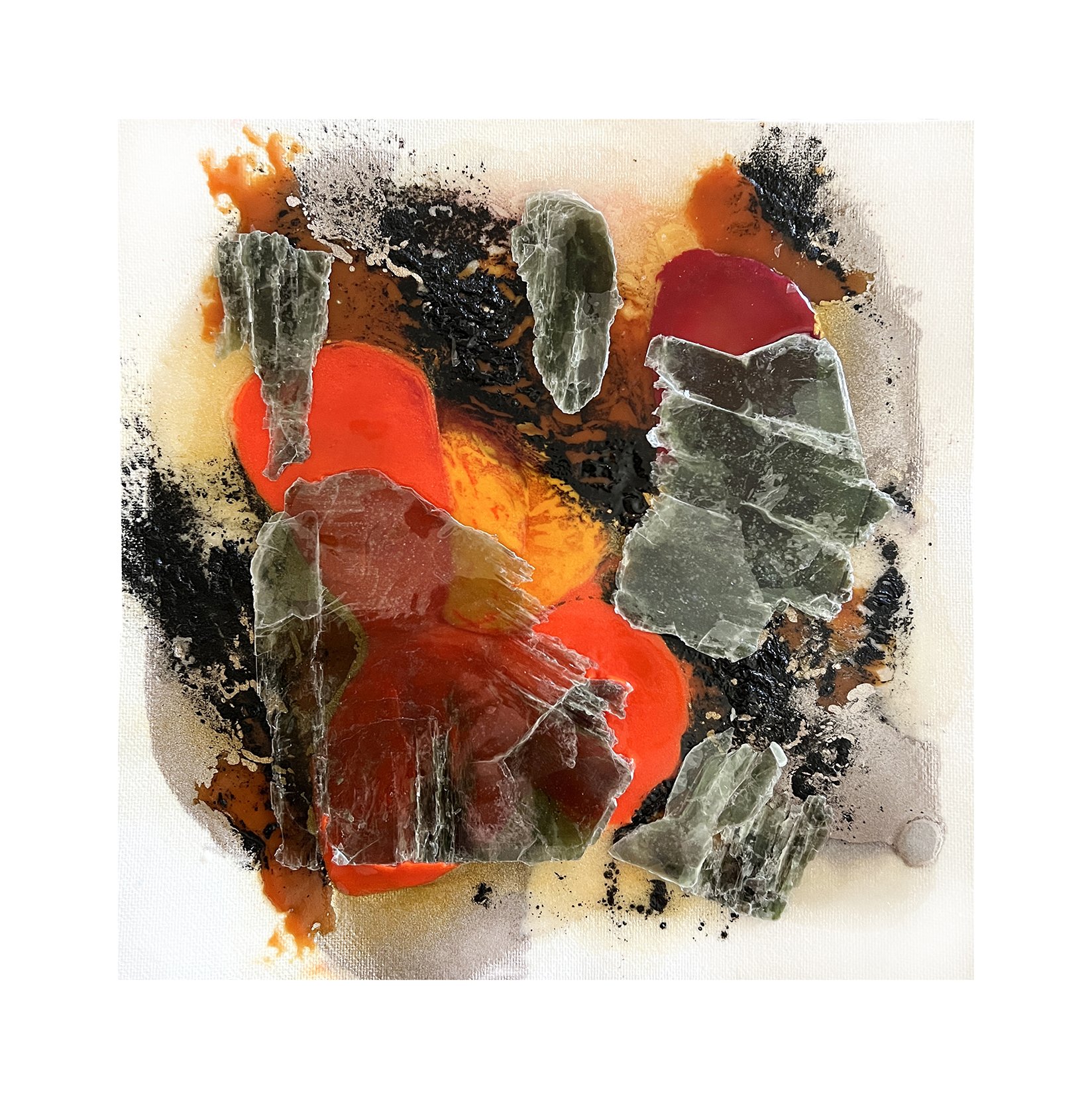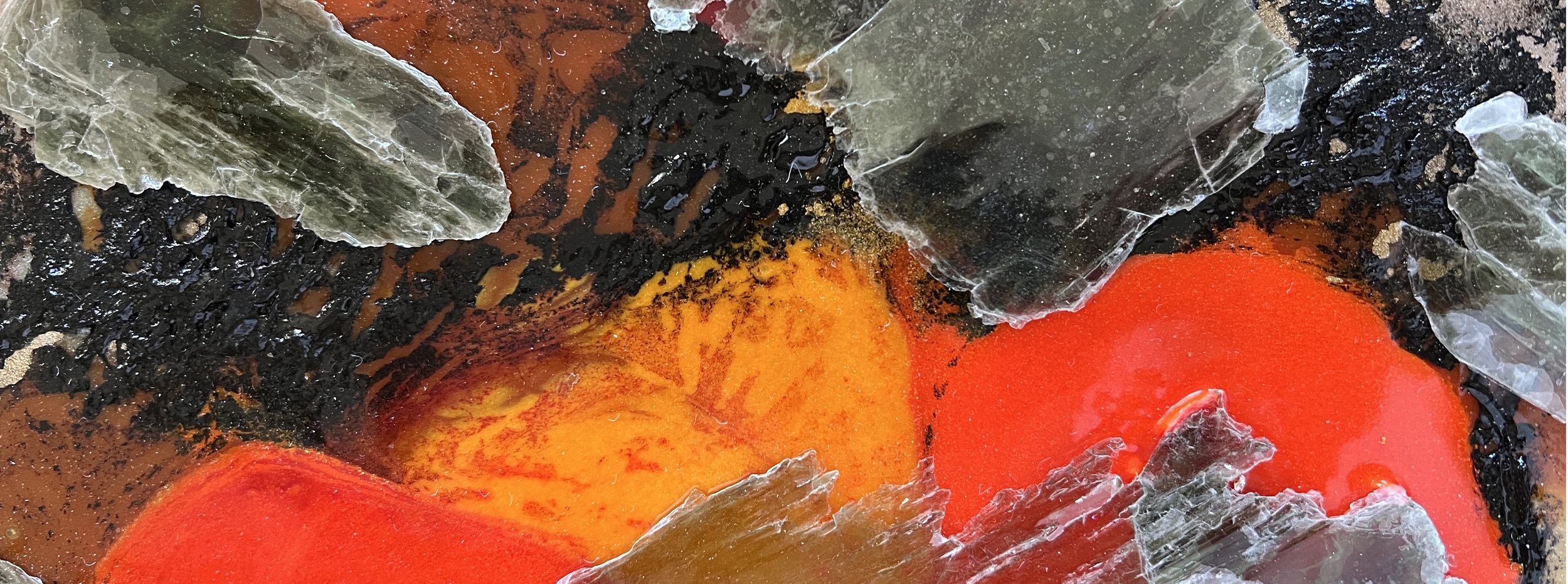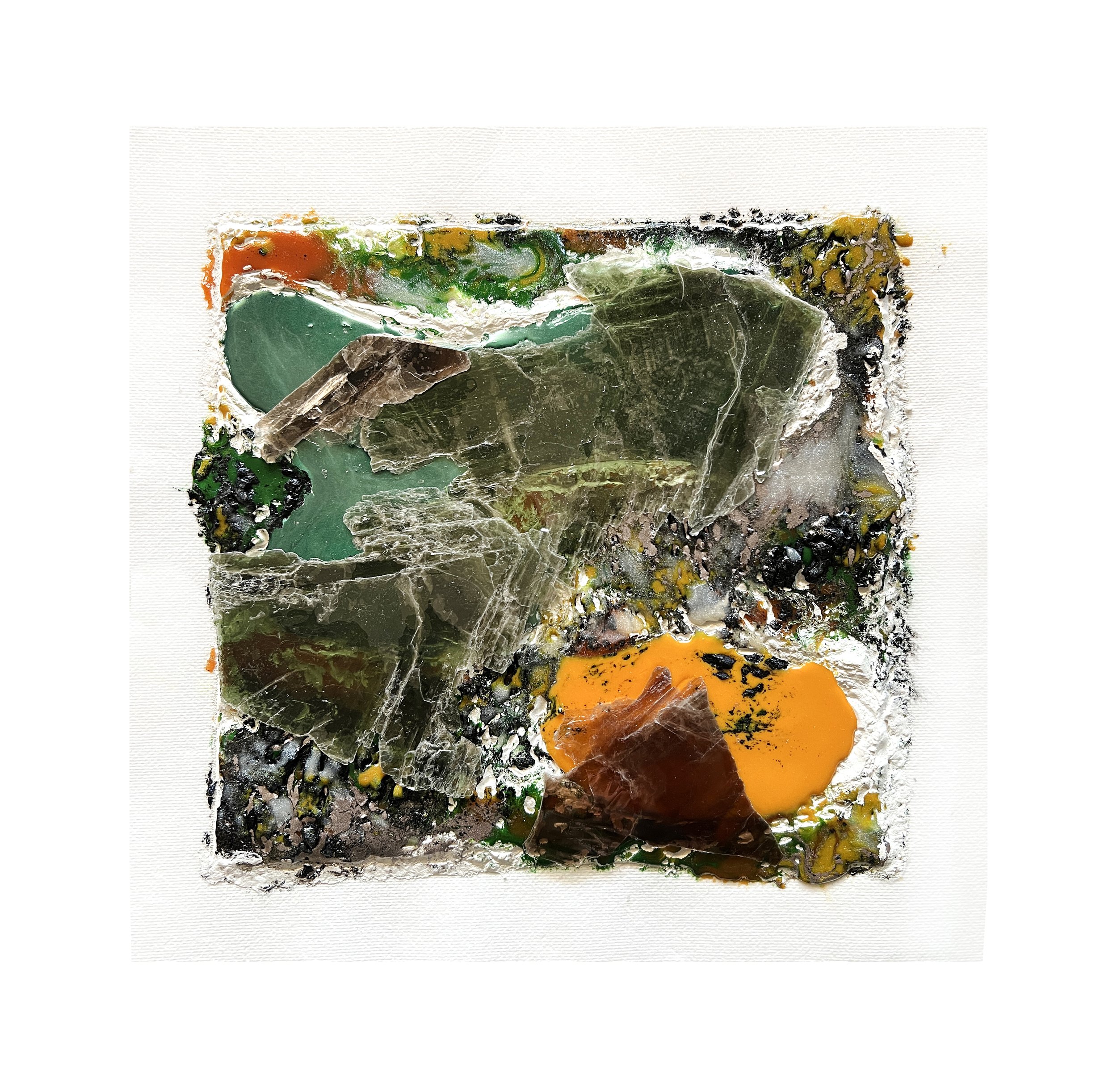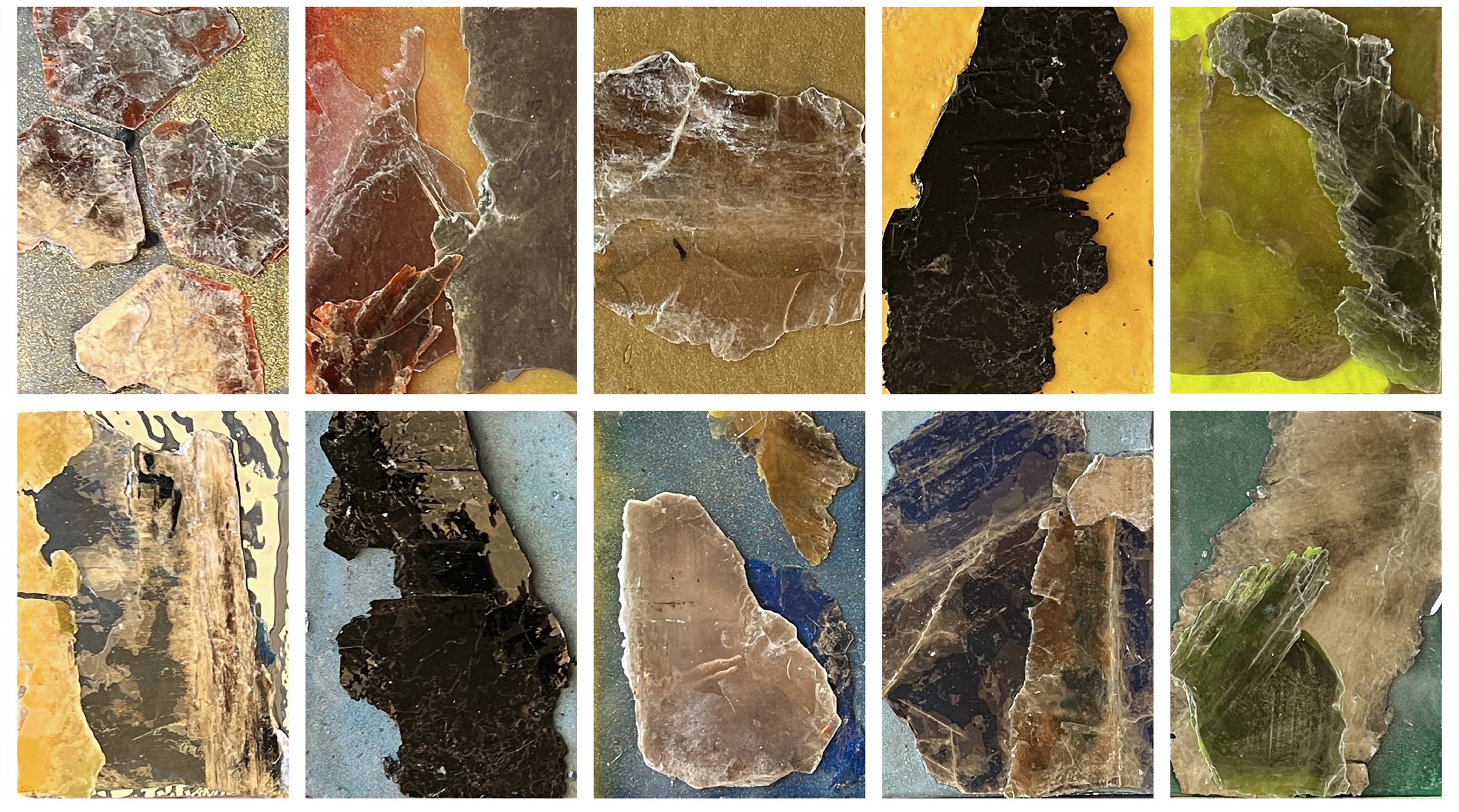
THE BOOK OF MICA
THE BOOK OF MICA
Paul Foss
Blasteran Frieze, Beverly Hills, 2024, mica panels, mica powder & applied color powder coating on lamp shade mica sheets, 171 x 36 x 1.25 in.
THE TALENTED SOUTHERN CALIFORNIA designer Micah Heimlich has incorporated mica into his creations for over a decade. This versatile mineral has found its place as cladding for furniture, decorative windows, lamps, and more. Recently, he has ventured into abstract art, blending techniques from sand painting, collage, and ceramics. These signature works blur the lines between design and art, chance and intentionality, gesture and automatism.
Mica, renowned for its cleavable and ornamental properties, boasts a rich history of cultural use. Its symbolic and practical appeal exists across many continents and contexts, in architecture, art supplies, and even as a cosmetic ingredient. Today, mica has wide applications in electronics and personal care products.
With its friability and mesmerizing chatoyance, mica has long symbolized the interconnectedness of existence. It embodies the concept of the “Ladder of Being,” representing a continuum that spans from the depths of the earth to the heavens above, reflecting humanity’s cosmic connection.
Through chance and experimentation, Micah Heimlich discovered that mica is a perfect medium for painting. Not only can mica mimic the traditional steps involved in creating pictures, but it also underscores their allegorical relationship with the earth’s underground furnace, the source of all precious minerals and gemstones.
Indeed, Micah Heimlich’s mica paintings unveil art’s primal ancestry and delve into the interplay between figurative and abstract forms. Examining these sedimentary layers brings viewers closer to the origins of Creation.
The art world overflows with emblematic “accumulations” where the line between artifacts and environments is fuzzy and indistinct. Micah Heimlich’s paintings belong to this tradition, whose extensive and ever-changing similitude defies conventional representation. The fixed boundaries between different art schools become nonsensical in this resemblance to a protean scene of universal mimicry.
Technically, Heimlich’s ongoing exploration of mica opens the elemental “Book of Mica” and progressively reveals its concealed layers, utilizing the mineral’s natural flexibility as a hinge between pure resemblance and illustration. In this timeless parable, painting returns to its rudimentary state, becoming a fundamental game with elements.
In Roger Caillois’s thought-provoking work, The Writing of Stones (1970), the Surrealist philosopher delves into art’s inherent mimicry and its connection to the sacred. By studying nature’s self-caricatures, resembling works of art, we can imagine acting and creating unblemished by the ego. This perspective admirably aligns with our ancestral fascination with shiny objects and ancient relics, which continue to resonate with us today. These signets capture our attention by highlighting the procrustean bed of all pictorial beauty.
Micah Heimlich’s mica paintings strive to exemplify art’s plutonic roots. They inherit timeless sensibilities and invite us into immersive environments where different states of being and perception intertwine. Yet despite their surface brilliance, they also illustrate the innate separations and losses in artmaking, shedding light on the limpid malleability of the natural world.



